The post Top 10 Things to Do in Rio de Janeiro appeared first on The Expeditioner Travel Site.
]]>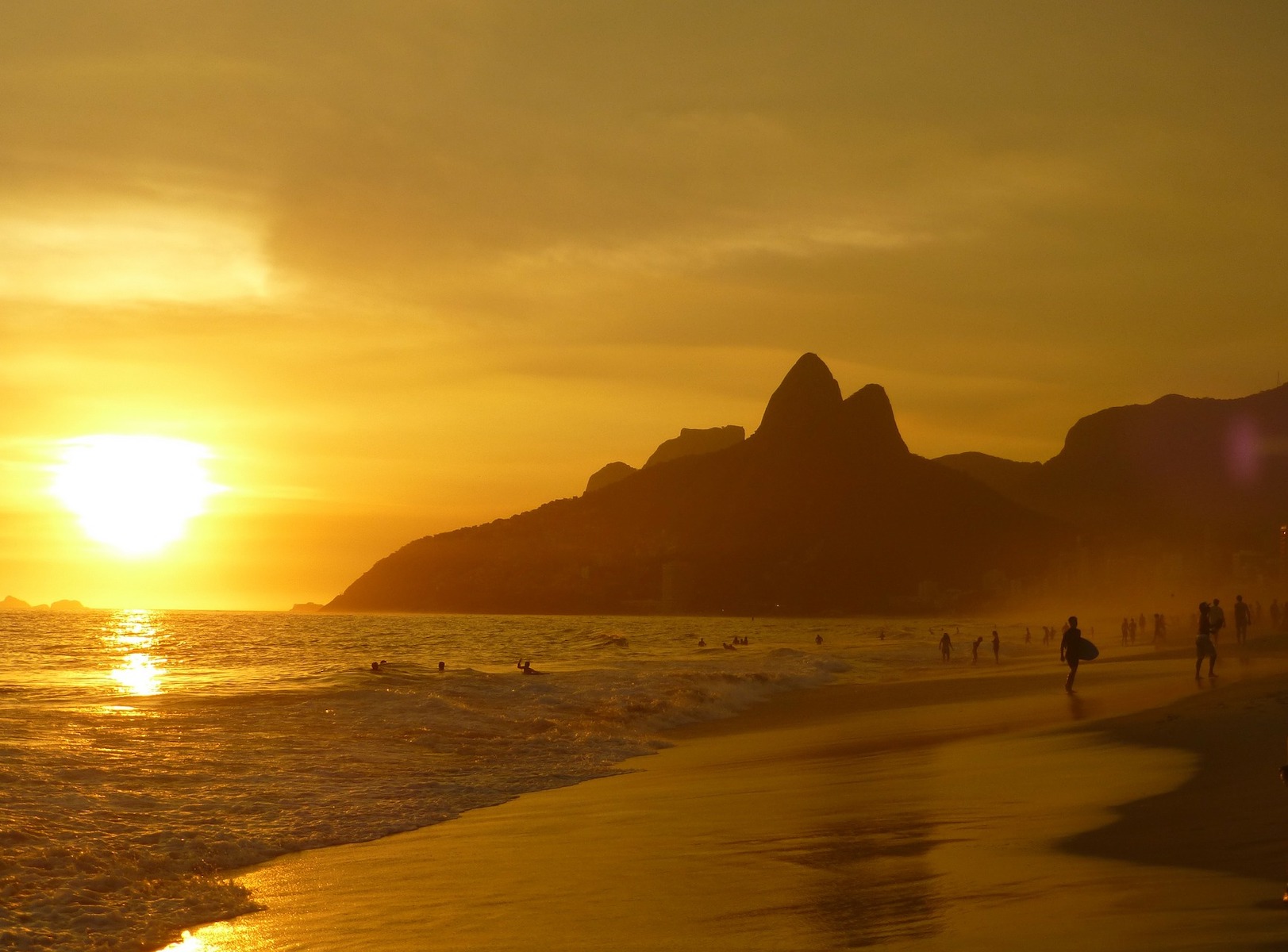
From all holidays in the sun, Rio de Janeiro in Brazil might be the one with the most activities to partake in. With its vibrant nightlife, iconic attractions and one of the seven wonders of the world, the city, which was once the capital of Brazil, has a lot to offer travelers from all different tastes.
1) Museu do Amanhã (Museum of Tomorrow)
Designed by the neo-futuristic architect Santiago Calatrava, the applied science museum aims to create an open dialogue about the next 50 years. It takes in consideration all of man’s alteration of the world in its primary state while emphasizing ethical values and shining light on issues that need our urgent attention. Aside from the expositions available, the museum also hosts year-round classes, workshops and discussion panels.
2) Parque Lage
Designed by English landscaper John Tyndale back in 1840, this park is surrounded by the Atlantic Forest and is located at the bottom of Corcovado mountain. Easily accessible to the general public, the park is also known as a cultural hotspot by locals, as it houses a 14th-century house turned into a visual art school. A popular place to take pictures or have a romantic brunch is at Bistrô Plage, located in the mansion’s central patio by the pool.
3) Hang Gliding
For the sports aficionado, hang gliding will be an exciting and unforgettable activity filled with the best views from above.
As one of the most popular wind sports in the city, there are a lot of reliable companies which you can hire hang gliding equipment from. The ones situated in Pedra Bonita have the easiest access, being only 20 minutes from the Ipanema beach, and are known for having the best views. During this experience, remember to wear comfortable clothes, sunscreen and avoid taking big bags.
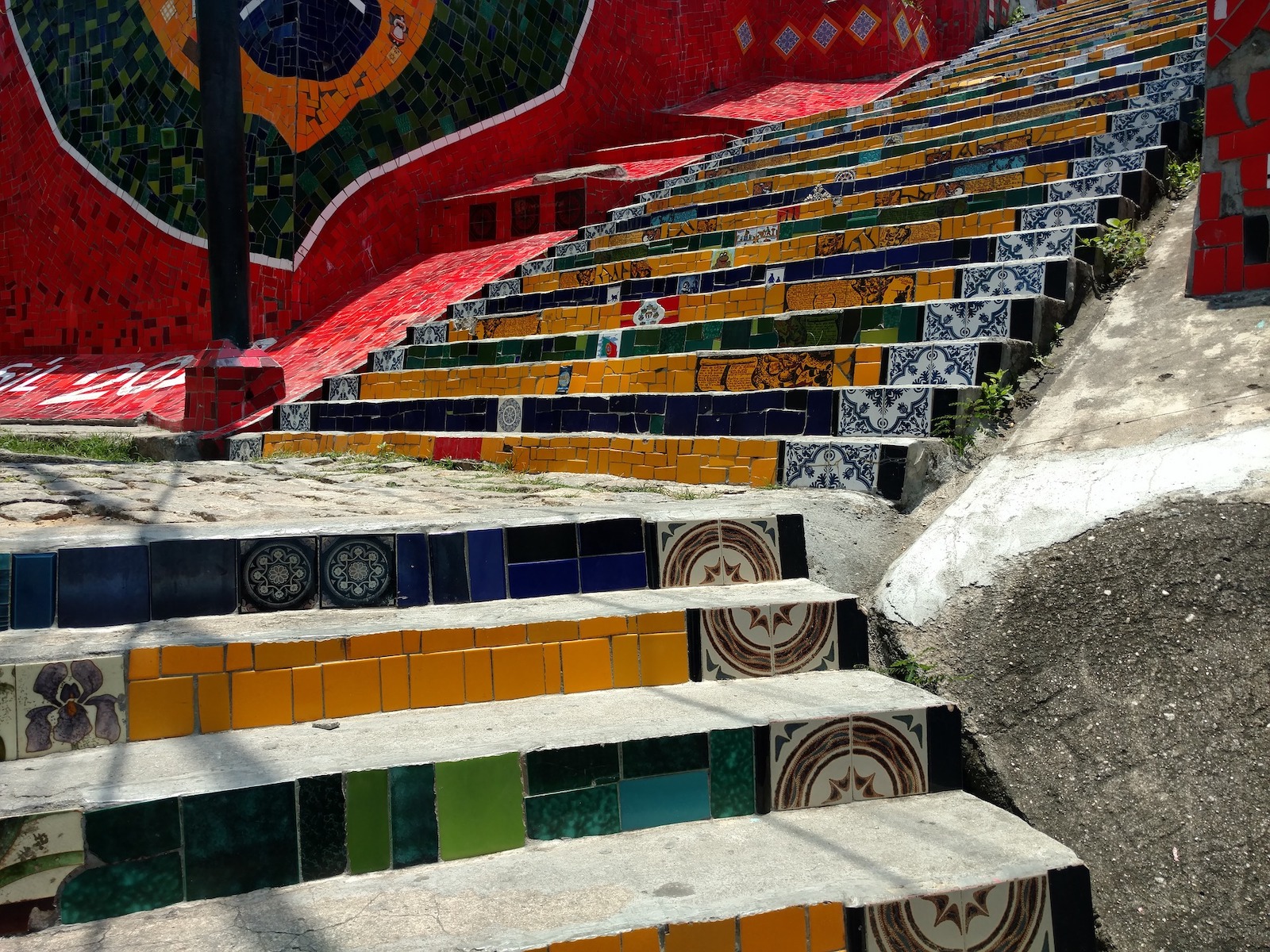
4) Escadaria Selarón (Selarón’s Steps)
Jorge Selarón, a Chilean-born ceramist, immigrated to Rio de Janeiro in the 1980s. Years later, in 1990, he decided to decorate the staircase near his house – which connects the Lapa neighborhood to the Santa Teresa neighborhood – as a tribute to Brazilians.
The staircase took 20 years to be completed and is made out of tiles and porcelain donated by Jorge’s friends and supporters. The landmark of 215 steps and the wall of both sides are decorated with painted tiles, now known as one of the most popular postcards of the city.

5) Maracanã Stadium
Officially called Jornalista Mário Filho Stadium, the soccer stadium is the most famous and largest in the country. Specially built for the 1950’s FIFA World Cup hosted in Brazil, the stadium got its nickname due to its location, the Maracanã neighborhood.
The historic stadium is known for many matches and moments of soccer history, but the most iconic one might be the 1,000th goal of soccer player Pele’s career. The stadium offers tours, but the best way to enjoy the place is by watching a soccer match, as soccer is one of Brazil’s biggest passions.

6) Lapa’s Nightlife
The Lapa neighborhood is known for being the center of Rio’s nightlife. When in Lapa, some of the must-do’s are watching a concert at Circo Voador, going for drinks at Bar da Boa, enjoying great Brazilian music and partying all night at the nightclub Lapa 40 Graus.
7) Ipanema Beach
The most famous and iconic beach of Rio de Janeiro (maybe the world), is responsible for inspiring the Brazilian song “Garota de Ipanema.”
The beach is the best place to take the perfect beach vacation pictures, especially at the Arpoador, the large rock that separates the Ipanema and Copacabana beach. At Station 9, many tourists and locals get together to watch the sunset, an experience which always ends with applauds from the public.
8) Irajá Gastrô
Opened in 2011, the restaurant with dishes by Chef Pedro de Artagão and drink menu by Julieta Carrizzo, offers the perfect pairing between food and drink. The restaurant only works with fresh and sustainable ingredients and has a cozy environment; the perfect place to go should you start to feel homesick or you’re simply looking for great food.
9) Sugarloaf Mountain
The Sugarloaf Mountain is made up of three hills: Sugarloaf, Urca and Babilônia. To get to the top, you can hike a trail or take the aerial cableway. The view along the hiking trails and on top of the mountain are both breathtaking, one of the best you will see during your lifetime. To get the most out of the experience, choose to go around 5 p.m. so you can watch the day transition from day to night.
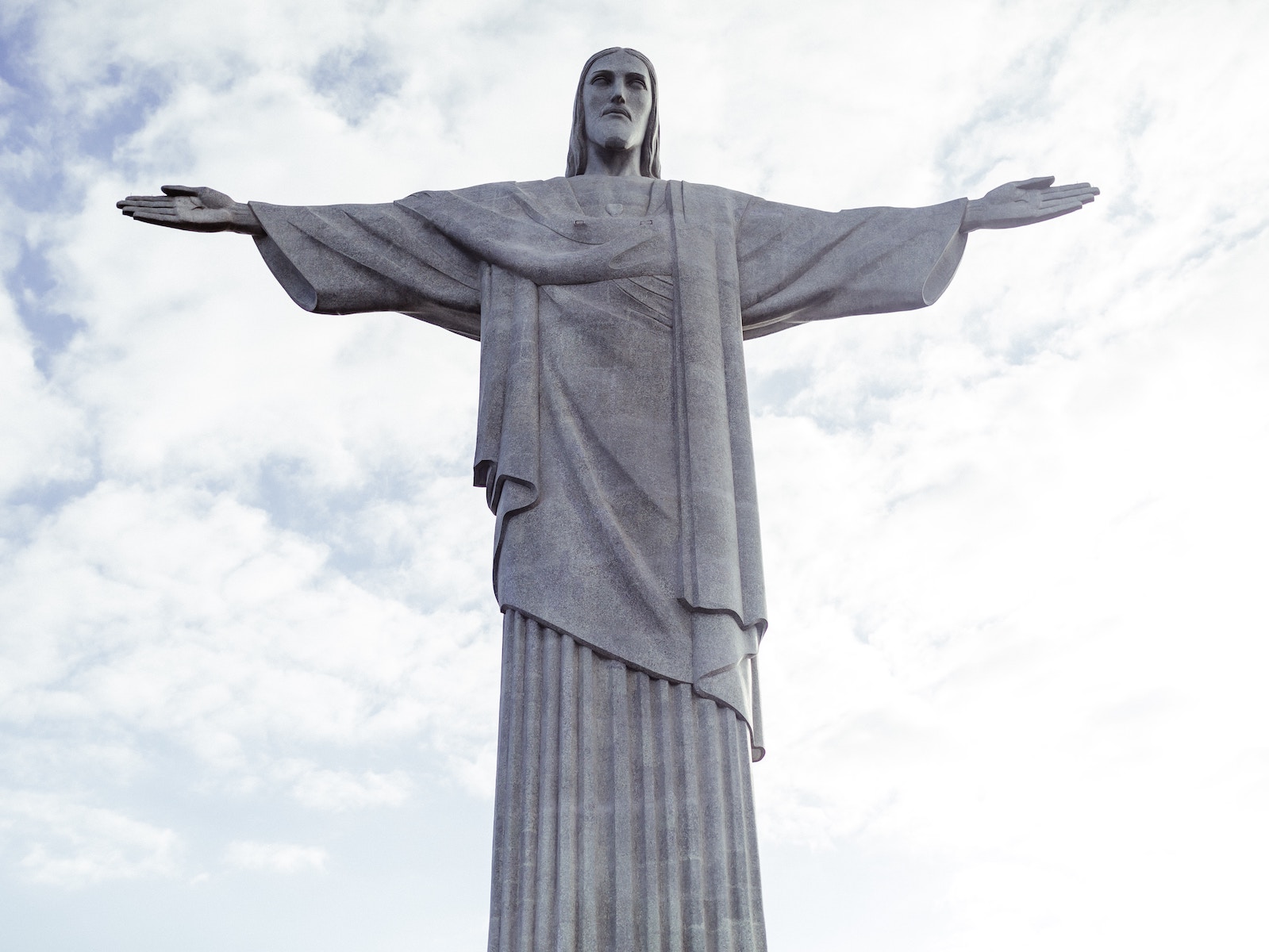
10) Christ The Redeemer
Hands down the most popular tourist attraction to see in Rio, the Christ The Redeemer statue is an Art Deco masterpiece created by the French sculptor Paul Landowski. It was built by Brazilian engineer Heitor da Silva Costa and French engineer Albert Caquot, with the facial features fashioned by Romania’s Gheorghe Leonida. The sculpture was finished in 1931, eventually becoming one of the 7 Wonders of the World in 2006. You can enjoy a picturesque view from a few parts of town or get on the Corcorvado train to reach the top. If you plan on getting the train, make sure to purchase the tickets in advance as lines to purchase tickets can take hours.

/
 Victoria Oliveira is a writer and translator from São Paulo, Brazil. Her first published article was for an international publication at the age of 14. She has since written for Matador Network, Youthgasm, The Culture-ist, and Elegant Magazine. She’s in love with desserts, learning new things, and exploring new places.
Victoria Oliveira is a writer and translator from São Paulo, Brazil. Her first published article was for an international publication at the age of 14. She has since written for Matador Network, Youthgasm, The Culture-ist, and Elegant Magazine. She’s in love with desserts, learning new things, and exploring new places.
The post Top 10 Things to Do in Rio de Janeiro appeared first on The Expeditioner Travel Site.
]]>The post Rainbow Mountain and the Search for Ausangate appeared first on The Expeditioner Travel Site.
]]>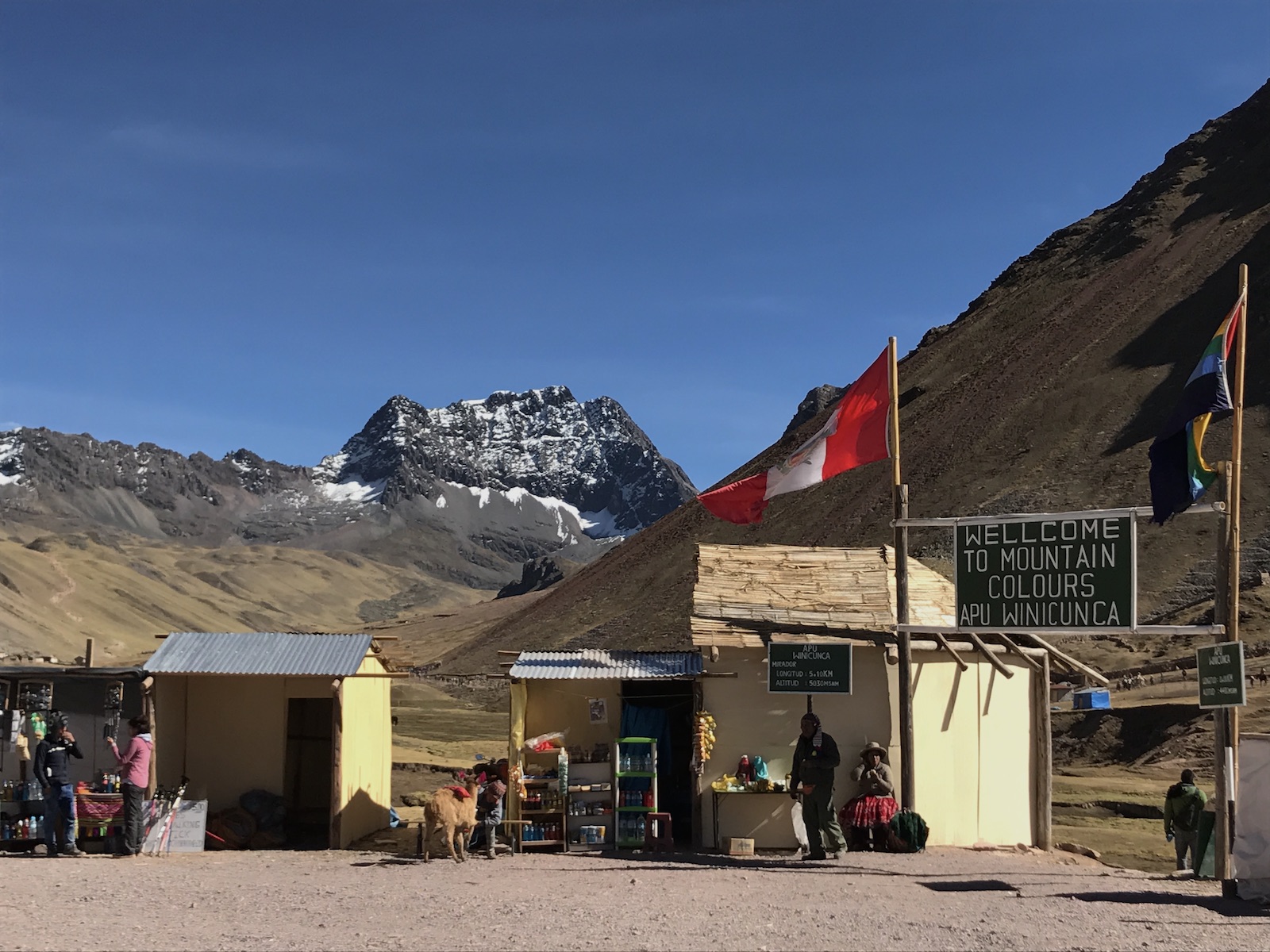
Ausangate Mountain, an “Apu” (or holy mountain) in the Quechua culture, rises to 20,945 feet in the Peruvian Andes, hovering nearly 3,885 feet above Rainbow Mountain in the distance. For perspective, that’s 3,345 feet higher than the Mt. Everest base camp, 6,456 feet higher than the tallest mountain in the Continental United States, and nearly 15,665 feet higher than the “mile high city,” Denver, Colorado.
After a punishing two-hour trek straight up, sitting at the peak of Montana de Colores (Rainbow Mountain) next to a small stone wall built by the direct descendants of the Incan people, I popped open my first beer and spun in a dizzying swirl of colors. Ausangate rose in the distance like a giant, its glacier so massive that I mistook it for sky.
Standing below it, I now understood why the Quechua people called this mountain a diety.
I felt like a pilgrim, my body bruised, battered and broken, surviving the hike up Rainbow Mountain — like the Quechua do once a year — to stand at the face of the wise Ausangate, who is believed to hold the answer to any question.
Three and a Half Hours to the Trailhead
“Three hours,” the tour agent had said, with no mention of what was to come.
Jess and I sat on the other side of the desk, excited to see Rainbow Mountain but wary of a three-hour bus ride beginning at 3 A.M. the next morning. We had been traveling so much already, and we were not eager to feel like herded cattle again, jumping from bus to bus with strangers and having no idea if we were actually headed in the right direction.
She went on to tell us that lunch was included and they would pick us up from our hotel, but the extent of her English faded when our questions began. Still, we agreed, because the picture of Rainbow Mountain on the flyer looked too good to pass up.
“Three hours,” she said again as if to reassure us that we were doing the right thing.
There was no mention of one of the most dangerous roads in the world and our madman for a driver. There was no mention of marching through native people’s land without permission. And there was no mention of the breakfast of mystery meat and Tang that was supposed to fuel us for a strenuous day of bus rides and hiking.
If I would have known about the ill preparation and altitude sickness that would wait for us at the top of Rainbow Mountain, I don’t know if any photoshopped picture would have been enough to convince me to go.
Although, in the end, I’m glad that I did.
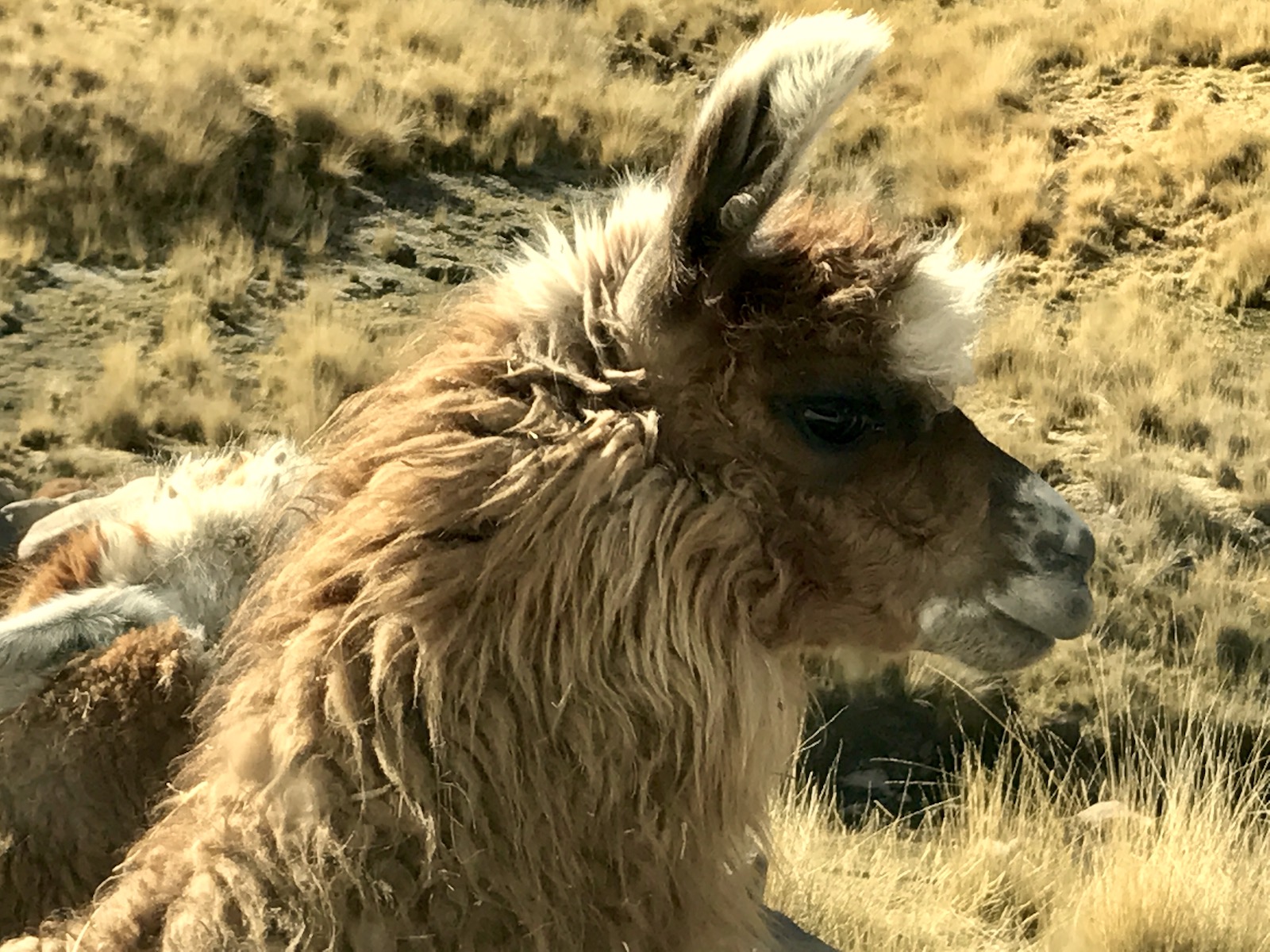
The Most Dangerous Road in Peru
The bus’s horn shook the gravel of the steep road. We had been speeding over cliffs, atop mountains and through deadly valleys carved by the rushing current of melted snow for an hour. The llama that often blocked our path gracefully charged out of the way of our madman driver as he threw us around turns with almost no regard for speed, sharing with us a sure image of our imminent bus crash.
I was silent, holding on to whatever control I had in silence, but others dealt with the terror of the road with laughter and jokes. We were all trying to pretend that our lives were not in danger, and we were all trying to hope that the ride would soon be over.
Bus after bus after bus moved through the villages in the valley like ants swarming a live beetle, honking their horns, telling the Quechuan people that they would not slow down — to get the hell out of the way. Sun-hardened faces peered up at us from fields filled with llama and sheep and crops still frozen by morning irrigation. We did not belong here, the faces said.
Children stared at us from fields or from the back of motorcycles that their elders drove, maybe wondering where we had come from. Of course, it wasn’t the first time that the indigenous people had seen a parade of buses move through their land like this. This road was built a couple of years before to shuttle tourists to the Quechuan scared site of Rainbow Mountain, and like everything else in Peru, sacred sites were big business: packaged, labeled and sold to the adventurous, first-world traveler, just like me. And judging from the number of buses that barreled through the villages, kicking up dust clouds that fell and covered the clay, hand-made structures of the Quechuan, business was booming.
“Three hours,” the tour agent had said the day before, but they were three hours that would turn into six. Two lanes that would turn into one. Hills that would turn into towering monstrosities of beauty. And ditches that would turn into chasms, showing us marveling views of our own possible death.
In the Shadow of Ausangate
“Everything conceals something else and there is no life without death . . .”
They were the words that I could not forget as I stumbled out of the van onto solid ground and stood at the trailhead before the Apu, the holy mountain.
Ausangate’s glacier scraped the sky and combined the line of earth and heaven. Its melting snow formed rivers that had cut the earth in half and created the life-filled valleys that the people we passed now called home.
It was no wonder to me that this holy mountain was a diety. It was no wonder to me that the people supposed that it could answer every question in life. It was no wonder to me that once a year the Quechua came from all over the region to search for answers and healing and life in this great Apu’s shadow.
The white of its peak was so untouched, so massive, that I double took. I had mistaken it for heaven.
Two Hours to the Top
The guide had said with broken English.
We had two hours to reach the top. Just two hours for a four-mile hike with a 5,000-foot elevation gain. Two hours of internal battle, broken spirits and escaped breath.
It’s right around the corner, I told myself.
But as I watched the mass of bodies move up the incline to where I thought the peak to lie, my heart dropped and my body shattered when the peak that I knew to be the top opened into a tundra wasteland.
To another peak.
To a distance that looked too far away to be real.
Each step brought us closer, but each step also brought us higher, toward thinning air.
I took my coat off, hoping that the fresh air and the lack of a heavy coat would help me breathe, but cold wind from the surrounding glaciers froze cold sweat to warm skin. My head was spinning from lack of oxygen and my fortitude was slowly leaking through the souls of my boots.
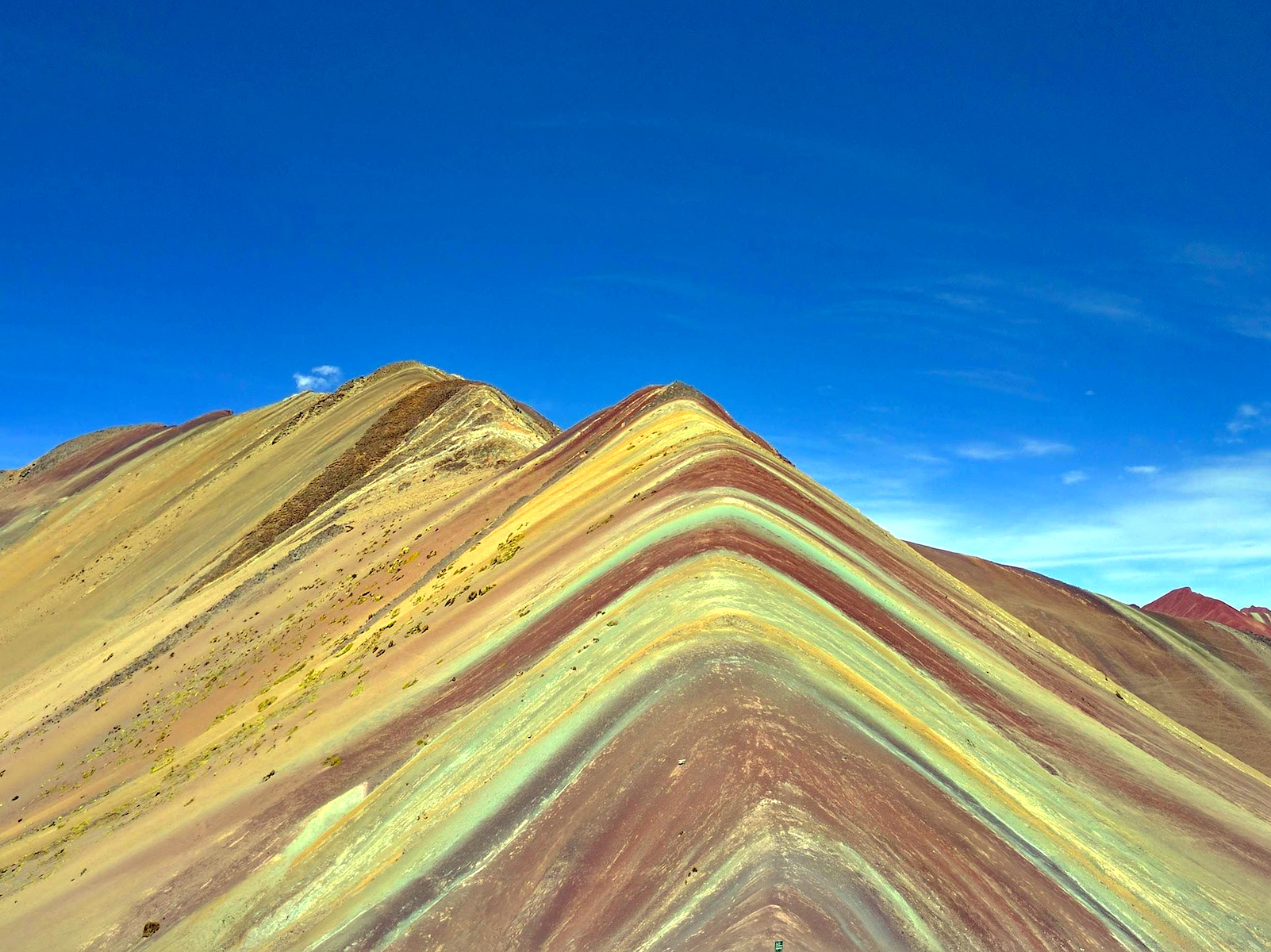
Caballito? (Pony?)
A Quechua man yelled at me.
Then another.
Then another.
They waited for my answer but ran past me when I didn’t speak. Some were wearing sandals. All were wearing short sleeves and did not seem to feel the cold or the lack of oxygen or the steep incline.
My eyes fell to my feet, hating the fact that I did not feel prepared. I was not used to the elevation, and I could no longer enjoy the beauty of the mountains with my head feeling like a balloon. With each step, my legs screamed and my lungs wanted for more . . .
Air, they said.
“Caballito?” another man asked.
“No, Gracias,” I said in my head, but the words would not come out. I could no longer afford to talk. The hike was becoming a lesson in suffocation.
“Caballo?” came a voice, then another, but I heard nothing. Only my own voice spoke quietly, telling me to put one foot in front of the other, to not look ahead. To just keep breathing. To take a break when you need it (which ended up being about every 20 steps).
This is only a small part of your life, I told myself, and I was right. The end was in sight.
When I finally looked up, when my eyes followed the line of bodies who were making the same journey as me, I knew that we were about to reach the top.
Steps rose before us, and we took them each with a painful gait, stopping every few to convince our legs to continue forward without air.
We were out of water. My legs felt broken. But there was light in the distance.
I saw a man selling beer at the top, and I felt a motivation to reach it as I’ve never felt before.
Rainbow Mountain
Rainbow Mountain sits roughly the same altitude as the Mt. Everest base camp. As I sat at the top of the mountain, cowering beside a small, stone wall that blocked the wind, my eyes beheld a sight that washed away the pain of the journey.
Red, yellow, green and blue combined on a ridge in stripes, each running into each other, each standing out from the other. The colors aligned in a sedimentary pattern that the wind had revealed over the ages, but it wasn’t just the colors that made the sight one to behold.
The Apu hung powerfully from the sky as if he had defined these colors. This place seemed to exist to grind a person to nothing. To make doubt of completion one’s singular thought. To crush one’s spirit so that they would be ready for the truth.
I sat at the top of the mountain with the woman I loved, gazing at the legend of an Apu who had the answer to any question I dared to ask. We had done the hardest thing that I had done in recent memory, and we had made it.
To ask a question seemed needless now.

/
 Nathan Standridge is a traveling writer based out of Asheville, NC. He’s been seen trekking through San Franciscan streets at 4 A.M., drinking whiskey during a tornado in the Ozarks, and existing in silence among the temples of Chiang Mai. Follow his adventures through Thailand, Peru, and Italy at Foundinpursuit.com, or check out his book Change, available on Amazon.
Nathan Standridge is a traveling writer based out of Asheville, NC. He’s been seen trekking through San Franciscan streets at 4 A.M., drinking whiskey during a tornado in the Ozarks, and existing in silence among the temples of Chiang Mai. Follow his adventures through Thailand, Peru, and Italy at Foundinpursuit.com, or check out his book Change, available on Amazon.
The post Rainbow Mountain and the Search for Ausangate appeared first on The Expeditioner Travel Site.
]]>The post Maximón: Guatemala’s Chain-Smoking Savior appeared first on The Expeditioner Travel Site.
]]>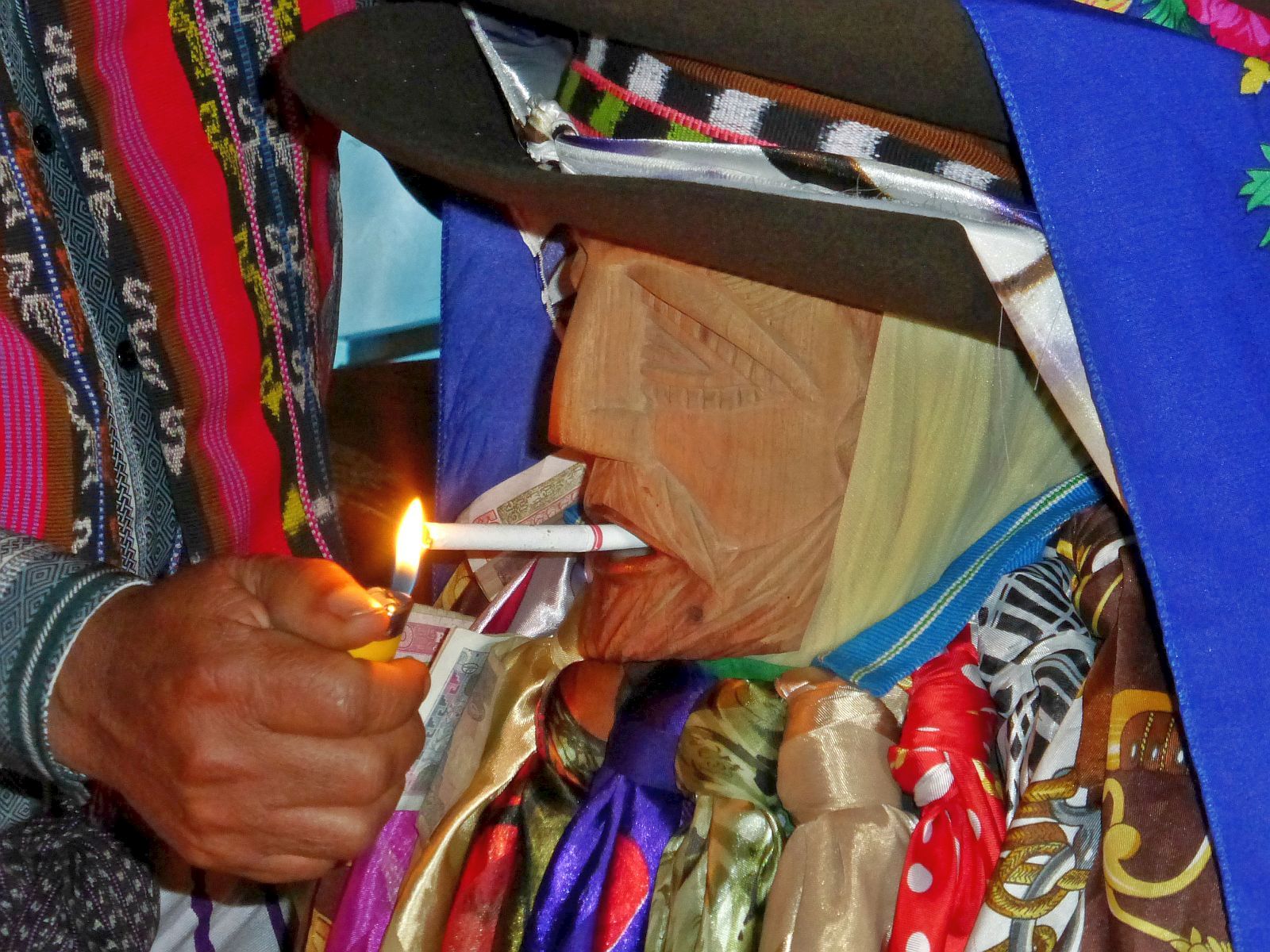
Floating mosaics of water lilies hug the sunken interiors of old buildings that line both sides of the dock. I sigh while staring at the jagged cement tops that barely pop above the surface. Water levels here have been rising steadily over the past 50 years.
“There used to be a huge park here . . .” the boat driver laments.
In many ways, Maximón — the vice-laden trickster deity of the Guatemalan highlands — is like these buildings. His foundations are visible yet submerged, planted below the surface yet reaching above. Like much in Latin America, he’s a mix of Spanish and Indigenous influences; a combination of San Simon from the Catholic tradition and earlier Mayan deities. To many of the Maya in Guatemala he’s known as Rilaj Maam.
Although his origins lie in the murky depths, legend states that Maximón was quite a Casanova back in the mythopoetic day. One day, while the men were off farming, he seduced all their wives. Upon returning, the angry farmers chopped off both his arms and legs. However, life hasn’t been that bad for the legless/armless deity.
Today you can find Maximón in many places throughout Guatemala, but Santiago Atitlán is the most famous. There you can see him draped in a garland of clip-on ties with a wide-brimmed hat dangling with silk as he’s offered gifts of Rubios cigarettes, bottles of Quetzalteca and money, in exchange for help in areas of business, marriage, crops, health, death and more.
On a cloudy afternoon during Guatemala’s rainy season, Sue, my travel companion, and I set out to find this notoriously dubious deity. There is something deeply appealing about a saint who can knock back a few shots of Quetzalteca — the harsh local hooch named after the national bird — and then dole out wisdom to those in need. He felt approachable.
We crouch onto the simple wooden benches of a water taxi, or lancha, at an empty dock in Panajachel and head off. It’s 30 minutes to Santiago Atitlán.
This city in the highlands is nestled between three volcanoes (Tolimán, Atitlán and San Pedro) and faces a lake Aldous Huxley famously called “the most beautiful in the world”: Lago de Atitlán. At 50,000 people, it’s the largest of the lakeside communities in Lake Atitlán.
Most of the local women wear purple-striped skirts and huipiles with floral designs and the older men are known for their white-striped pants. It’s an artistic hub popular for its Tz’utujil oil paintings — vibrant canvases that often depict a bird’s-eye view of rural scenes and landscapes.
Long before the arrival of the Spanish, the Tz’utujil Maya called this place Chuitinamit. It was their capital. To this day it still holds the largest population of Tz’utujil Maya in all of Guatemala. In 1547, in an effort to consolidate indigenous populations, Franciscan friars changed the name and established the town of Santiago.
At the height of the civil war in the 1980s, the Guatemalan army cracked down on the left-wing guerrilla presence here by killing and causing the “disappearance” of hundreds of villagers. A brutal massacre in 1990 saw 13 Tz’utujil Maya slaughtered by the army. Public outrage grew so strong that, for the first time in their history, the army was ousted by popular demand.
An elderly woman with cataract eyes and a handful of teeth walks barefoot down the street. On her head she balances a basket of bananas. We buy some, then ask for directions. She answers softly, in Tz’utujil, and sensing our baffled expressions, throws up a hand and points.
Down the road we go, past a gaggle of vendors and into a dead end. Left. Right. Hmmm . . .
“Maximón?” we ask and two kids hop into action — “come on” — and lead us a few yards down the road to a nondescript alleyway where a chicken slowly pecks away at his tin of food and a woman hangs up laundry to dry. We hand them a few quetzales and off they go running.
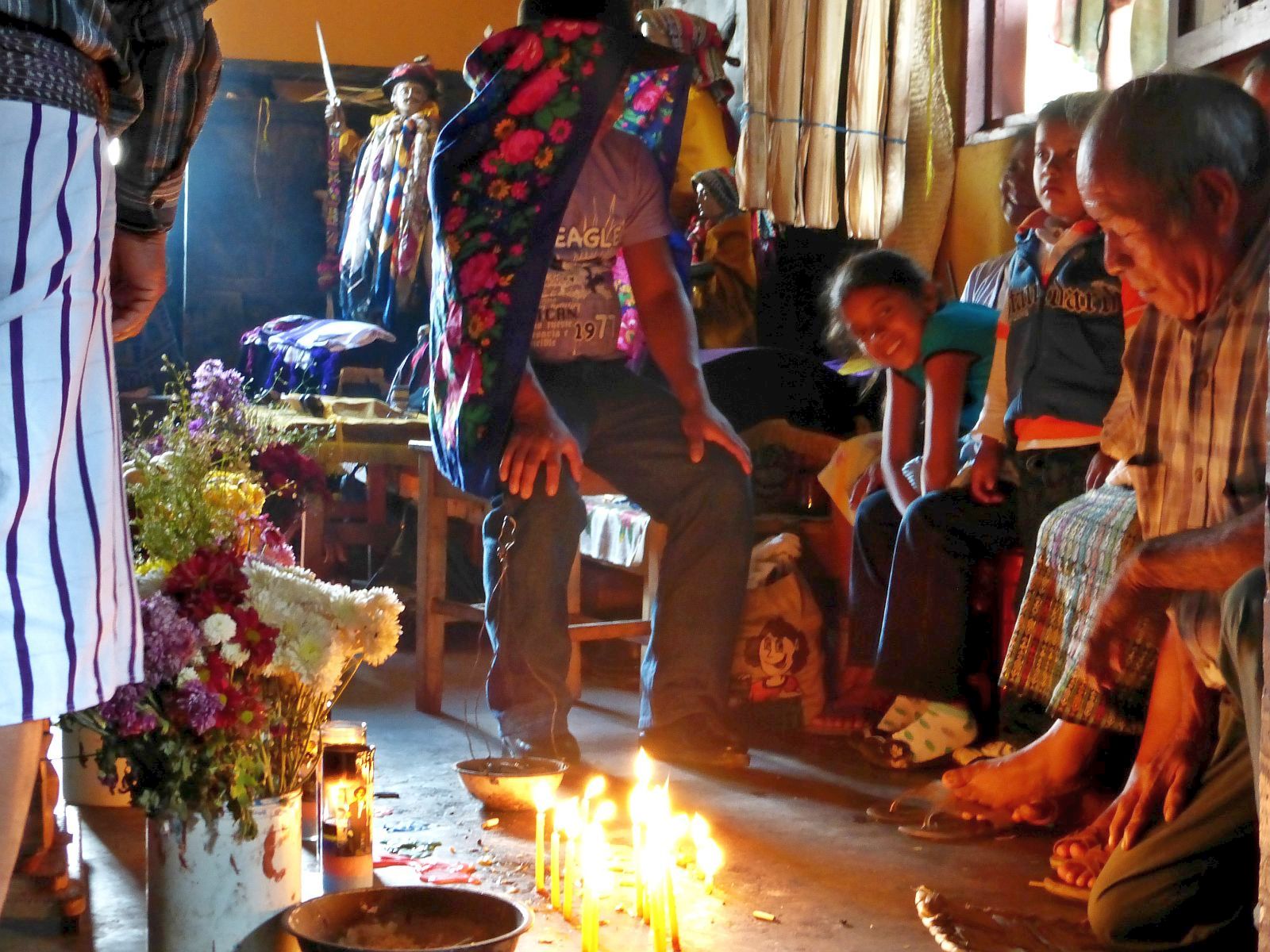
Inside the home, torrents of Copal incense are swirling back and forth, mimicking the laughter of the swaying drunks outside. The drunks are stumbling around their playground bar, gulping plastic bags filled with Quetzalteca that is stockpiled in bottles near the door.
Upon entering, a bored 12-year-old takes our entrance and “permission-to-take-photos” fee and heads off in the corner to ogle the scantily clad supermodels of the local periódico. We sit cross-legged, somewhat outside the ceremonial space, and try to be unobtrusive, a task that, many travelers come to learn, is nearly impossible.
We tease out our cameras and quietly snap a few photos as the ceremony begins.
A Man Asking for Help is sitting on a chair with a cowboy hat that’s drooping with floral cloth. His eyes meet ours for a brief moment, then turn back. Next to him on the bench is his family: a few small and restless children, a smiling wife and a stoic mother. Kneeling on three straw mats in front of 12 lit candles is an elderly man reciting prayers in Tz’utujil.
Patrons at the outdoor bar are cackling in the background and a man in a maroon-colored shirt who’s wearing dark sunglasses is talking on his cell phone as an unkempt dog lies nearby slowly licking his genitals. The Man Asking for Help is sitting inside this chaos, enclosed in the partial safety of family and prayers, and asking his silent questions. The elderly man is straightening out a wax candle stuck to the cement floor.

Ashtrays and candles separate us from Maximón, who is sitting immobilized between two helpers as he calmly puffs away at a Rubio cigarette. The gray ash falls to the floor as the smoke rises. The helpers are pouring him a shot of Quetzalteca and, soon after that slides down his wooden throat, they continue plying him with liquor, this time a glass of Gallo, the popular Guatemalan Beer.
These man are part of the cofradias, a respected few who are tasked with maintaining the proper veneration of Mayan and Catholic deities (observing their feast days, caring for them, etc . . .). This tradition was brought over from Europe to Guatemala by Franciscan missionaries in the 16th century. Their goal was to convert the locals, but the cofradias were reformatted to fit the personalities and schedules of important Mayan deities.
Just like the sudden influx of Europeans during the 16th century, the clamor and disruption of a large tour group is piling into the small room. As they begin complaining about the wafting smell of Copal and dust that envelopes the room, Sue and I know that it’s time to leave. We gather what we brought and slip out quietly, strolling down the narrow alleyway and onto the cobblestone streets.
As we wandered back towards the lancha, I reflected on this enigmatic deity. Maximón’s home had a unique feel to it that arose from the fact that it was not made to be unique. It wasn’t floating on some glorious mountaintop nor hidden in a far-off cave. It was calmly constructed inside a humble room next to a bar down a back alley.
Maximón was very much of this world and the ceremony was a jigsaw mix of the sacred and profane. Perhaps this was best for a saint who drinks, smokes and sleeps around. For someone who has made a mistake or two, this is a saint I could relate to: a saint who, at times, has been unsaintly.
 Matt McGuire is a freelance writer and odd-jobs worker with a love for notebook paper, good books and the unwritten lines of the open road. His blog can be found at ThoughtWalks.com.
Matt McGuire is a freelance writer and odd-jobs worker with a love for notebook paper, good books and the unwritten lines of the open road. His blog can be found at ThoughtWalks.com.
The post Maximón: Guatemala’s Chain-Smoking Savior appeared first on The Expeditioner Travel Site.
]]>The post Go To Guate: Climb Acate appeared first on The Expeditioner Travel Site.
]]>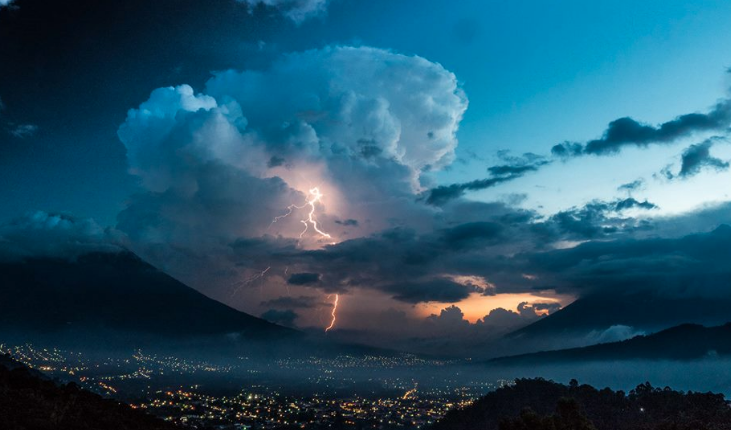
Examining my sleeping bag as I unravel it, I am relieved to see it is a proper sub-minus piece of kit. Not that I’m some sort of born-again Edmund Hillary-type, but you never know with these “adventure tour” outfits — some of them may as well send you off with a handkerchief and a glass egg cup for all the credibility of their equipment.
But nope, not this time. Be gone nature, we have Thinsulate!
I sink back into the legitimacy of down and allow my eyes to close.
BOOM.
Eyes snap open. Bolt upright, I scramble towards the entrance of the tent. Fumbling with the zip, the air fills with whoops and cheers of our fellow campers. Their glee echoes fragile and human above the rumble of earth belly beneath us.
Parting the canvas flaps — and there is no way not to make that sound gross — I gasp. Audibly. Like a cartoon character. Or, perhaps more aptly given the flap-parting, a porn-star.
What. A. Sight.
The moon is rising to the east of us. The sun is setting to the west. A sea of clouds drifts across the floor of Antigua valley, tinged orange, then pink, then violet as night draws in. Gradually stars emerge to pierce the purple blue of a deepening sky, winking coyly to the lightning that dances between distant thunderheads.
Bonfire crackling, colors melting: it’s the magic hour . . .
Then, once again: BOOM!
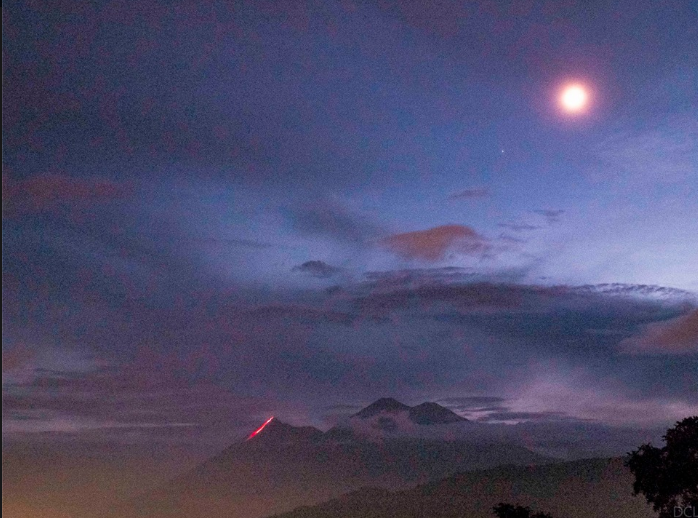
It’s a rare thing to observe a volcanic eruption at eye level, but this is Guatemala, and I have long since come to expect the fantastical. And indeed, here we are on the side of a volcano, watching another volcano erupt.
This shit just got Tolkien.
As the third highest volcano in the country, standing at 3,976 meters, Acatenango affords unrivaled views of its rather more rambunctious twin, Volcan De Fuego. It is, if you will forgive the metaphor, the relative safety of Middle-Earth to a sinister Mordor.
Having said that, I rescind my plea for forgiveness, for this is Gandalf territory indeed, and I defy you to contest this claim once having made the climb. You are even given a staff to assist you in the ascent for goodness sake. I mean, they call it a walking stick, but it’s so much more than that.
The next morning we rise at 4 a.m. to summit by sunrise. It’s high, its early and cold as balls. But it’s worth it.
The peak offers a terrific panorama of the coastal plains down to the Pacific in the South, and across the Guatemalan Highlands — including Lago de Atitlan — to the south. It is up there with one of the most beautiful sights any reasonable individual could ask to see in a lifetime. A smoking crater, 360 vista, proper breathtaking. Not that you’ll be able to take a picture of it if you are relying on your smart phone. Apples don’t like being chilly at altitude, apparently, so be aware that your camera will likely be hibernating when you need it most. Steve clearly wasn’t a man of the mountains. Or just really liked frozen fruit.
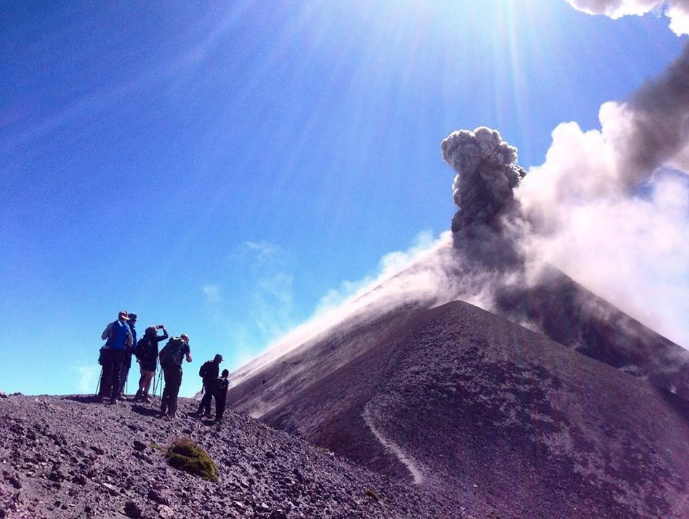
While it might seem that every man and his mother is offering trips up Acate out of Antigua, Guatemala, it really is a case of getting what you pay for. There are plenty of cheap-o alternatives, but having opted for Old Town Outfitters, I can recommend them highly. These guys know the mountains, they know their gear and they know how important it is to work in harmony with the local community.
Unlike the majority of the other tour companies operating this trip in the area, you will start your expedition from La Soledad, a small highland village about an hour’s drive outside of Antigua. Here you will pick up your local porters who, quite honestly, do most of the hard work for you, before setting off through farmlands to the trail, as well as start to get a sense of the role these volcanoes play in the daily lives of the people who live here.
So what are you waiting for? Go forth and channel that inner wizard! Oh, and this is a relatively strenuous hike, so dress accordingly, i.e., don’t be that douche wearing Converse.
P.S. Appropriate trekking attire may also include adorning yourself with a cloak and making the climb as Mr G. The Grey himself. In the event you subscribe to this option, kudos. Also, let’s get married.
***
[Photos 1 – 2 by David Leonowens; Photo 3 courtesy of Old Town Outfitters]
Old Town Outfitters, Adventureguatemala.com.
/
 A journalist, human rights advocate and development professional, Hannah is currently located somewhere in the vicinity of Central America. As Lead Creative for an international freedom of speech project, she is passionately exploring ways to engage people and instigate positive change through innovative use of media, the arts and story. When she isn’t working, she’s probably scuba diving or being angry about Brexit. Life goal? Owning a house pig.
A journalist, human rights advocate and development professional, Hannah is currently located somewhere in the vicinity of Central America. As Lead Creative for an international freedom of speech project, she is passionately exploring ways to engage people and instigate positive change through innovative use of media, the arts and story. When she isn’t working, she’s probably scuba diving or being angry about Brexit. Life goal? Owning a house pig.
The post Go To Guate: Climb Acate appeared first on The Expeditioner Travel Site.
]]>The post How To Pack A Wet Tent: A Trek Through Torres Del Paine, Chile appeared first on The Expeditioner Travel Site.
]]>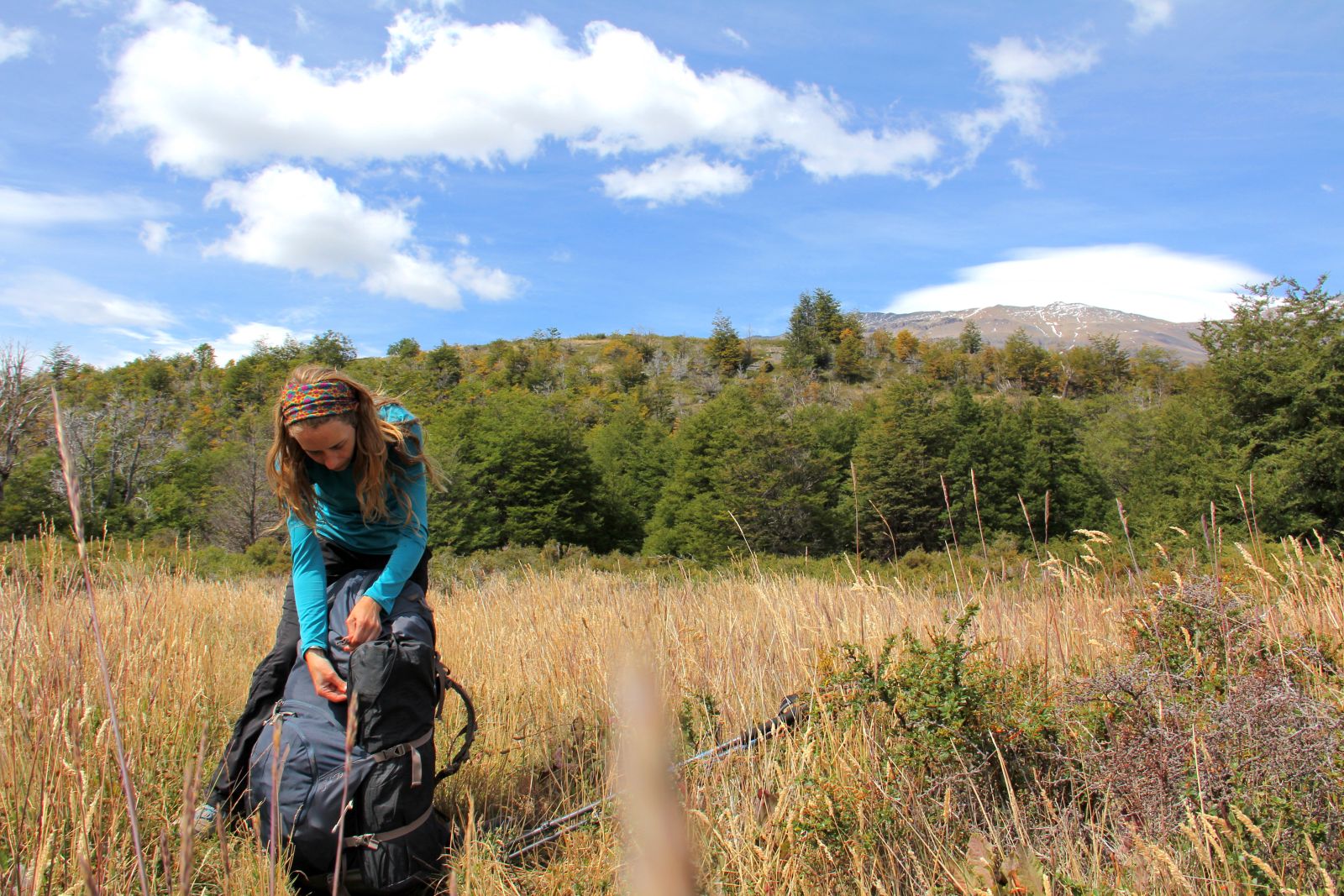
The mountain itself seemed to be hurling millions of tiny frozen pellets from every direction, some even rising up from the ground, all apparently aimed directly at our eyeballs. It was impossible to tell the depth of the snow, as it blasted across some rocks leaving them bare, and piled improbably high where larger rocks prevented its determined chase of the wind.
“You are lucky, this is the first snow of this year!” A park ranger gleefully shouted to us, bouncing by on legs that were much surer of the terrain than mine.
“Lucky?!” was all I managed to respond.
“Yes! We haven’t had snow since December, you’re the first to see it!”
At this point my boyfriend and I were halfway up Paso John Gardner, the highest point on the famous Paine Circuit, a backpacking route around Torres Del Paine National Park in Patagonia. The route forms a 75-mile loop around the sharp peaks and vertical towers of the mountains clustered in the center.
The park beckons hundreds of travelers to visit each day during high season (December through March), with more piling in each year. The insanely high popularity of the park necessitates strict rules for the hikers: no wandering off the single-marked trail, no camping outside designated tent sites, no walking on the trail at night. A trek through Torres Del Paine is not exactly a lonely wilderness quest, but nor is it approaching the sterile entertainment of a crowded Disney theme park, as some people claim.
The trek certainly lacks the creature comforts of a Disney Resort. The moment I woke up on the morning we planned to hike the pass, I regretted it. Before I opened my eyes, I heard weary drops of rain slapping the tent, the remnants of the assault of the previous night’s storm. I kept my eyes shut, trying to convince myself the sound was fading. “It will stop in a few minutes, I should stay in my sleeping bag for now,” I thought.
It didn’t stop.
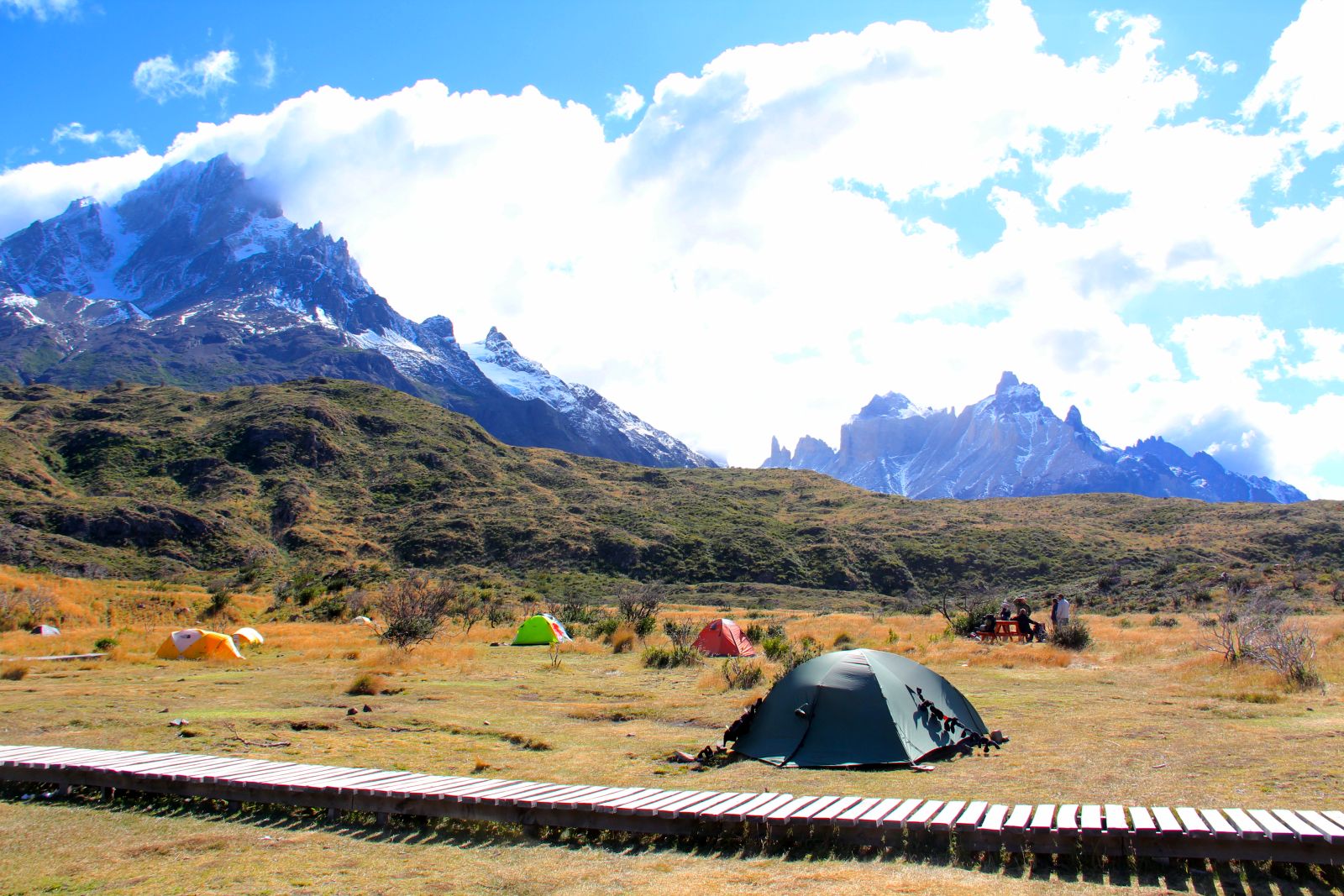
The necessity of getting an early start on the pass, however, eventually dragged me out of the relative comfort of the nylon walls. It’s not that I didn’t want to be outside in the rain. I can deal with putting on my rain jacket and shivering a bit in the sharp morning air. It’s that I was poignantly aware of the excruciating task that sat in front of us, like an unavoidable pile of dog shit in the streets of Santiago: packing the wet tent.
We knew we would probably face this challenge at some point on our nine-day trek. Patagonian weather is notoriously moody, and the rangers even posted a sign at one campsite that reads: “Don’t ask us about the weather, it’s Patagonia!” In a single day, a hiker can seemingly experience all four seasons as the weather turns from sunny and warm to windy and rainy to snowy and cold.
During this particular morning, a drop in temperature caused fat, wet snowflakes to begin interspersing themselves among the tired raindrops by the time we finished breakfast. The only task left was to pack the tent. Mud had made its way into every crevice, and by the time we’d wrestled the clogged buckles apart and peeled off the sopping rainfly (that part of the tent meant to deflect rain) our hands were already stiff with cold. Each time the tent fabric brushed against my hands, it felt like sandpaper was being rubbed against the raw skin. My boyfriend and I did our best to stay patient as we folded the rainfly.
“Fold it in half. No, the other way.”
“I thought we wanted to fold it in on itself?”
“That’s what I’m doing!”
“Give me that corner. No, not like that.”
“It won’t fit like this though.”
After a tense minute, the rainfly was piled into a vaguely rectangular shape on the ground. Next were the stakes and poles, which were apparently cemented into their clips by a combination of mud and gravel. Once we finally coaxed them out and the poles were collapsed, it was time to roll up the tent with the rainfly.
The ground was too wet to kneel as I normally would, so I squatted like a frog and laboriously scooted forward as I rolled the fabric as best as I could with hands that refused to bend. Tears of pain and frustration blurred my vision as I lifted the roll of soaking nylon and my boyfriend shoved it, inch by inch, into the bag, forcing it to fit so we wouldn’t have to refold it. Finally, he cinched it shut and we were done. Despite the steep climb that lay ahead of us, we knew the hardest part of our day was over.
We pulled our packs on, tightened a strap here and a strap there, and started our hike. Energy came back to our spirits with the warmth of our blood flow as we walked up the trail. Soon after beginning our ascent of the pass, though, I developed an appreciation for the fierce Patagonian wind about which we’d been warned.
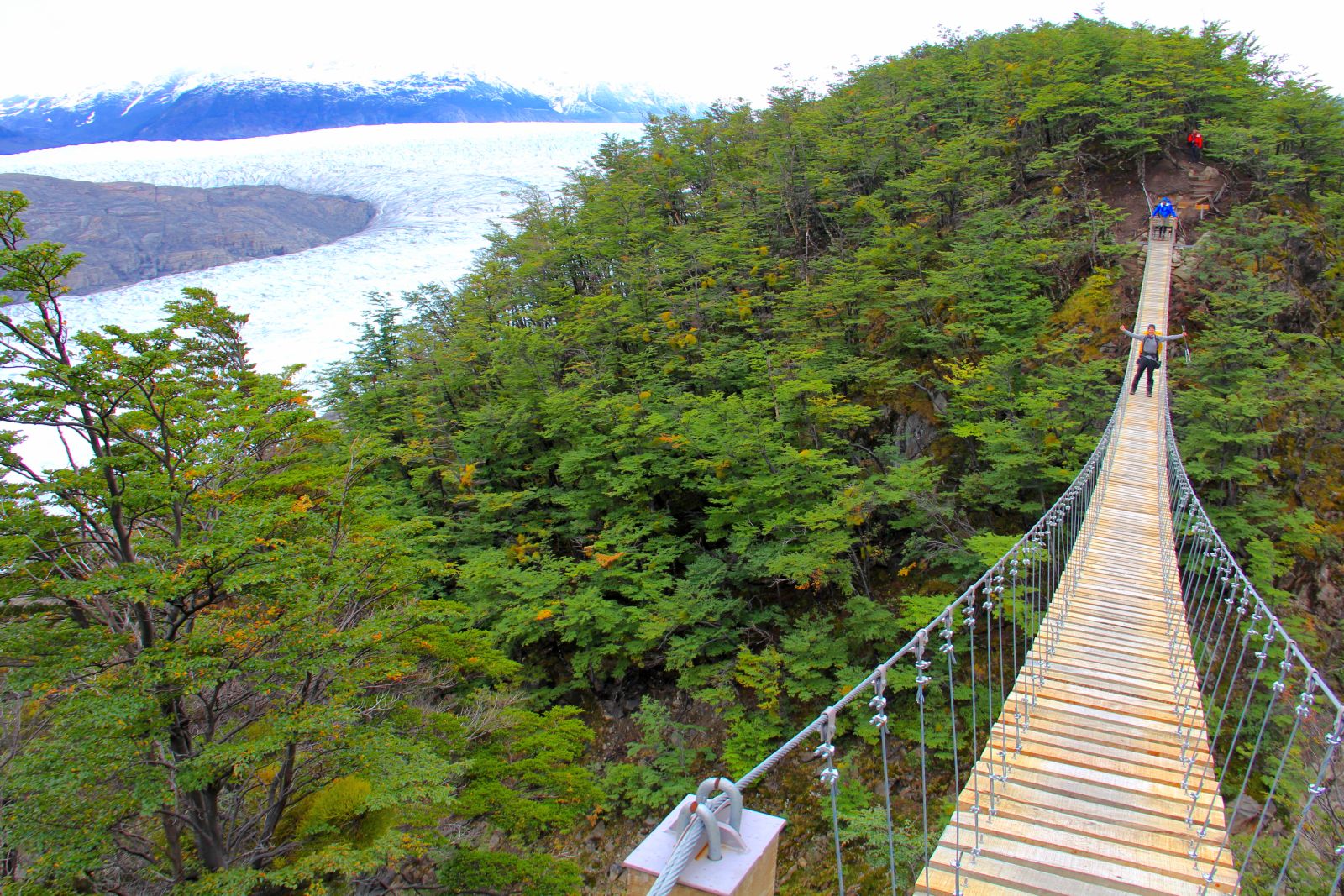
It’s not that the wind was relentless, but rather mischievous. One moment the mountain was completely still and a steady layer of snow fell from above, and within half a step a transparent force threatened to knock me to the ground (succeeding only once), while the falling pellets transformed into a swirling swarm of angry hornets. Ten or twenty steps later, it softened and remained quiet once again, coiling as a jack-in-the-box for its next powerful gust. My 40-pound backpack helped anchor me to the ground, but also acted as a giant sail pulling me backwards down the mountain with each push of the wind.
One step at a time, I defied both wind and gravity, shuffling up the mountainside at an embarrassingly slow pace. Half of my weight was entrusted entirely to my trekking poles as I leaned heavily into them, anticipating the next gust of wind. The rain and snow mix soon transformed completely into snow as we gained elevation. Partially frozen streams crisscrossed our route, and I prayed for no wind each time I precariously balanced myself atop the small stepping stones to avoid the freezing water.
It took four hours of careful trudging to reach the top. We stopped just a few times to admire the surroundings: the valley behind us that faded in and out of view with the clouds that passed over it, the needle-sharp ridges on each side that were too steep even for snow to stick, the thick glacier sitting just a few hundred feet to our right. All this was nothing compared to the view awaiting us on the other side.
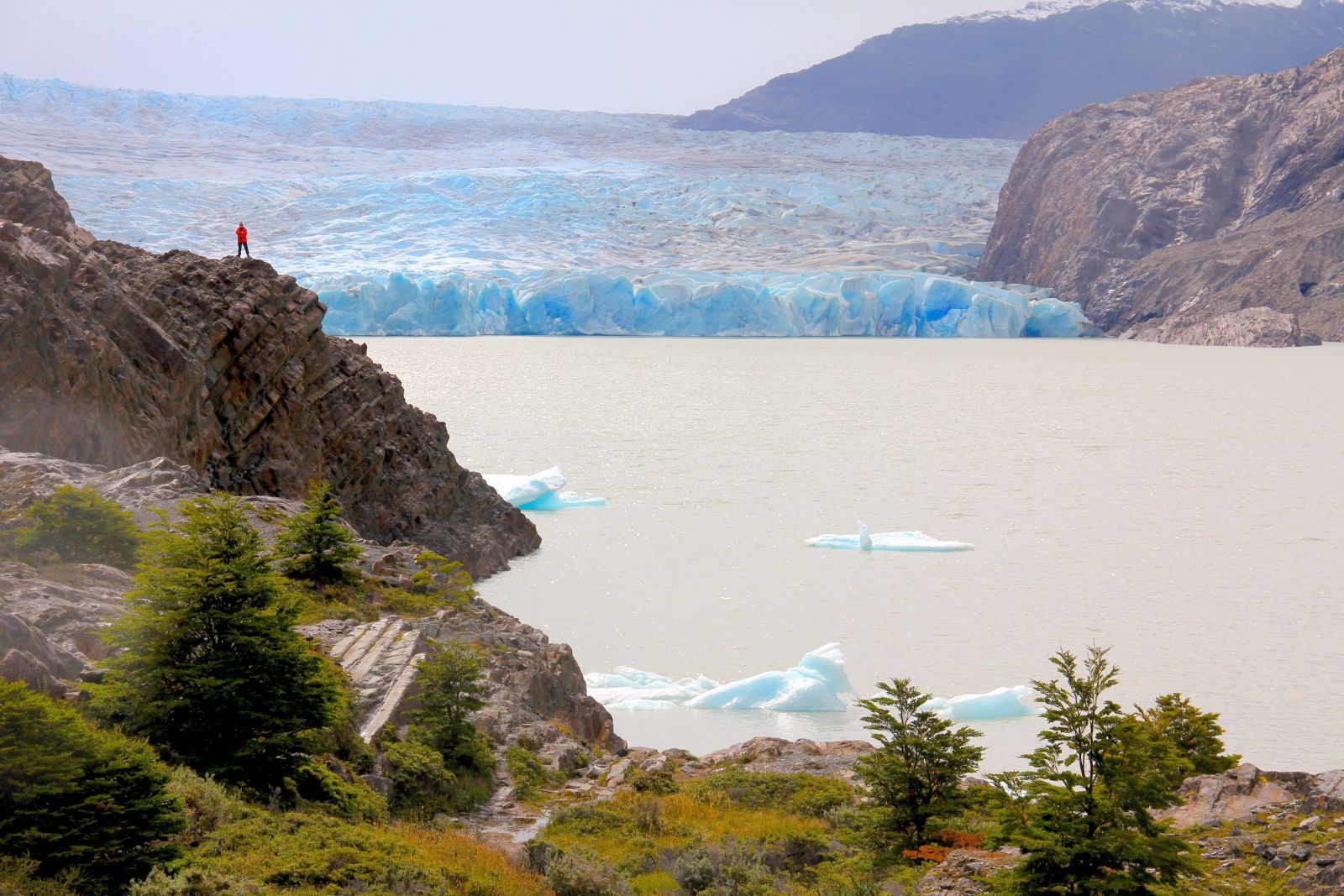
Looking at Glacier Grey from the top of the pass felt like we were in the presence of eternity. The silent glacier rested in the valley beneath us, with ice stretching back through the valley and piling up the mountainsides, eventually melting into the flat white of the February clouds. It looked like a pencil drawing, a scene in black and white. Except for the blue. That weird blue that only exists in layers of snow and ice. Like a cross between turquoise and electric blue, but with a hint of indigo and a neon glow. The blue showed up where crevasses in the surface of the glacier allowed us a glimpse into its depths.
It was hard to believe that this seemingly infinite glacier was just one small bit of the massive Southern Patagonian Ice Field. At 104 square miles, Glacier Grey forms less than three percent of the 4,773-square-mile sheet of ice stretching across southern Chile and Argentina. The ice field represents the remnant of an even bigger ice sheet from the last glacial period, and now feeds dozens of glaciers across the continent. These glaciers are still carving the landscape of the region, scouring valleys and moving mountains with their incredible force.
The mountain didn’t allow us to enjoy the view of Glacier Grey for too long, forcing us to keep moving to escape the barrage of wind and snow. And so we descended, down the steep and muddy trail into the camp. Down beneath the snow, into clouds and rain and five more mornings of wrestling the tent into its bag at various levels of saturation, and into the more crowded section of the circuit trail, where we were soon to squelch ourselves into over-packed cooking shelters and swap trail stories with dozens of other trekkers.
And of course, we trekked down under the watchful gaze of the mountain, who stands sentry over this section of Patagonia as countless hikers scramble circles around her formidable base. I believe it is something about the juxtaposition of unique beauty and exhaustingly dark conditions that draws these hikers to submit to the shifting weather and experience the awe-inspiring bit of nature that is Torres Del Paine.

 Laura works as a civil engineer to afford her true passions: backpacking, mountain biking, traveling, and writing. At the moment, she lives near Denver, Colorado, where she spends her free time playing in the Rocky Mountains and writing stories to share her adventures with others.
Laura works as a civil engineer to afford her true passions: backpacking, mountain biking, traveling, and writing. At the moment, she lives near Denver, Colorado, where she spends her free time playing in the Rocky Mountains and writing stories to share her adventures with others.
The post How To Pack A Wet Tent: A Trek Through Torres Del Paine, Chile appeared first on The Expeditioner Travel Site.
]]>The post Here’s What It Was Like Attending Colombia’s Craziest Festival appeared first on The Expeditioner Travel Site.
]]>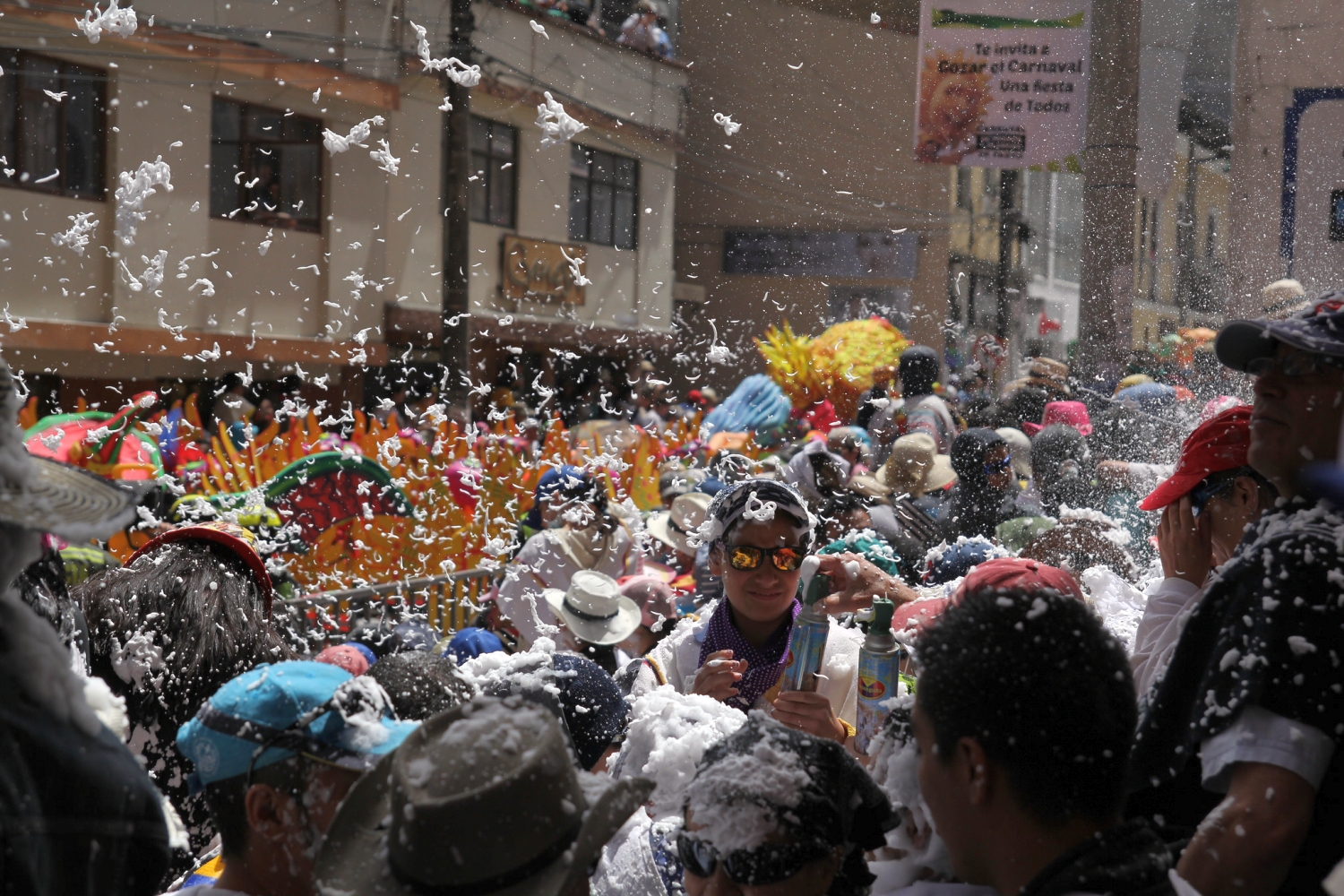
All the babies are crying, and an old lady starts yelling hysterically. As an enormous burst of turbulence turns my stomach sideways, I catch the eye of a man who looks like Gabriel Garcia Marquez. He gives me a gruff nod and half-smile, as if to assure me that the landing is always like this. I’m not convinced. Looking out the windows on both sides, men shout distances up to the cockpit, as if they were helping a neighbor parallel park. “10 meters!” “15 meters!” They are estimating the distance between the wingtips and the green peaks of the Andes. And the numbers they’re using are disturbingly small.
Though it wasn’t in the brochure, this is my introduction to the three-day, non-stop adrenaline rush that is the famous Carnaval de Negros y Blancos. Shaking a little bit, I step out into the one-plane airport of Pasto, Colombia, very near the Ecuadorian border. Now that they no longer herald a death stung by bits of fiery fuselage, the Andes are really quite beautiful. I even start to relax as I pass through the tiny terminal to the taxi stand. But there’s an ambush in place outside the airport. A group of teenagers cackle as they strafe the line of expectant family members and private taxi services, each armed with two cariocas, the basic-issue armament of the Carnaval participant. They are long, narrow aluminum cans containing something akin to shaving cream. I duck behind an old woman who takes the brunt of the fire. This will prove to be the only time I feel ashamed about using the elderly for protection. With their broad frames and slow movements, they really do provide the best cover.
After a harrowing hour-long taxi ride down a one-lane highway cutting through the mountains, where cars break through into oncoming traffic at blind turns with total impunity, I am finally in Pasto. The city itself, though small, is incredibly beautiful. Couched in the green mountains, under the watchful eye of an enormous dormant volcano, it has been a pilgrimage site in the area for hundreds of years. It’s full of historic churches, and this day of the carnival celebrates this element of the region’s culture. January 4 is the day commemorating the arrival of the Castañeda family, a pack of oddballs who passed through on their way to the Las Lajas sanctuary to the south. There’s a parade packed with men dressed as schoolgirls and women dressed as barbers prancing about as floats depicting confused children celebrate the general weirdness of people who pack up their families and walk hundreds of miles to look at a church.
It’s getting dark as I step out of my hotel to take place in the nocturnal revelries. I’m wearing my nice shoes and nice jeans, and don’t even think twice about it. I’ve read the Wiki on this thing. Today there’s a nice parade, tomorrow we’ll paint each other black, and the last day we’ll throw talc and foam and make a mess — the assault on the airport was an isolated incident. Tonight should be good clean fun.

Like all good festivals, the Blacks and Whites’ does not abide by its own rules.
I’m no more than ten steps outside my hotel when a family with two children eyes me head to toe in bemusement — we’re early in the carnival, and most tourists won’t arrive until the 6th to see the great parade, and even then they are not often American — before they each whip out the cariocas from behind their back and douse me from head to toe. While I’m desperately trying to clear the foam from my eyes, nose, ears and mouth, a window rolls down from a passing car and a talc-bomb catches me square in the chest. The doorman of my hotel laughs devilishly as I look around, trying to figure out what just happened.
One block further and a group of concerned-looking teenagers approaches me. Seeing how unprepared I am, they take pity and buy me my own carioca as well as a pair of sunglasses — the foam can sting your eyes, they explain to me. “No shit,” I tell them in my best Spanish. I follow them on their route, glad for the protection a few extra bodies can afford.
But their good nature is short-lived, or maybe entirely a ruse. They accompany me like bodyguards for a short time, leading me into the middle of one of Pasto’s two large squares dedicated to the carnival. As we push through throngs of people, I try to memorize the way back to my hotel, constantly wiping foam off of my sunglasses. Just when we reach the heart of the beast, the kids loudly call attention to my gringo presence. I will never see them again, as it takes nearly ten minutes to de-foam and de-talc myself, blindly stumbling through thousands of people to find shelter. This is the nature of warfare in Pasto.
The next day, the 5th, is the Blacks’ Day. I’ve planned a route for a morning stroll, hitting many of Pasto’s beautiful cathedrals and sanctuaries and also scouting out a good spot to view tomorrow’s Great Parade. I wear the same clothes, my battle gear, which will become impossibly ruined. With some paranoia I skulk about, peeking around corners, keeping an eye out for adolescents with cariocas. But they are still asleep, and the first to rise are the kind ones, the elderly and families with young children, who want to enjoy themselves before the mayhem starts.

I take a moment to breathe the cool, mountain air. A group of Colombianas, giggling, points me out. They turn around, conferring, then one of them slowly strides up to me. I stand stock-still; my conception of the carnival was more or less receiving undue attention from beautiful Colombian girls while parades and parties took place in my peripheral vision, and it seems to be coming true. She comes in for a kiss, cradling my face in her hands. There is a cold, oozing sensation, and as she pulls away before making contact I realize that her hands were overflowing with black paint. The 5th is officially in full swing as each of her friends more or less slap me with a handful of the same.
Later in the afternoon my cousin and photographer Jordan arrives in town. His wide-eyed expression and foam-covered bag communicate that he’s had a comparable experience to my own arriving into the city. We stroll around, paint and get painted, drink beers and talk with various groups, and enjoy warm Andean hospitality. Then, suddenly, the debauchery switches on. We come to realize that all the descriptions of the festival are true until about three in the afternoon, when the fabric of society dissolves under the chemical duress of 20 tons of shaving cream. Street vendors who have been hawking cold beers now change to aguardiente, the local anise-flavored liquor. The painting changes from delicate strokes by attractive women to more intrusive attacks. A boy no more than 12 years old sneaks up behind me and gets my whole nose and mouth with blue paint, which I will taste for a week. And then the cariocas come out.
Back at the hotel, we ask the security guard if it can get any crazier. He has worked outside the hotel every Carnaval for five years, which makes him a sage old veteran deserving of his epaulettes. He laughs at us. “Oh, that’s nothing, compared to tomorrow. You’ll want to buy a mask for your nose and mouth.”

And he’s absolutely right. The next day, the 6th, is the Whites’ Day and also the day of the grand parade, which starts early and goes for five or six hours under the hot sun. In Spanish it’s the Gran Desfile, which reads to American eyes like the Great Defiling, which is more or less what it is. Aguardiente hits the streets before the sun, and people who have grown impatient waiting for the parade to start get in massive carioca, flour and talc fights. Clouds of white massive enough to blot out the sun become a regular affair. It’s a study in the chain reaction — one sour look, one misfire of a carioca and suddenly a whole city block looks like the local Gillette factory had an accident. Tourists and the police patrolling the cordons are particular targets, though with so many people packed into such tight areas it is difficult to aim accurately.
Finally, the parade arrives. This is the reason why the festival is commemorated by UNESCO as a masterpiece of intangible cultural heritage, and it does not disappoint. Hundreds, perhaps thousands of colorful floats that have been the whole year in the making pass by, gradually increasing in size from enormous heads mounted on the shoulders of grunting, sweating men to converted buses and sixteen-wheelers. These are punctuated by musicians, dancers, circus performers, and scantily clad Colombianas.
There are nearly half a million people taking it all in, packed tighter than sardines, hanging from second-story balconies and sitting on towels wrapped over razor-wire walls. 50-pound paper mache political candidates box one another while KISS cover bands play local Andean music and women distribute smooches and candy. Marquez, who passed earlier this year, receives special attention with two or three large floats in his honor. The people are amazingly kind — people buy us beers wherever we go, Jordan and I finally get our Colombiana kisses, and we enjoy short-lived celebrity status. Mothers take pictures of us holding their babies. We each acquire about a dozen penpals. It’s paradise, until the sun starts to dip. Everybody knows what that means, including us. The rules that hold this fragile peace together will soon crumble. The apocalypse is coming.
Fearing the end of days, we spend our last night at a salsa bar three stories above the main plaza. Looking down, we can see nearly 50,000 people, which puts my first night of terror in perspective. Live concerts of a salsa-reggae mixed genre blare out at a hundred decibels. Generally, a salsa bar is a good place to hang out off the beaten track in Colombia. All the girls want a dance, and we embarrass ourselves thoroughly — “Remember, it’s just one-two. Don’t get fancy.” Occasionally, we lose sight of the crowd as a dusty white cloud permeates the square or a snowball of foam manages to make it up 30 feet to our position. But that’s the Carnaval. Cover your ears, your eyes, and your drinks.
And with that, the festival is over. We creep out on the 7th in our battle gear, expecting the same no-rules surprise attacks as the previous three days, but we look like fools. Everybody is dressed in business clothes and nicer casual-wear, nobody has sunglasses, and most of the destruction has already been washed away in an ever-swelling river of chalky talc and flour. An old woman leans up against a tree, bracing herself — she has an actual fire hose over her shoulder, and she is power-washing the façade of her fabric store. Her stream joins the rest of the white water, which will flow downhill into the ravines of the Andes, carrying away the last trace of the confluence of blacks and whites until next year.

 Jordan A. (left) works as a web manager for Deseret Digital Media in Salt Lake City, Utah. He studied journalism and political science at Utah State University. Ski Krieger (right) is a physicist and writer based out of Providence, Rhode Island. When working or not, he’s steadily warbling as he prepares to compete in throat-singing competitions in Tuva.
Jordan A. (left) works as a web manager for Deseret Digital Media in Salt Lake City, Utah. He studied journalism and political science at Utah State University. Ski Krieger (right) is a physicist and writer based out of Providence, Rhode Island. When working or not, he’s steadily warbling as he prepares to compete in throat-singing competitions in Tuva.
The post Here’s What It Was Like Attending Colombia’s Craziest Festival appeared first on The Expeditioner Travel Site.
]]>The post Is There Anywhere Better To Shoot Video Than Brazil? appeared first on The Expeditioner Travel Site.
]]>In honor of the World Cup wrapping up this weekend, I thought I’d feature this amazing compilation travel video from Brazil (as if the seemingly never-ending parade of enviable panoramic shots of Copacabana Beach and aerial views from Christ the Redeemer that have blanketed the airwaves recently haven’t already caused every sane person who hasn’t been to Brazil to scramble to their computer to check airfare prices to the country).
Made by videographer Tom Pinsard, this beautiful video was shot while Tom and his girlfriend were in Brazil for two weeks during the World Cup (they were wrapping up a six-month trip around Asia and South America).
Amazing footage as it is, unfortunately for us (and, well, Tom), one of his cameras was stolen while in Brazil, so he had to make do with the video he had already captured.
For those wondering, the video was shot using a combination of the Panasonic Lumix DMC-GH3, Sony Cyber-shot DSC-RX100 II and GoPro 3.
[Brazil by Tom Pinsard via Vimeo]

/
 Matt Stabile is the founder and Editor-in-Chief of TheExpeditioner.com. You can read his writings, watch his travel videos, purchase the book he co-edited or contact him via email at any time at TheExpeditioner.com.
Matt Stabile is the founder and Editor-in-Chief of TheExpeditioner.com. You can read his writings, watch his travel videos, purchase the book he co-edited or contact him via email at any time at TheExpeditioner.com.
The post Is There Anywhere Better To Shoot Video Than Brazil? appeared first on The Expeditioner Travel Site.
]]>The post My Discovery Of Eden In Semuc Champey, Guatemala appeared first on The Expeditioner Travel Site.
]]>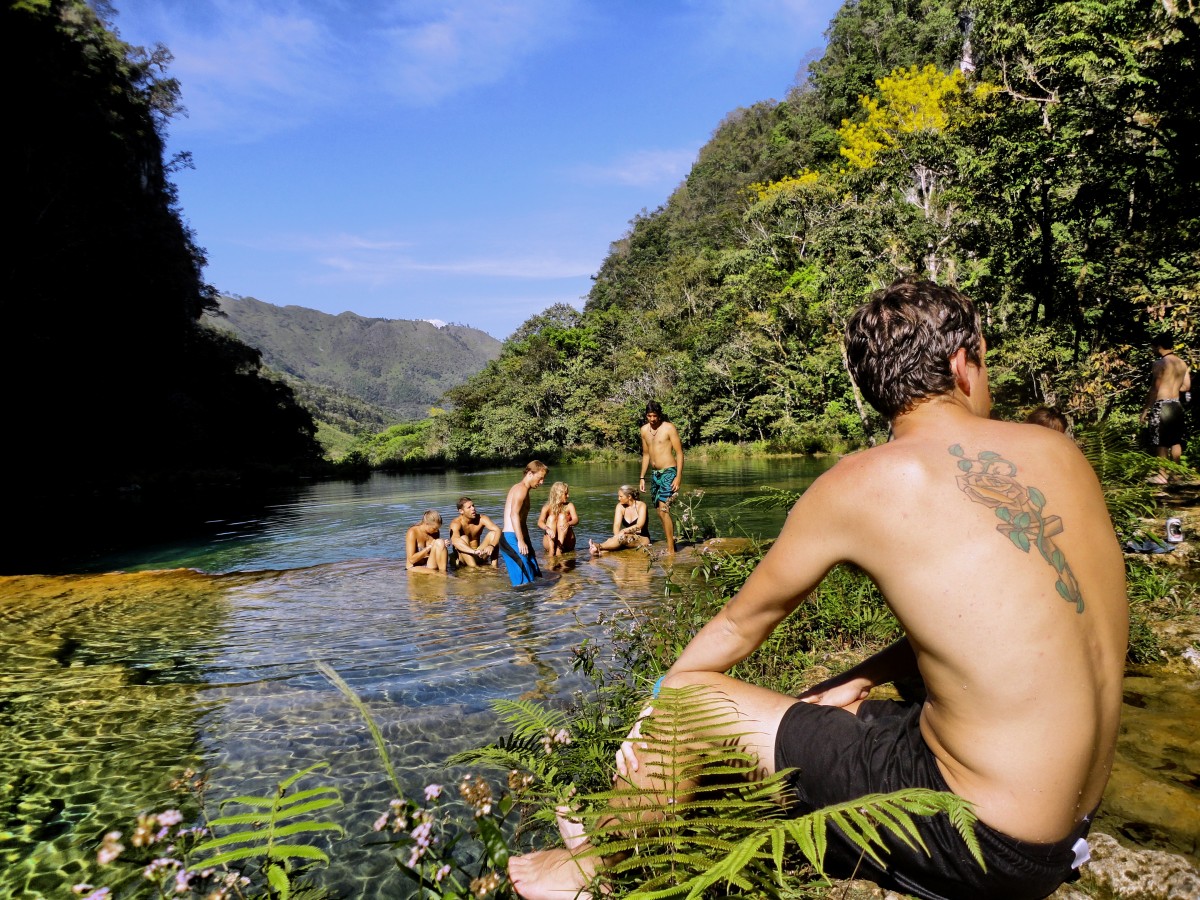
I’m riding in the back of an open truck that must have served to transport cattle at some point, but on this occasion, it is taking me from the town of Lanquín to the secluded community of Semuc Champey, in the heart of the Guatemalan jungle.
Riding with me is my girlfriend and about a dozen tall, heavy-set men. I exchange a few words with some of them and find out they are army guys, taking a vacation-break away from their training base several miles away. Right now though, they look mostly like tourists, goofing around and taking selfies as the jungle zooms by all around us.
The journey began in Antigua, a colonial city of pastel, multicolored houses, many of them former colonial estates, and a multitude of Baroque-styled cathedrals. At night, the cobblestone, quiet streets, dimly lit by the lampposts, transports me back to a pre-industrial era, a stark contrast to the Central Square area, where all the bars and cafes can be found, which give the city its vibrant nightlife and lively cultural scene.
Antigua is a key jumping-off point for moving deeper into Guatemala. From there it is easy to get a 6-hour-long bus ride to the town of Lanquin, some six miles away from Semuc Champey. While the climate is temperate in the higher altitudes of Antigua, the moment you get off the bus in Lanquin, you know you’re right in the tropical jungle.
Lanquín is the last stop where I can get what most Westerners consider everyday commodities, like all-day electricity, cell reception or internet connection. The community of Semuc is found one cattle-truck ride away, on the banks of the Cahabon river. This is a protected natural area and local custom holds great respect for the environment. The locals are for the most parts descendants of Q’eqchi’ Mayans, and many of them still speak — sometimes exclusively — the local dialect, Q’eqchi.
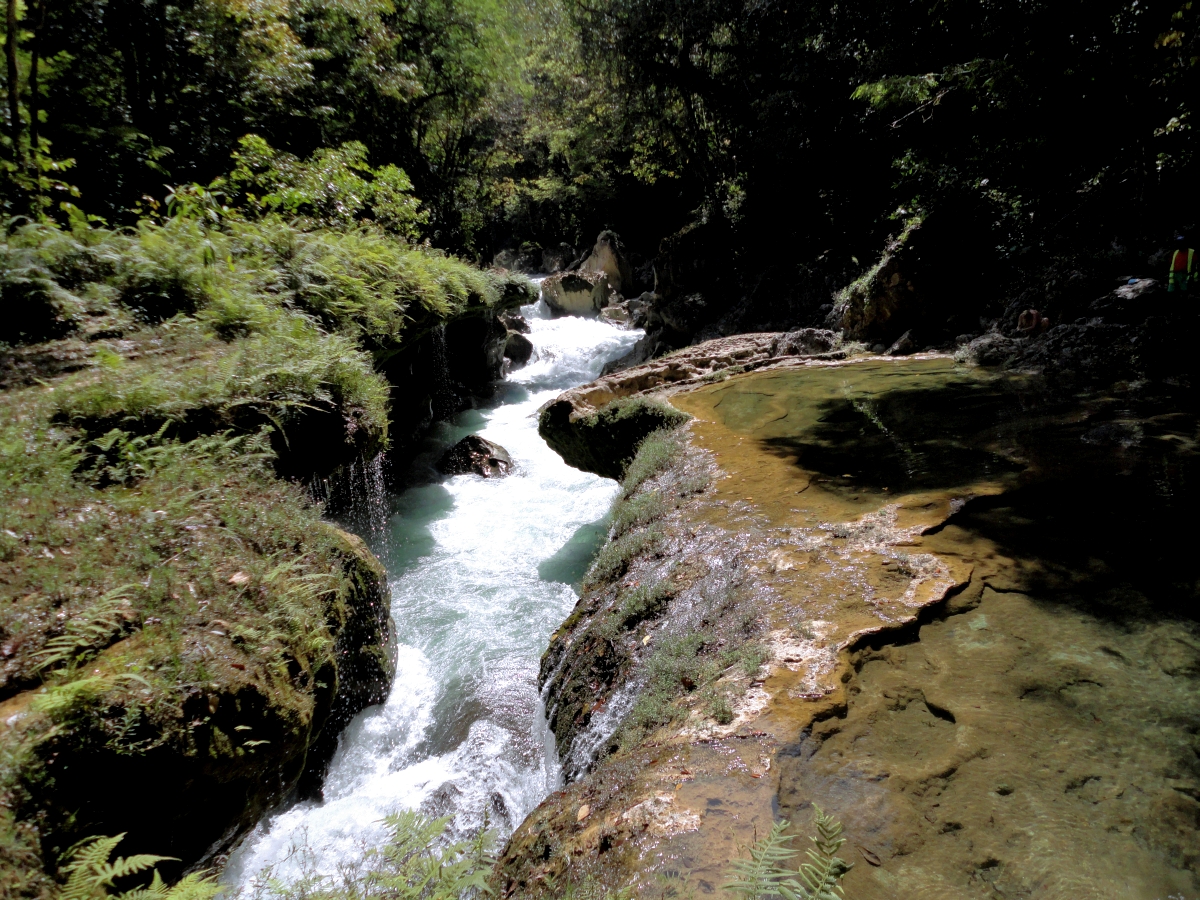
In Q’eqchi, Semuc Champey means, “Where the river hides beneath the earth,” which references a nearby location at the bottom of a steep valley called El Sumidero, where the Cahabón River flows underground, then comes back out at a source called El Manantial. This forms a natural stone bridge over 1,000 feet long, above which are a series of natural, turquoise-colored pools of pure spring water, streaming downriver in a steady flow.
I arrive at one of the few available accommodations nearby, a small eco-hotel called El Recreo, which runs on solar panels and generators, and is mostly built of rock, palm and adobe. A couple of girls in colorful, hand-woven dresses, who hardly speak a word of Spanish, come to greet us and pitch us some of their homemade produce, cocoa candies.
Looking back on it, this was actually one of the most memorable local delicacies I came across. The candies were homemade bars of pure cocoa paste, pressed by hand, mixed with spices, including cinnamon, chili and cardamom. I still sometimes get a deep, nostalgic craving for those spiced cocoa bars that those little girls made by hand and sold for a couple of quetzales to the tourists that came by.
There are abundant cocoa trees all around, and I learn from the hotelkeeper that you can crack a cocoa nut open and find a juicy, tender fruit inside, wrapped around the seeds and strongly resembling a human brain in appearance. The housekeeper tells me that in local lore, this is actually because cocoa fruit is said to be good for the brain. The fruit is sour, juicy and tender, incredibly tasty, and while most of us are familiar with cocoa nut, I realize most people have never even tried cocoa fruit, let alone even known it exists.
There is little to do during the day in Semuc Champey, but what a setting to do nothing at all. I’m inside the jungle, next to the river, reading, swimming and walking around town, which consists mostly of farms interconnected by trails through the jungle.
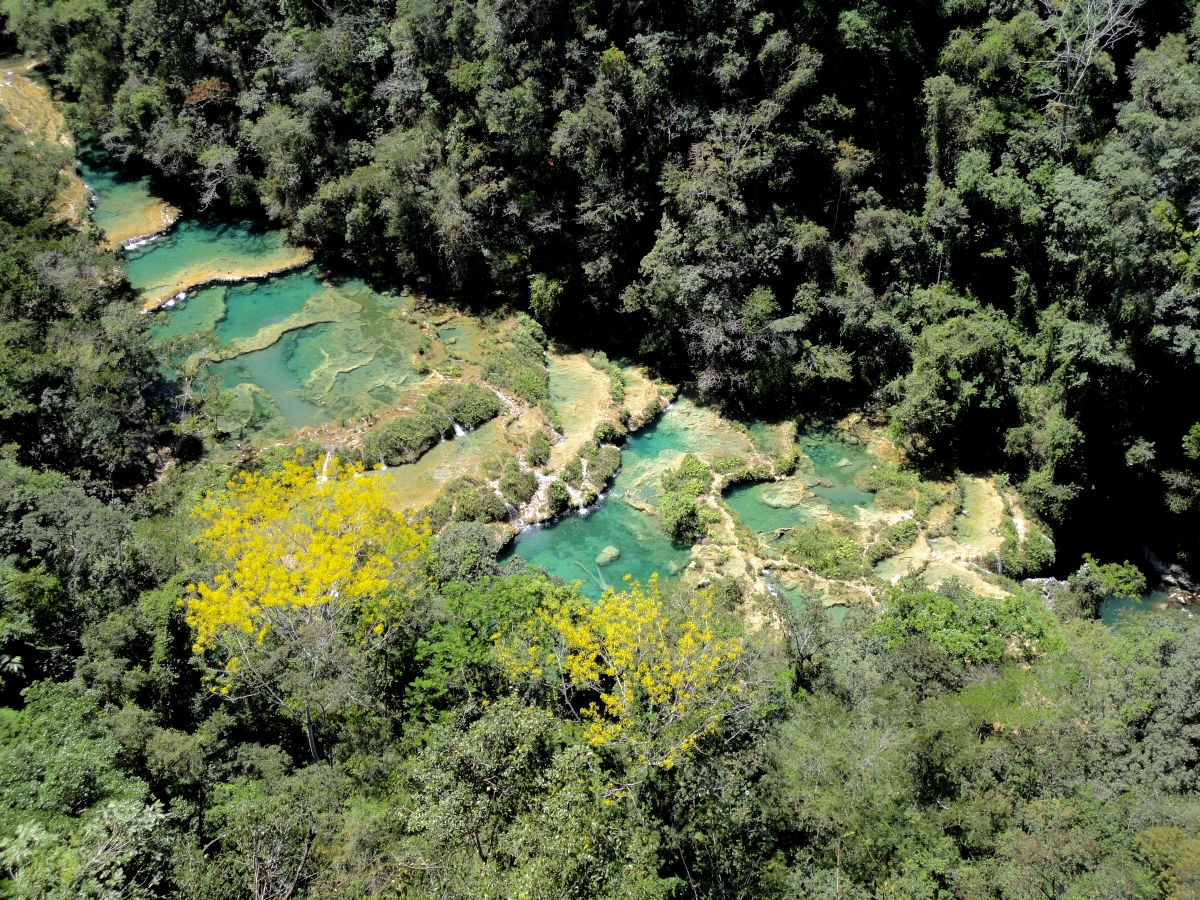
Throughout the days, I end up realizing everything goes at a different rhythm than I’m used to here. My girlfriend and I end up befriending the little girls who sell cocoa candies. They teach us a few words of Q’eqchi’, like Saq’ e’ (Sun) and ha (water). My girlfriend has an easier time learning the language than me. I suspect that after a month talking to these girls, she would be able to speak fluent Q’eqchi. The girls give us a tour around town, including a trip across the natural stone bridge to the entrance of a nearby reserve. On the way, we see the army men swimming in those turquoise pools. They wave at us from the distance, looking like kids fooling around in the water.
I am told there is a cave network nearby called Kam-Ba, where the river flows underground. I am led a couple of miles down to the entrance of a cave. There, we are handed candles and guided in through the complete darkness. The water was sometimes waist-high as I followed the dim light of the guide. Walking in front of me into the cavern, the open space seemed to stretched onward until it could reach the bowels of the earth — a sort-of entrance to a Mayan underworld. Bad idea to lose your light in here, which is exactly what our guide tells us to do after a while. Inside, in the darkness of the cave, all you can hear is the dripping from the stalactites and the occasional flapping of bat wings.
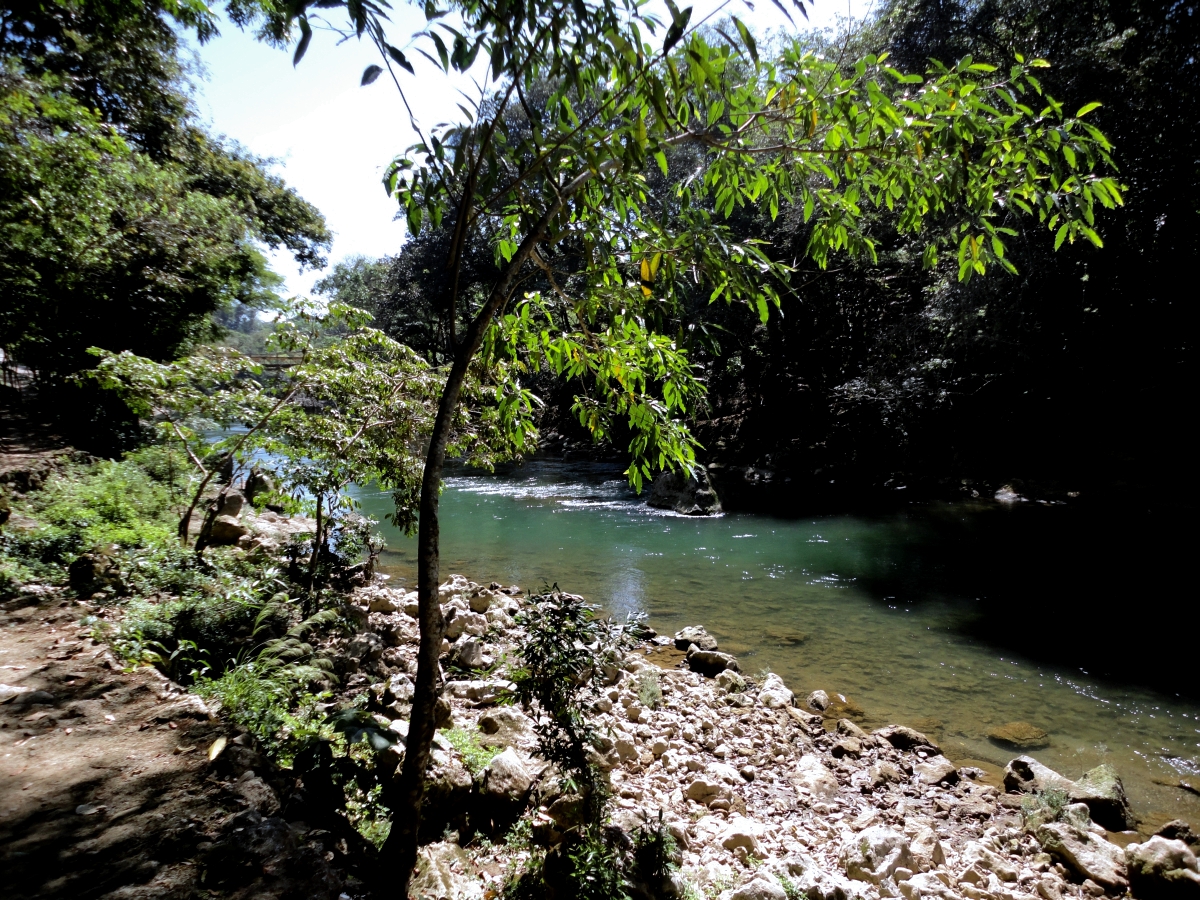
On our way back, I am given an inflatable tire and am allowed to drift on a slow, scenic ride down the river, which ends with a little swim back to the riverbank facing the hotel. I am exhausted. That night we get to build a bonfire on the riverbed with some of the other guests, who are, for the most part, international, barefoot backpackers on a budget, and we stay out stargazing through the treetops, listening to the sounds of the jungle.
There is, in particular, a strident whistling that I imagined could only come from some local bird. Actually, I am told that this sound is emitted by a small insect called a chicharra. There is a constant, chirping, hissing, coo-cooing, all around us. All of these sounds intermingle, creating a rhythmic beat that never ceases. You tend to think that the nighttime in the jungle is silent, but it is actually surprisingly noisy.
It was tough to leave Semuc. After just a few days there I had gotten used to the rhythm, to the constant, high-pitched chirping of the chicharras, and to sitting on the riverbank, watching the river flow.
The girls wave us good bye. The off-duty army members are nowhere to be seen, probably floating downriver on an inner-tube, in the beer-induced stupor that only a leave of absence can bring on. I get my last load of cocoa candy, and the girls wave us off as the cattle truck drives uphill. As we leave town, the humidity lifts instantly, and I feel like we’re leaving a small patch of Eden behind.

/
 Mateo Garcia is a freelance author, journalist and travel writer. You can check out his blog at TrippyFiction.blogspot.com.
Mateo Garcia is a freelance author, journalist and travel writer. You can check out his blog at TrippyFiction.blogspot.com.
The post My Discovery Of Eden In Semuc Champey, Guatemala appeared first on The Expeditioner Travel Site.
]]>The post Greetings From Brazil [Travel Video] appeared first on The Expeditioner Travel Site.
]]>Heading to the World Cup in Brazil next month? Yeah, me neither, although any and all invitations that include a spot on a couch in someone’s rented house and/or an extra seat on their jet to get down there are welcomed and highly encouraged here at The Expeditioner HQ.
To get you in the mood for all the envious social media photos and TV footage you’ll be seeing during the games, check out this fun video from the Delinquent Valley crew, entitled “Greetings from Brazil,” featuring some great, intentionally retro-ized footage from the country.

/
 Matt Stabile is the founder and Editor-in-Chief of TheExpeditioner.com. You can read his writings, watch his travel videos, purchase the book he co-edited or contact him via email at any time at TheExpeditioner.com.
Matt Stabile is the founder and Editor-in-Chief of TheExpeditioner.com. You can read his writings, watch his travel videos, purchase the book he co-edited or contact him via email at any time at TheExpeditioner.com.
The post Greetings From Brazil [Travel Video] appeared first on The Expeditioner Travel Site.
]]>The post Ducks, Drugs And Dance Meditation: My Failed Stay At A Nicaraguan Permaculture Farm appeared first on The Expeditioner Travel Site.
]]>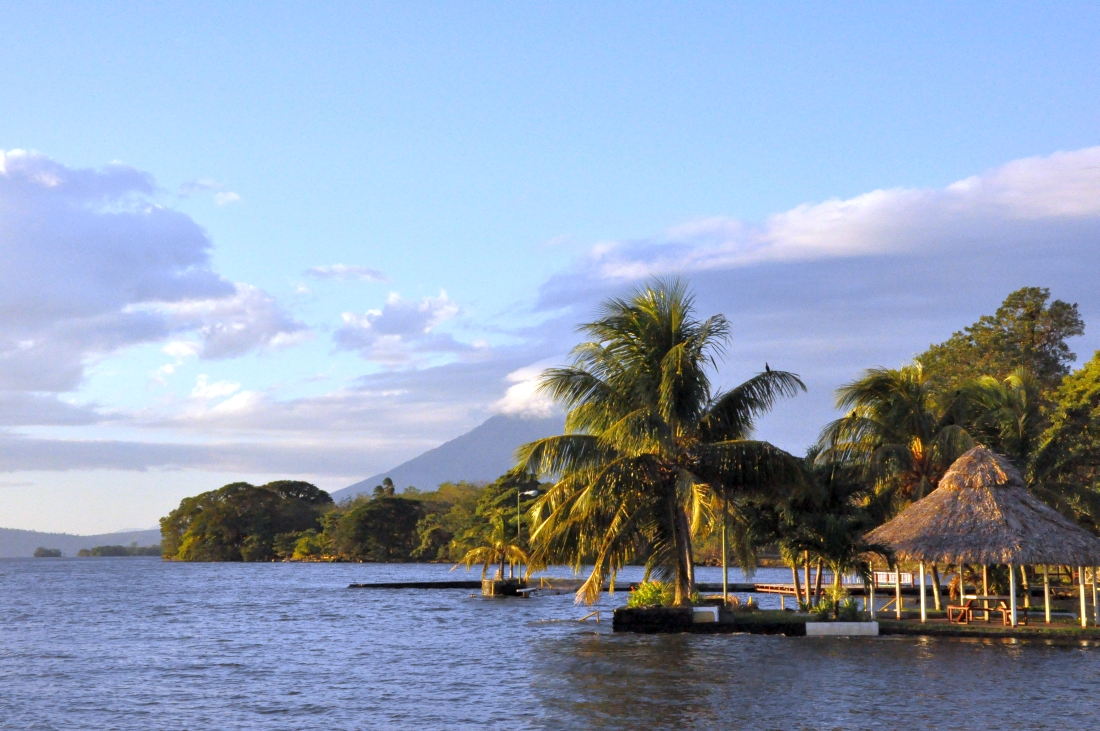
The man walked blindfolded between our outstretched fingers as we caressed him with leaves and feathers. Other hands reached out to caress or hold him.
“You are loved,” someone whispered.
“I love you,” echoed another.
He ended his walk in the arms of the oldest man and woman on the farm. They cradled him as would a mother and father, rocking him gently. This unusual birthday ritual captured in a nutshell my stay at a remote permaculture farm on Nicaragua’s Isla de Ometepe — a loving, community-centered experience that managed to both charm and profoundly weird me out.
I was fresh off a week-long spiritual retreat in Lake Atitlan, Guatemala. I’d left refreshed, relaxed and ready to put aside my Toronto-forged cynicism. I’d traveled down by chicken bus and ferry to this farm caught in the dip between two volcanoes, one fire and one water.
My first impression of the property seemed to promise further connection to the earth, self, and community — all things which I’d begun to foster in Guatemala. The farm was run on solar power and had a big garden filled with local crops. Its bounty fed the farm’s full-time staff, volunteers and visitors. Additional supplies such as grains were almost all local. There was a rustic open kitchen, a meditation hut with views over the palm-filled valley, a library and hangout center, and a pool with sweeping views of the fire volcano and the lake far below.
An elfin blonde beauty with freckled blue eyes and nicotine=stained teeth showed me around. I waxed poetic about the farm to her. It seemed like the hippie colony I had wished for and yet had always misanthropically avoided.
It all started to unravel that night. I was sitting on a rock bench in the open kitchen and enjoying the rich scent of yucca cooking in coconut curry when a tall and lanky guy with Napoleon Dynamite glasses sat next to me. He skipped the small talk and instead began to stroke my back. I instantly freaked out. One of the interesting things about getting out of your comfort zone is realizing how small that zone really is. It only took one (supposedly) innocent touch to put me out of it. That was only the beginning.
At least I was faring better than the duck that was on its way to the lower field teepee. A retreat was on and the participants were to meet the duck before he was made into soup. After this an intense night of drumming, chanting and imbibing of some beverage that would induce lucidity was scheduled to begin. Even the smallest amount of marijuana pulled me into an abyss of fear, so this all sounded incredibly sinister. I’m sure the duck would have agreed.
The next day I decided that I had to make inroads with the other folks staying at the farm. Trying to be a joiner, I trekked 30 minutes downhill to the closest restaurant with a few other residents. I chatted up a bronzed Canadian who was head cook in the kitchen. He confessed that he grew pot in British Columbia half the year and traveled the rest. He was at the farm to try to clean up his act and face his demons. He was a former party boy with a golden face and a haughty manner and he seemed deeply uncomfortable with himself and most other people. I resigned myself to the fact that he wasn’t going to be my new best friend.
I turned to a didgeridoo-playing Dutch guy instead. I quickly found out that he had the unnerving habit of staring right through you while asking overly personal questions. He posed them as if he was riding on some sparkling wave of honesty when in fact he was in the no-beeswax zone. I had heard him playing his instrument down the hill, the low eerie sounds wafting out of the tall grasses.
At least the gooey oven-cooked pizzas and I got along. I sat on a park bench and watched lithe women glide by in brightly patterned harem pants, belly tops and dreads. We eventually walked back to the farm together along the snaking path, the stars blotting out the sky above with their dazzling scatter. The total darkness obscured my steps. I stumbled over rocks and roots and ducked underneath almost invisible strands of barbed wire.
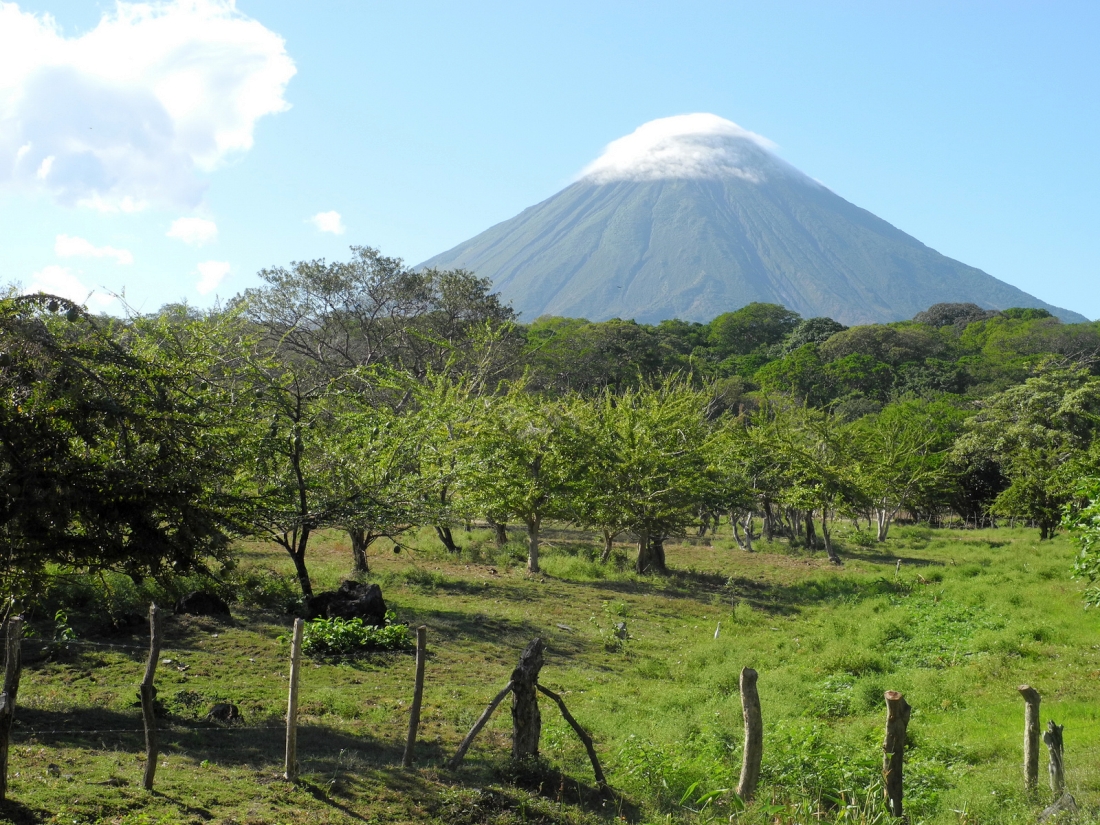
Monday morning rolled around and with it came the return of yoga and meditation classes. I was relieved for a bit of structure and decided to throw myself into getting in touch with the inner me or God or whatever happened to be there.
At 5 a.m. I groggily stumbled towards the tree-top Jungle House. I expected the rest of the crew, but to my surprise, only the owner, Jane (a serious woman with long dreadlocks and a sinewy yoga body) and her German boyfriend were there. I was the only student.
They instructed me to let me body move, vibrate or emit sounds as it liked while a feral-sounding electronic music played at top volume in the background. I never felt more rigid in my life, except for when my boyfriend had tried to teach me salsa dancing. I stood there with my eyes closed while tapping my foot and praying for the whole thing to be over.
Yoga wasn’t much better. Most classes were taught by volunteers who had recently completed their teacher training. The worst class by far was led by my back patting friend. He decided that leading us through traditional yoga poses was too square and turned the whole session into an impromptu laughter yoga class.
Back-patter started making up moves and laughing his crazy hyena laugh. The pot dealer/head cook proceeded to crack up which precipitated a chain of frantic laughter while we all sprawled in ridiculous poses. It was kind of great, except that I really wanted to stretch and I hate laughing. The latter point is mostly not true.
The whole experience was kind of harmless in and of itself. The lame classes, the angry hippies, the strange rituals and random cuddliness were somewhat balanced by the intense and savage beauty of Ometepe, the relaxed pace of life and the delicious vegetarian food that was heavily laced with succulent coconut, fresh cacao and curry.
What tipped it all into the red was José, the farm’s carpenter. Native to the island, he was short, deeply tanned and had a mouth full of silver fillings. I’d quickly taken to him. He thought the farm’s hippies were ridiculous and since my cynical defense mechanism had kicked back in he proved to be a much-needed friend. I gave him English lessons, ate dinner with him and answered his barrage of questions. I knew that his intentions were no purer than those in the hearts of the hippies around me but I figured I could keep him at bay.
Still one night he invited me to sleep with him in his loft space and everything came crashing in. I realized that I was stuck on the farm in the middle of nowhere with no ally, no sense of purpose and definitely no inner peace. I was deeply uncomfortable. I begged Jane to let me out of my 10-day commitment.
She let me go though not before looking deeply into my eyes and saying, “You think people don’t notice Bronwyn but I see your pain.”
I stumbled back down the rugged path towards the village, tears stinging in my eyes and my pack weighing heavily on my back. I’d said a quick goodbye to José before I left.
“You will forget me,” he’d said before I hurried off.
He was right, I would forget him. What I wouldn’t forget was how I’d had a terrible experience in a supposed spiritual paradise. Some of it was due to bad management and the rest came from my inner resistance and inflexible boundaries. My last encounter with Jane showed me that there was a vein of giving that I had refused to mine.
I realized that Guatemala had showed me my best self while Nicaragua had shown me my worst. I was as surprised by my own reactions as the people and places I’d encountered and I needed to process that experience. And avoid hippie birthday parties at all costs.

[Isla de Ometepe by Eric Molina/Flickr; Volcán Concepción by m.a.r.c./Flickr]
ABOUT THE AUTHOR
 Bronwyn Kienapple is a freelance writer and Canadian who’s currently lost in Southeast Asia. Her writing has appeared in such publications as Torontoist, The Grid and Toronto Standard. She recently contributed to the literary cookbook Eat It: Sex, Food & Women’s Writing.
Bronwyn Kienapple is a freelance writer and Canadian who’s currently lost in Southeast Asia. Her writing has appeared in such publications as Torontoist, The Grid and Toronto Standard. She recently contributed to the literary cookbook Eat It: Sex, Food & Women’s Writing.
The post Ducks, Drugs And Dance Meditation: My Failed Stay At A Nicaraguan Permaculture Farm appeared first on The Expeditioner Travel Site.
]]>The post Here’s What You Can Expect During A Food Tour Of Veracruz appeared first on The Expeditioner Travel Site.
]]>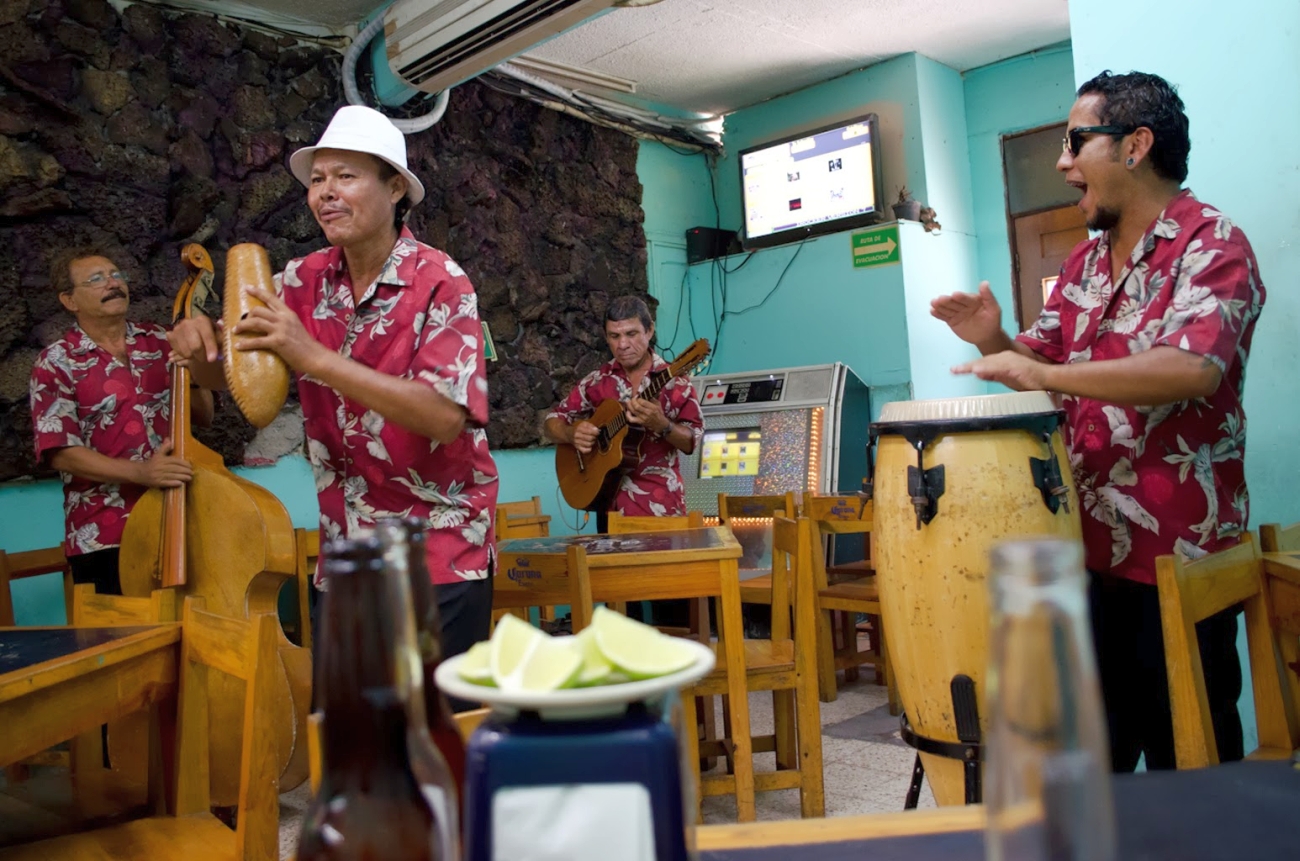
The air outside is thick, but the smoke in Santana’s bar is thicker. Even if I were a non-smoker it would be worth it just to sit in the bar’s tiny, air-conditioned seating area and watch the old men slowly drink themselves into an affectionate stupor at three in the afternoon.
This is the first stop on my locals-only, rambling tour of Veracruz, Mexico, and we’re starting with beer. This crescent-shaped state straddles the eastern portion of Mexico along the Gulf of Mexico and is famous for its history of pirates, Carnaval and the uniquely Son Jarocho style of music with its indigenous, Spanish and African musical influences — all indicative of its unique location.
Santana’s has an upside down emergency exit route sign placed gingerly between cracks in the wall. I imagine if there were a real emergency that no one would hurry to the door — no one here seems to be in a hurry to do anything. An old jukebox in the corner sits silent and a list on the wall advertises a bottle of tequila for 500 pesos (about $40). Thank God the beers are only 16 pesos.
My photographer friend, Joyce García, is a Santana’s regular. She was born in the port and when she returns to visit family she makes the bar her own personal office because of its free internet and cheap beers. “This place gets crazy,” she says as an entire salsa band walks through the door and starts to play. “Just wait a few hours.”
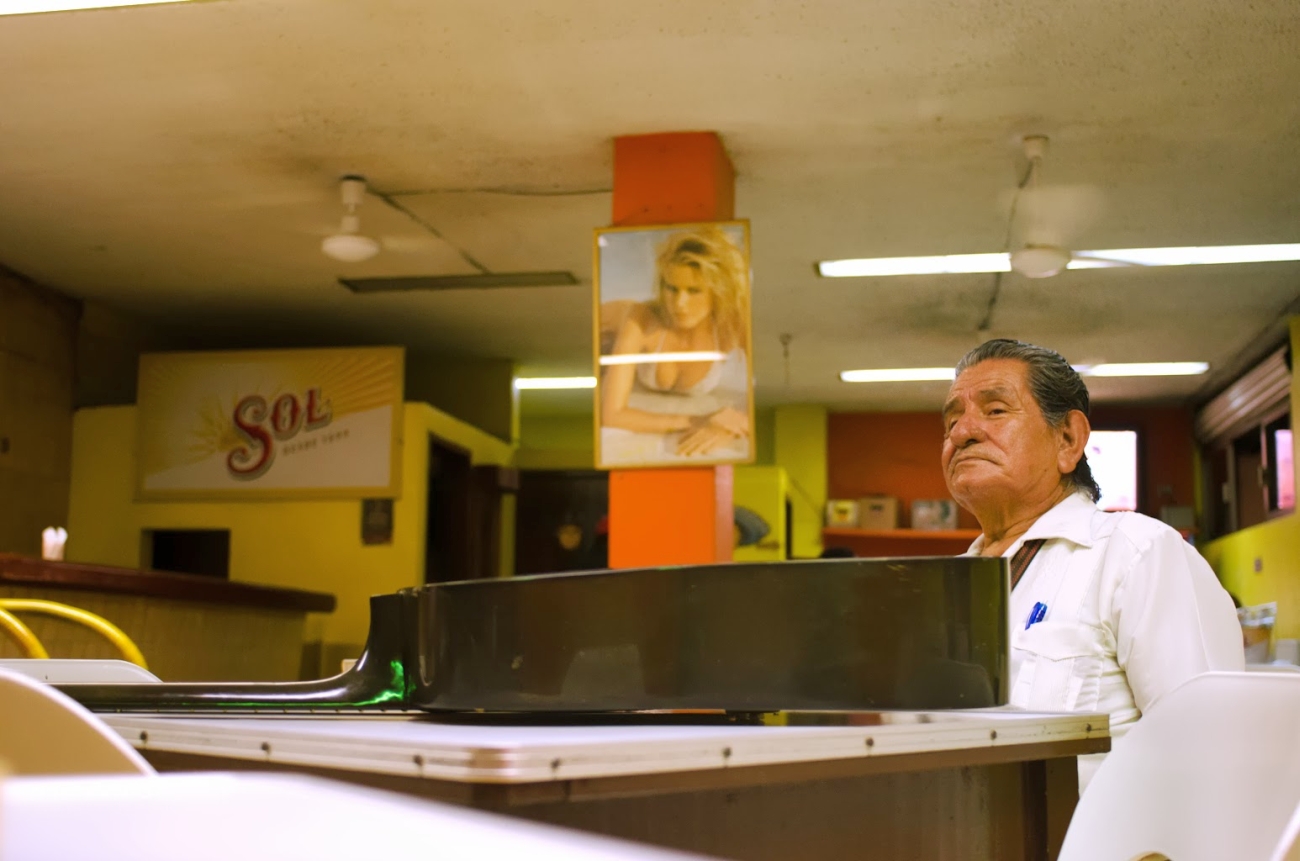
After a couple of songs and a couple more beers we leave Santana’s aquamarine walls and head down Zaragoza street to Bar Titos. Posters of half-naked women on the walls give the bar its racy element but the atmosphere is otherwise tame, with a few couples swinging to norteña music and kids wandering in and out, looking to sell candy or watch the soccer game for a few minutes. No air-conditioning here, just slow, lazy fans pushing around the salty Veracruz air.
When we get to Noche Buena bar on Arista street, I immediately fall in love with its swinging wooden doors. Every old cantina should have a wild west feel to it. Tonight, a Wednesday without a live band, the mood is relaxed and customers sit in clusters, sipping tequilas and sucking on limes sprinkled with salt. On the T.V. behind the bar, 1950’s Mexican movies play and a cat named Alfonsa rubs up against me begging for attention.
We take a break from drinking to sample the fare at Joyce’s favorite tacos de guisado stand, Los Gueros, in front of Sanborns restaurant off the main plaza. She orders a sweet tamale de elote and I eat a pork taco in spicy green tomatillo sauce and one of egg mixed with mild chile pasilla. We share an horchata — the classic rice milk drink with hints of cinnamon.
We set out from the stand on a night ramble through the historic center’s plazas. I am remembering one that I stumbled upon on my last visit here when I was a mere tourist without my local tour guide. There was a Cuban son band playing that night, and old and young couples were swaying to the music on the street. Men double my age and half my height even asked me to dance.
I find out it’s called la Plaza de la Campana for the large bell that looms over the plaza’s cement stage. You can find music there regularly. This night a band plays boleros — Mexican love songs — to a crowd seated around tables. The plaza is ringed by seafood restaurants and tiny torta shops and spectators appear to be settling in to watch until dawn.
La plaza de la Lagunilla is also lovely, with a square of park benches filled with kissing, whispering lovers and a statue of Benny Moré, the famous Cuban composer who was adopted by the Veracruz people as a native son.
La Pachanga is the last stop on the night’s pub crawl. It sits across from Veracruz’s famous portales and is the city’s late-night locals hangout. On the weekend, cumbia and salsa bands entertain the slightly lit crowds of dancers, revelers, lovers and those looking for love. After a few tequilas everyone is up and dancing, even though tonight it’s only music over the speakers and the morning is slowly washing in like the Veracruz tide.
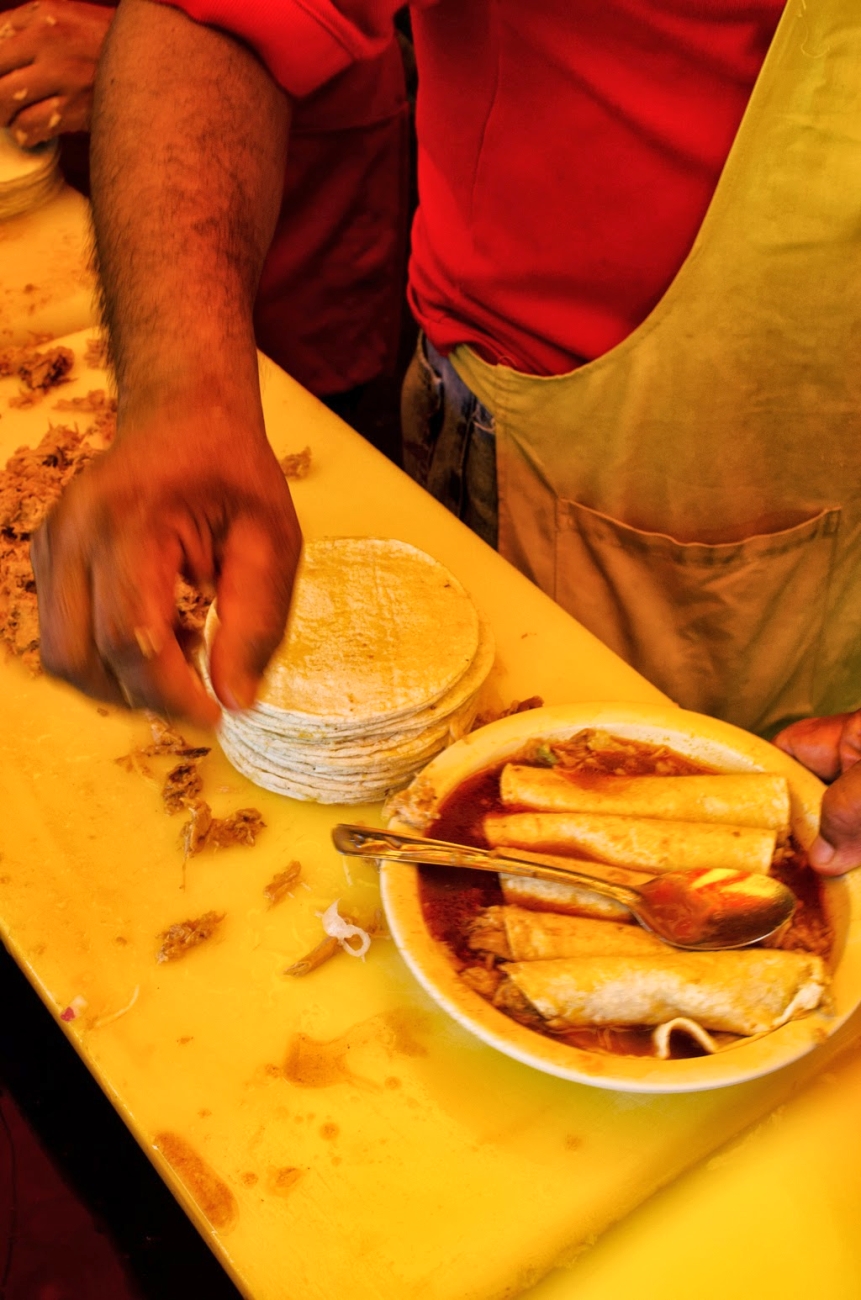
Breakfast for Veracruzanos means picadas (flat thick tortillas with a smear of beans, salsa and cheese), gordas (puffed dough that resembles tiny elephant ears made either savory or sweet) and tacos de cochinita pibil from David’s taco stand on Gómez Farías street. David’s cochinita is not like cochinita in Mexico City, where the pork is swimming in a spicy garlic and achiote sauce. This version is a mild and fragrant cochinita broth ladled on top of tightly rolled pulled-pork tacos. The stand is only open from 10 to 4 everyday. Thank God or I would probably have eaten every meal there during my visit.
Seafood is ubiquitous in Veracruz. The city’s coastal location has not only made it an important shipping port, but also a vital source of the mariscos that jarochos — Veracruz locals — are crazy about. We’re too late for the fish market that is 10 minutes outside of town. Its stalls start to shutter their doors by 3 p.m. most days and the real action there is in the morning. But we do find El Torbellino, a local seafood restaurant without all the cheesy nautical decorations and annoying waiters hassling you at the door.
We eat a plate of snail ceviche — thick, tender snail meat “cooked” by lime juice and mixed with a sprinkling of fresh tomatoes and cilantro — and sample a shrimp cocktail that is less sweet than most I have had in Mexico. Both taste amazing, especially with a cold beer, although we agree that the texture of the snail takes some getting used to.
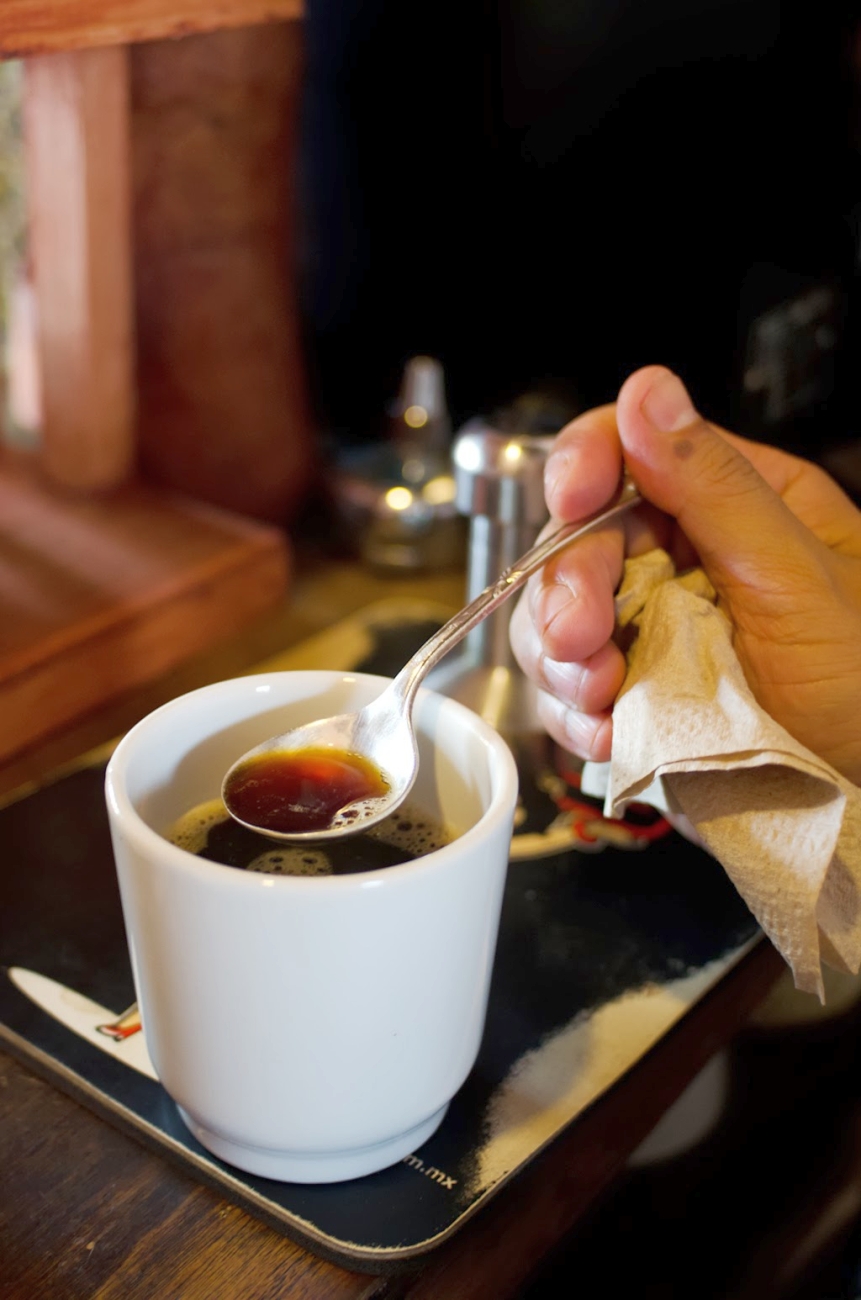
The following day we wander away from the city’s heat and take the bus to Coatepec for a final culinary escapade. Joyce assures me that this mountain town has the best coffee in Mexico and after visiting I tend to agree. Avelino’s cafe, downtown Coatepec in front of the San Jerónimo church, is a shrine to the roasted bean, and owner Avelino Hernández sits with us for over an hour talking about his upcoming book, Las Frutas Encendidas, and coffee’s spiritual qualities.
We also visit the Resobado bakery, which looks like an old woodworking shop and smells like heaven. Along its spartan walls are wood-fired pastries and breads, and the place permeates with the smell of yeast and campfire. We buy cookies with piñocillo (a type of Mexican brown sugar), wheat yeast rolls and conchas (sweet bread).
I want to be able to say that Coatepec is truly the best place for visiting coffee-lovers and so as a security measure we stop at Cafetal Apan for a final cup of coffee. I’m not let down. In fact more than down, the caffeine gives me a buzz I won’t lose for a couple of hours until we’re finally sitting in Las Tradiciones restaurant in the Costa Verde neighborhood downtown Veracruz chowing down on steaming hot ground beef and potato empanadas and drinking cold beers in the pouring rain.
I’m in a bit of a panic at this point that I haven’t yet tried the Naval hotdogs or been to Emily’s Antojitos on Zapata street that I heard is incredible. I also want to make my own seafood feast in Joyce’s kitchen from what I can find at the fish market. But time is running out. I decide incredible empanadas are not a bad final feast.
By Lydia Carey
[Photos by Joyce García]

Locations
Santana’s Bar
Zaragoza
(In front of Los Portales)
Veracruz
Bar Titos
Zaragoza 208
Veracruz
Rest-Bar Noche Buena
Mariano Arista 803
Veracruz
(229) 932-5122
La Pachanga
Mario Molina 100
Veracruz
Tacos de David
Corner of Gómez Farías and Esteban Morales
(In front of Notiver)
Veracruz
Mercado la plaza del mar (Veracruz Fish Market)
Corner of J.M. García and Fidel Velásque
Veracruz
El Torbellino
Corner of Esteban Morales and Zaragoza
Veracruz
Avelino’s Cafe
Mansión de Los Azulejos
Aldama 4
Coatepec
(228) 816-3401
Resobado Bakery
Constitución 3
(228) 817-8888
Coatepec
Cafetal Apan
Constitución 48
Coatepec
Las Tradiciones Restaurante
Mar Mediterráneo 338
Veracruz
ABOUT THE AUTHOR
 Lydia Carey is a full-time writer and translator living in Mexico City who loves to eat. Her work has been published in Mexico’s English-language newspaper The News and The New World Review. She can be contacted at carey.lydia8[at]gmail.com.
Lydia Carey is a full-time writer and translator living in Mexico City who loves to eat. Her work has been published in Mexico’s English-language newspaper The News and The New World Review. She can be contacted at carey.lydia8[at]gmail.com.
The post Here’s What You Can Expect During A Food Tour Of Veracruz appeared first on The Expeditioner Travel Site.
]]>The post Turning The Car Around: One Road To Expatriatism appeared first on The Expeditioner Travel Site.
]]>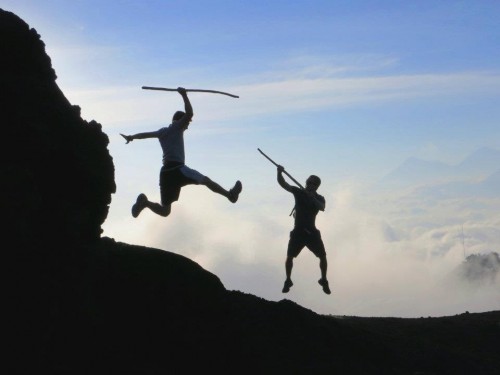
Stories can be told from limitless angles of perspective. So let’s begin this tale from the viewpoint of a Salvadorian family living in a small, rural village. It is a sunshiny day in a one-goat town a few hours drive and world away from the busy capital — a place far removed from the beaches and bars where gringos tend to roam. The day begins no different as previous days, weeks and months. A young couple with a four-year-old son and eight-year-old daughter tend their one-room store across the street from their home. One of their more valuable possessions, a female goat, is tied in front of their store.
Then comes a moment that will lead to a story that their children will retell to their friends at school, mother will recount at family fiestas and the father will tell his soccer buddies, that — sí, no les miento — this really happened. An ’88 Volkswagen Jetta pulls up to the front of their store. Inside are three road-rugged gringos, a puppy and a baby goat.
The gringos get out and begin to chat in shaky Spanish with the family. Pleasantries, smiles and nods are exchanged. Then the gringos huddle and converse amongst themselves in English and come to an agreement. They go to the car, fetch the goat and present it to the now elated family as a gift. This day has taken a unforeseen turn that no previous day, and let’s be real, no subsequent day, is likely to take.
They way stories in the village are swapped and embellished with each telling, we can only guess 10 years from now how the “gringo goat story” will be told: They were gringos — seven feet tall — having just returned from rescuing the goat from a burning barn where every man, woman, child — but not the goat — was killed, so they came to our village and gave us the sole surviving goat.
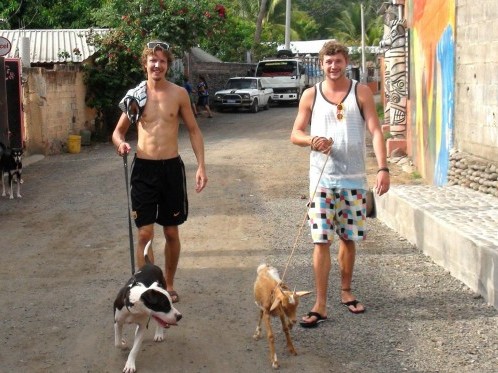
Actually, the goat was a gift for Derek Girard on his 26th birthday. Since he was a kid, Derek had an obsession with goats. To this day, goats are his favorite animal and he loves them with the passion that Miley likes controversially shaking it. He and his younger brother Dustin have had the tradition of one-upping each other on their birthday. Derek will have troubling one-upping the goat (Dustin’s favorite animal is an elephant).
Getting the goat was no easy task. Dustin and friend Dan Pangman spent five hours in the Salvadorian countryside searching for one that was for sale. The process might have been shorter, but prior to El Salvador, the trio had spent time learning Spanish in Mexico, where word for goat, chiva, in Salvador means, cow.
USD$20 and a language lesson later, they had a baby goat, which “shit all over the hostel and ate the garden.” The goat joined the rag-tag trio and took long walks on the beach with them and their 4-month-old puppy in the surf town of El Tunco, El Salvador, before reluctantly, and with heavy hearts, they realized that the goat needed a family; one with a mother and father whose M.O. didn’t consist of smuggling the goat — who couldn’t stand to be away from the trio — into hostels.
Let’s Back Up a Bit Further In the Story
Dan and Derek met when they were both hired by marketing firm JTI, a company which throws massive parties. Part of their “research” consisted of being flown to Toronto to party in exclusive VIP areas of bars and club. Their research paid off. The party they threw in Vancouver was voted the best party in Canada, which netted them a free trip to Miami (is anyone jealous yet?), where they were ushered into a Miami Dolphins games, and onto exclusive yachts for more, yes, partying.
It turned out the pair had more in common than knowing how to throw a killer party: both had spent three months volunteering in Tanzania, an experience that had stayed with them. Though they were having the kind of fun we must imagine two guys in their twenties must have been having working to throw parties, there was a tug towards something they considered bigger.
Our lives tend to plateau into daily routines, and one chance meeting, one conversation, or one decision is all it takes to shake things up and change everything. A conversation that decided their fate and set out a new course went something like this:
“I want to get out of here, quiet my job and travel,” Dan told Derek.
“Bullshit, you are,” Derek told Dan.
“Yes, I am.”
“If you are, then I’m going to do it too.”
“No, you’re not?”
The challenge was on the table and they both egged each other on enough to meet it. They put in their one month’s notice and soon they were jobless and sitting next to each other in a 1988 Jetta, with a vague plan to make it through South America. “It’s a beauty car,” Derek says with a look reserved for talking about beautiful women. “We’ve done so much off-roading in that bitch.”
Along their way they met Derek’s brother Dustin in Antigua, Guatemala, where they planned to only stay a few weeks. Derek says that it was not difficult to convince his brother to leave his North American routine life behind and join in on the adventure. After staying longer than they planned, they finally left Antigua and headed to Guatemala’s Caribbean coast where they spent three months volunteering in Rio Dulce. Derek describes it as a place where, “a cut becomes an infection in a second and you fall apart pretty quick.”
So again, they came back to Antigua to recharge their batteries, planned to stay a couple weeks but stayed a couple months before they were back on the road. They made it as far as Panama. There they were supposed to ferry their car across the canal and continue their travels on a fresh continent, but they felt a tug of having left something behind.
“Antigua had our heart,” Dan says, “We needed to go back.”
As expats in Antigua know, that’s the story of how many a two-week tripper turned into an Antigua Expatriate. Of the countless places they stopped off across the thousands of miles of their journey, it was Antigua, that magical “fairy-tale city” in the highlands, that felt like home.
In their previous stays, they had helped friends, Carlos and Carolina, throw a successful party at their corner bar Porque No, and after juggling around dozens of ideas about what they would do, they decided to “stick with what [they] knew” and open a hip-hop bar. Their goal had been from the beginning to use their talents to give back, to volunteer their time and support efforts, and they saw their vision for their bar as supporting that.
“You have to support your life at some point,” Dan says, “We’re passionate about travel and volunteering and giving back, and this is a way to do that on an ongoing basis.” Dustin and Derek are on the same page. “Our trips were about the pay-it-forward model, giving people good vibes. The law of attraction says that when you give out positive vibes, positive vibes come back to you.”
But this is easier decided than done. In Antigua this is an uphill battle for three gringos needing to get through a pile of paperwork and licensing. Most people “in the know” around Antigua would have told three gringos barely speaking the language a sarcastic “Good luck.” But perseverance and good vibes are a powerful combination, one that can beat most odds, and after eight months of tireless work, and struggle against what some thought a pipe dream, they found themselves serving up opening night drinks.
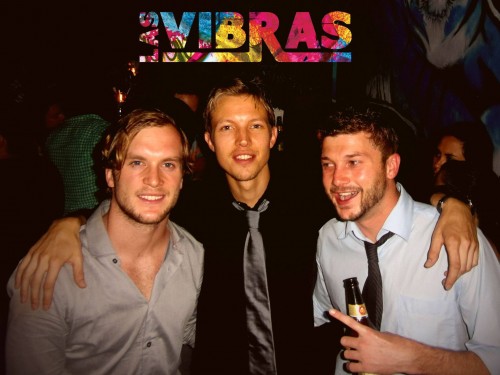
La Vibras Opens For Business
It’s opening night at La Vibras (Spanish for Vibes) and the house is full. The crowd is a dense concentration of Antigua’s heavy-hitting expatriates who have come to show their support for Derek, Dan and Dustin’s endeavor. That presence means a lot. It means they’ve carved deep inroads into the community. Upon my return to Antigua the month before, it was nearly impossible not to meet Derek, Dan and Dustin, as it seemed most everyone in town not only knew them, but also had nothing but good things to say about them.
I am walking around with a digital recorder interviewing people who are all ecstatic to be here. In the very least, everyone is excited about the free drinks from 6-8 p.m. This means by 8 p.m. I am drunk, and in good, bacchanalian company. Listening to my interviews as I write this, they crescendo with my level of imbibing. Unnecessarily aggressive interviewing fueled by joyous inebriation and rude interruptions and rambling questioning, I decide is the appropriate term for my voice I am listening to.
Everything I record after 9 p.m. is painful for me to hear, but I type out the important stuff and then delete the recordings for fear that these could fall into the wrong blackmailing hands — my interview with Derek sounds more like harassment than reporting. Upon his saying, “I believe everything happens for a reason,” I hear my voice respond, “What do you mean? Does everything happen for a reason, because some people die sad and alone?”
WTF, Luke? But the vibe of Las Vibras is one where everyone is enjoying themselves to the max. Antigua, and other such dots on the expatriate map, is a place where a vision like this can materialize when a person commits to their casual daydreaming. The consensus seems universal: Derek, Dan and Dustin are refreshing to have here, opening a kind of bar that the community was lacking: “Where sleek meets the street,” as Derek puts it.
The night began with Dan playing music, both covers and original, on his acoustic guitar, and then led to upbeat hip-hop and pop music. People are drinking, dancing and admiring the graffiti art covering every wall. Alex, a British expat in Antigua, spent three months perfecting and finishing the wall art. He painted the exit signs the day before opening night.
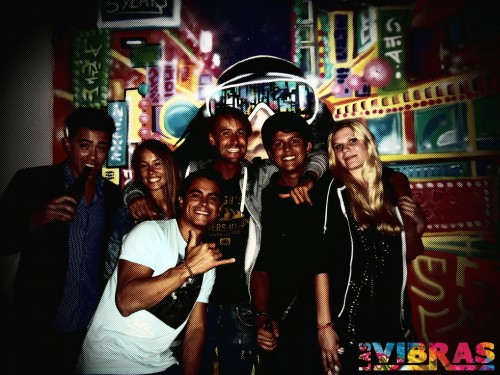
When you follow the line of cause and effect long enough, you see that all of this — the swaying revelers, the art, the music, everyone in this room — is the result of a conversation that led to a dare, which led to not backing away from a risk. Dan put it perfectly: “A risk like quitting your job, going traveling, following your dreams — it’s riskier not to take it. You can always revert back to your mainstream lifestyle, but you can’t go and live out that dream when you let it pass by.”
Derek, basking in the glow of a successful opening night thinks back to the eight months it took them to get to this point. “It’s all about positivity. Every time you get a no, it’s just a challenge. They can say no to us all we want, but we are going to continue going. They say, no no no no, and we say yes yes yes yes.”
“My life in Canada was not based on happiness,” Derek continues, “it was based on all the wrong reasons. The pressure that they put upon you in society to be successful, graduate from high school, then get a degree and a job and start working. I am going to live life for happiness. If I’m happy, I can make other people happy, and if I’m miserable, I can’t.”
No one here tonight seems miserable. There’s a special vibe in the air, and the buzz of “the new place” has yielded to a night when La Vibras opened its doors and invited the world at large to come on in and throw back a round.
On my recorder, I skip through several hours of irrelevant interviewing I conducted near the bar. It seems by 11 p.m. that I am using my microphone exclusively to try to talk to girls; only occasionally remembering to ask them about the bar. “I’m stoked,” a Peace Corps volunteer says over the sounds of music and people enjoying themselves, “tons of people, great vibes, music is good, this is great.”
And just as a goat in El Salvador found an improbable home in the countryside, it seems that Derek, Dustin and Dan have found theirs in Antigua.

About the Author
 After setting out to hitchhike from Chile to Alaska, Luke Maguire Armstrong stopped in Guatemala where he spent four years directing the social service programs of the charity Nuestros Ahijados. He is the author of iPoems for the Dolphins to Click Home About, which is especially enjoyed by people “who don’t read poetry.” His new book, How We Are Human, was recently released. (Follow Luke on Twitter: @lukespartacus)
After setting out to hitchhike from Chile to Alaska, Luke Maguire Armstrong stopped in Guatemala where he spent four years directing the social service programs of the charity Nuestros Ahijados. He is the author of iPoems for the Dolphins to Click Home About, which is especially enjoyed by people “who don’t read poetry.” His new book, How We Are Human, was recently released. (Follow Luke on Twitter: @lukespartacus)
The post Turning The Car Around: One Road To Expatriatism appeared first on The Expeditioner Travel Site.
]]>The post You Haven’t Experienced A Sunrise Until You’ve Done So In Tikal, Guatemala appeared first on The Expeditioner Travel Site.
]]>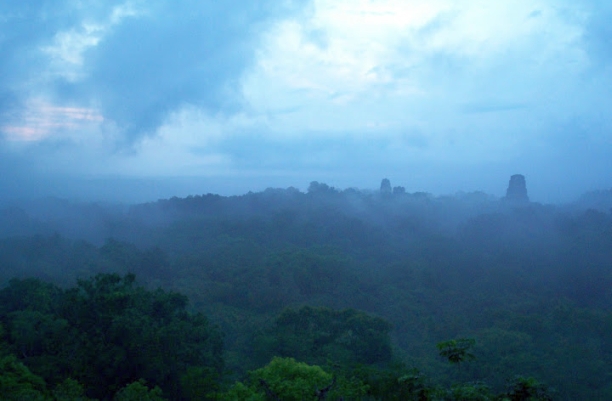
The only thing more magical than hiking through a jungle in the dark, following a path that must be made of white gravel because it glows faintly in the full moon, is hiking through a jungle in the dark past big black hills — blacker than the sky behind them, blacker than the trees that catch the moonlight — hills you know just have to be pyramids. This is Tikal, Guatemala. And getting up at 2:30 a.m. to make the sunrise tour suddenly feels worth it.
As I walk, I wonder about the guide, somewhere ahead of me in the darkness, urging us on through the night, not winded at all, like I am. This magnificence has probably grown commonplace to him — dull, almost. Does he ever wonder how these never-ending waves of travelers can keep marveling at something he sees every day?
A towering ceiba tree reaches pale arms into the sky, and the guide stops us for a moment. The ceiba, he tells us, symbolizes the connection between the underworld, the terrestrial world and the skies. Certainly I can feel that now as the ceiba disappears into the darkness above and the darkness below.
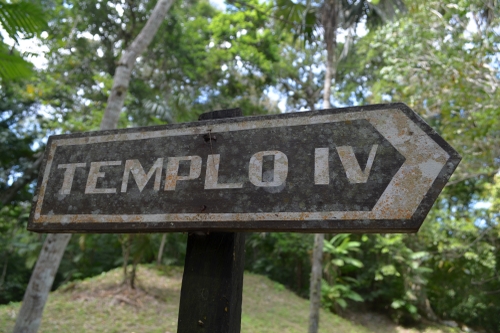
Our guide leads us onward through misty patches and bits of visible ruins. Finally, we reach Templo IV and slowly climb the long wooden stairs to the top, where other groups have already arrived, all sitting in clumps, talking softly so as not to disturb the reverence that swathes this island temple in its own sea of foliage.
It’s barely getting light, the black turning to misty blues and butter yellow as we watch the sun burn off the fog. It rises over an endless jungle, where the only signs of civilization are the tips of Mayan pyramids that have ruled here for over a thousand years.
The birds begin to chirp. Just a few, scattered here and there. Then we hear it: a low rumble, starting at a distance and coming closer and closer. An invisible menace stampeding toward us over the giant leaves of the canopy. It takes me long moments to understand: rain. The patter grows louder, turning into its own sort of music as we pull out cheap plastic ponchos and umbrellas. Still we sit, rooted to the spot by respect — worship almost — for the power of nature. The rain hits hard, drenching us immediately. Just as quickly, it rolls on past. When the roar of the rain turns to a drip-drop chorus, the birds take up the melody, fully awake now — a cacophony of life.
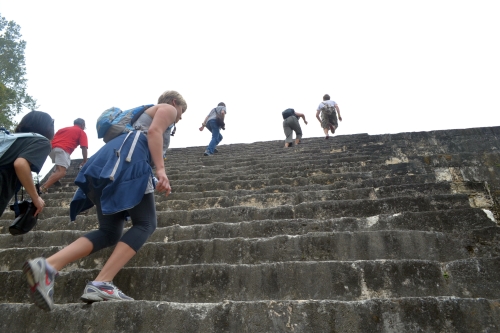
Our guide watches with us, speaking only to call us to silence, for meditation, when some of the young backpackers grow restless. Raindrops and dewdrops in the trees catch the morning sun like strings of Christmas lights. I want to stay forever.
Finally we have to go; there are ruins to see, stories to hear, pyramids to climb. Our guide, apparently not immune to the wonders of his job, excitedly shows us a groundcover plant whose leaves close up when he touches them.”Sleeping,” he says as we poke gently at the plants and jerk our fingers back when they move, animal-like.
He takes us off the trail to smell aromatic flora and look for ant hills, under which dwell the clever leaf-cutter ants, one of the few animals to “process” their food. After they cut their jigsaw pieces of leaf, they leave them to ferment with their own saliva. A fungus grows and they feed the colony from that. I see evidence of their handiwork, now that I know what to look for, but I can’t find any of the actual creatures.
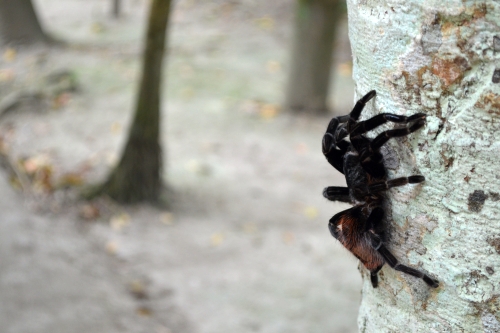
Undaunted, our guide quickly pulls our attention away and points out what some people call the tree of love, because it embraces other trees. Its alternate name? The killing tree, because its embrace eventually chokes the life from its jungle companion. But before we can ponder the symbolism of that, our guide finds us a tarantula and delightedly hands it around. I take it. After all, I’ve just been cave swimming and rope ladder climbing down a waterfall, and Guatemala’s making me brave.
I love the serenity of Tikal: the lack of insistent hawkers, the verdure everywhere you look, the gorgeous steep temples, the foliage that can hide other tourists well enough to give you a temporary sense of solitude.
However, Tikal has not always been so quiet. An estimated 4,000 structures remain, only 20% excavated. Anthropologists believe that the commoners lived in open-sided buildings of wood and palm thatching, which have long since dissolved into history. How huge and bustling this city must have been at its heyday, and all without natural water. The Mayans dug their own wells out of rock and lined them with lime, collecting enough of the 70-some inches of yearly rainfall to last them through the dry season.
It’s hard to believe — while standing beneath the giant trees, or surrounded by leaves half as big as me — that this wasn’t always jungle. The wild beauty crept in only after the Mayans abandoned Tikal 1,000 years ago. I imagine the jungle lurking on the outskirts, like an animal, waiting to take back its home.
At Tikal, they also staged the famous basketball-like games involving ritual sacrifice. One theory is that as a finale, they killed the captain of the winning team because he had proven himself worthy of the honor of fighting against the evil gods in the Underworld.
I stand in one of Tikal’s now-grassy ballcourts, surrounded by steeply slanted stone walls, and I can imagine it all: the carved stone hoops mounted on the walls, the ricocheting ball, the crowds roaring with religious fervor, the muscled and bare-chested warriors locked in a life-and-death struggle. I close my eyes and see those same brave players, dead now, trapped amid the roots of the ceiba tree, trying to break free to fight the unstoppable gods of the Underworld, and I come to the realization that, honor or no honor, this is one game I would try to lose.
After the guide sets us free to explore on our own, I scale Templo V, all 187 feet of it, via a modern wooden staircase so steep it’s more like a ladder. They built it to keep tourists from injuring themselves on the sharply angled pyramid steps. I sit at the summit, dizzy with the height, while across the jungle rises Templo IV, where I so recently watched the jungle wake up. I think back to the day before, and how I’d debated about the sunrise tour. 2:30 a.m? Were people crazy? No. People aren’t crazy. But the world is amazing.
By Melinda Brasher

About the Author
 Melinda Brasher spends her time traveling, writing fiction, and teaching English as a second language in places like Poland, Mexico, the Czech Republic and Arizona. Her talents include navigating by old-fashioned map, combining up to three languages in a single incomprehensible sentence, and dealing cards really, really fast. Check out her blog at MelindaBrasher.com.
Melinda Brasher spends her time traveling, writing fiction, and teaching English as a second language in places like Poland, Mexico, the Czech Republic and Arizona. Her talents include navigating by old-fashioned map, combining up to three languages in a single incomprehensible sentence, and dealing cards really, really fast. Check out her blog at MelindaBrasher.com.
The post You Haven’t Experienced A Sunrise Until You’ve Done So In Tikal, Guatemala appeared first on The Expeditioner Travel Site.
]]>The post The Driest Place on Earth: From Bolivia’s Salt Flats To Chile’s Atacama Desert appeared first on The Expeditioner Travel Site.
]]>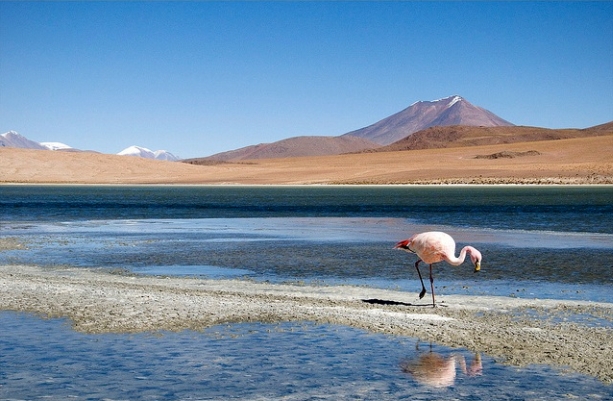
Pan-American Transmissions: Part 11
“Pan-American Transmissions” is a travel series from Special Contributor Diego Cupolo as he travels south from Nicaragua to Argentina. He has few plans, a $10-a-day budget and one flute-playing gypsy companion. Check back as new dispatches are posted from the road.
Pink flamingos wade through blood-red lagoons on a seemingly endless plateau of snow-covered volcanoes, vast salt deposits and leftovers from ancient lakes that dried long before the first human ever stepped foot on the continent. Surrounded by this panoramic gallery of Dalí paintings, I peel off the cracking skin from my knuckles and wonder, “How the hell did we get here?”
After many years spent living in crammed city apartments, Ania and I needed space — a lot of space — so we headed to the southwest section Bolivia where the Andean high plains, known as the Altiplano, meet Chile’s arid Atacama desert and spill down into the Pacific Ocean. With its rare geologic formations and an average rainfall of just one millimeter per year, the region is one of the driest, strangest places on Earth, leading many scientists to say it looks more like Mars than any part of the blue planet we call home.
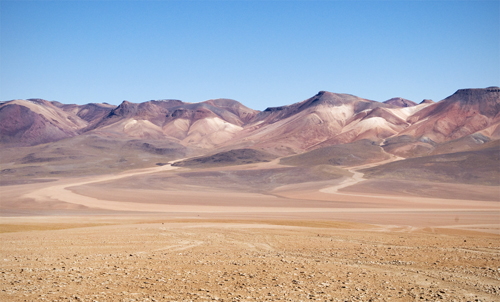
Ania and I arrived eager to get lost in other-worldly destinations like the massive salt flats of the Salar de Uyuni and jagged canyons that make up the Valle de la Luna. As we learned in the Amazon, Bolivia is a nation of extremes and the most isolated places are only accessible through tours, which is lame, but what else can a cash-strapped traveler do?
We hired a driver for a three-day desert tour to the Chilean border and when we crossed over, Ania and I took exploration into our own hands by renting mountain bikes. Both experiences had their pros and cons, but in the end, the heavy Atacama sun pounded our shoulders, the dry desert air made our skin rough like sand paper, and it was all worth it when we saw the barren desertscape turn into a kaleidoscope of purple every sunset and sunrise.
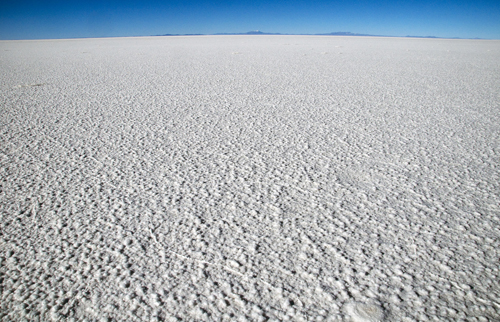
The Salar de Uyuni
Ania and I watched countless herds of llamas pass the bus window and ate even more quinoa-potato soups before we would reach the town of Uyuni and receive one crucial piece of advice: “Try to hire a tour guide that won’t drink and drive.”
As we soon found out, Salar de Uyuni tour agencies vary greatly in quality and the amount you pay is not always an indicator of the experience you’ll get. Breakdowns, flat tires, bad food, alcohol-induced accidents: a lot can go wrong on a multi-day off-road tour through the open desert.
For better or worse, we chose the Estrella del Sur agency to take us on a three-day tour through the Salar de Uyuni and Eduardo Avaroa Andean Fauna National Reserve before dropping us off at the Chilean border. Total price: $700 Bolivianos, or about USD$100 with food, accommodation and park fees included.
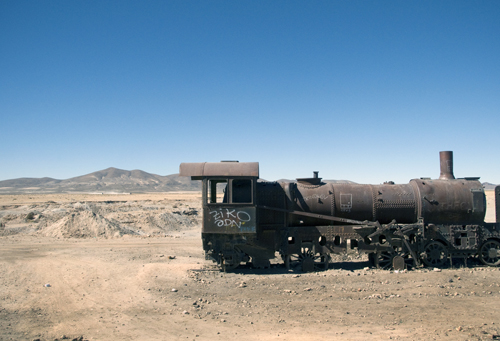
We began early in the frigid morning air. The driver pulled up in a Toyato Landcruiser. His name was Fredo and he looked sober, which was good, so we loaded the car with four Irish medical students that would make up our tour group for the next three days. Our first stop was an enormous abandoned train graveyard outside the town, an orgasm for photographers and rust enthusiasts, but Fredo told us we had 10 minutes to explore the site so we could rush to the second stop, a gift shop that sold little llamas made from salt, where we would spend half an hour.
With souvenirs tightly secured in the back, we entered the Salar de Uyuni, the largest salt flat in the world. A place is so large and so flat that Earth observation satellites use its surface to calibrate their altitude meters and global positioning systems.
According to fossil records, the Salar was part of prehistoric Lake Minchin more than 30,000 years ago. Standing at 11,995 feet above sea level, Lake Minchin would’ve competed with Lake Titicaca for highest lake in the world, but it dried up thousands of years ago, leaving behind the flat concentration of salt we see today.
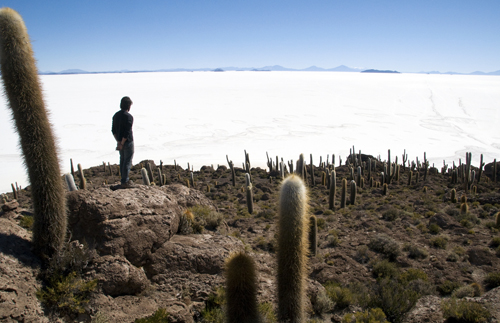
As we drove through the blinding white leftovers of history, Fredo explained the volcanoes around us used to be islands when the lake was still around. We took a chance to stop at Isla Incahuasi, one of the small “islands” in the middle of the Salar, and got out for a short hike on the rocky outcrop. Here visitors can walk over old corrals that once housed prehistoric lake creatures and stand among giant cacti that grow one meter per century. Not bad.
When we returned to the car, Fredo cooked up a few Alpaca steaks and we ate lunch as he boasted about how Alpaca meat was free of cholesterol. Not bad at all. The tour was looking good at that point.
Then the Irish students blasted Lady Gaga music in our car as Fredo rushed us out of the Salar. He said we needed to reach the hostel before sunset, which was confusing since the tour agency told us the highlight of their tour was watching the sunset from within the Salar. Basically, it was main reason to visit the salt flats and we’d be missing it. A tragic realization, but perhaps not as tragic as finding out people over the age of 20 are willfully listening to Lady Gaga.
Without stopping another time on the salt flat, we arrived at the hostel by 4 p.m. and were told dinner would be served in three hours so we could sit and have tea or something. Ania and I took the chance to run away — far, far away — from the tour group and went back into the Salar on foot.
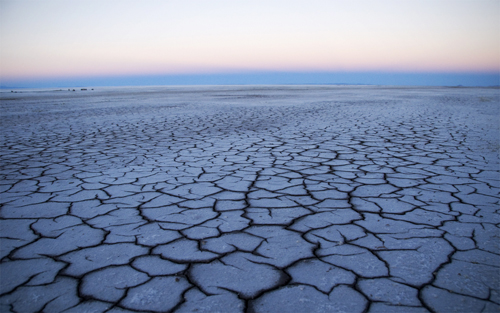
Though we didn’t get far — the place is 4,000 square miles — we did finally get some quality time with the barren land, the silence and the nothingness to contemplate very serious questions. Local legend says mankind was born from Lake Titicaca, but Ania and I figured it was more likely that our ancestors crawled out of Lake Minchin after the water dried up.
It all made perfect sense as the sun set and our shadows grew long while the sky turned into bands of orange, purple and yellow, each color reflecting off the white surface of the Salar.
“I wouldn’t mind dying here,” I thought to myself. And then it got cold and we went back to the hotel for dinner.

The Eduardo Abaroa Andean Fauna National Reserve
Early the next morning, Ania and I made another short trip into the Salar to watch the sun rise and have one more holy experience before breakfast. We came back frozen stiff, ate and then waited for Fredo, who showed up 30 minutes late only to take us on a short ride to the nearest store, where he would sit and talk with the owner for another 45 minutes. All the other tour groups were way ahead of us.
When he was ready, we drove quickly through a region of multi-colored lagoons with Andean flamingos wading through volcanic hot tubs and stopped briefly to take in the surreal imagery as Fredo repeated, “Come on, don’t go far from the car, we don’t have time.” I wanted to punch him in the face.
The rest of the tour pretty much went on like this. Inside the Eduardo Abaroa Andean Fauna National Reserve, we drove through some of the most beautiful scenery in the world to the soundtrack of Lady Gaga and never seemed to have enough time. Volcanos, geysers, boiling mud pits, petrified lava fields, peculiar rock formations, splashes of paint on martian landscapes — the sights were truly amazing, but less enjoyable when broken down into standardized drills: Drive, step out, take a picture, drive.
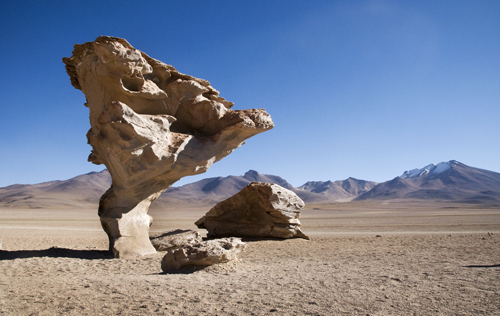
Maybe this is what the tour is supposed to be, but the other tour groups didn’t seem so rushed. Not to mention our Irish car mates’ non-stop celebrity gossiping. Oof. Maybe it was just bad luck.
The last day of the tour, I met a Chilean photographer who shared my grievances and he gave me some good advice: Take the Salar tour with a Chilean company.
This was his third time through the region (fist time with a Bolivian company) and he said Chilean agencies cost a little more, but they provide a much better tour than Uyuni-based companies. It’s the same three-day trip, only backwards so you finish at the Salar de Uyuni.
“Basically,” he said. “Chilean agencies are more likely to deliver the experience they advertise.”
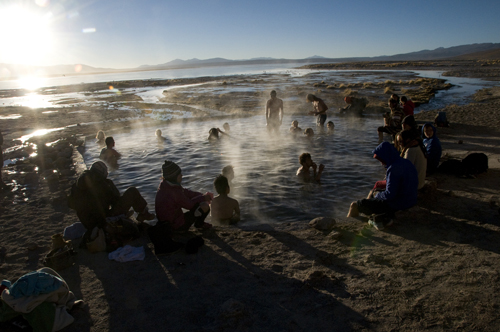
Still, the photographer was explaining all this as we sat in a natural hot spring, watching the sun rise through the steam of a distant volcano. The small inconveniences of the trip were worth the the scenery. It could’ve been much worse. We simply had high expectations for the Salar tour.
That said, Ania and I got dropped off at a lonely bus stop they called the Chilean border, and vowed never to take a tour again.
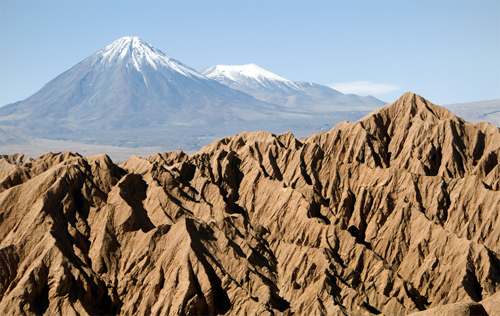
Into the Atacama Desert
An hour after descending 2,000 meters (about 1.25 miles) from the Altiplano, Ania and I reached the Chilean customs office in San Pedro de Atacama where security guards took our apples, calling them a threat to national security even though they were labeled with “Grown in Chile” stickers.
Rules, regulations, working toilets and organic flax seed granola bars — we crossed an imaginary line in the desert and everything changed. After four months in the Andes, Ania and I came down from the indigenous Altiplano and fell back into what most people would would call “Modern Western Society.”
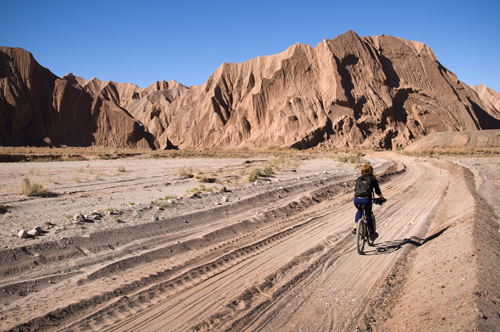
Without hesitation, we took this opportunity to rent mountain bikes. It was recommended by every traveler we crossed and costed about USD$10 for a day, so what the hell? With a map in hand, we set out for the Atacama desert on our own.
We rode through shallow rivers to a red quartz canyon they call the “Throat of the Devil.” We circled spiraling rock towers. We climbed whatever peak looked interesting and rested in whichever shade seemed inviting. It was a much easier to enjoy the landscape without a guide telling us what to do.
The main drawback to this approach is that we got lost out there. Far away objects can appear closer than they really are in wide open spaces. While trying to find the famed Valle de la Luna, we pedaled about two hours in the wrong direction. Still, in the confusion, we found a few cliffs with unforgettable views over the hypnotizing valley and enjoyed its lunar surface from above.
Sure, we never made it inside Valle de la Luna, but it didn’t matter. We were more than satisfied. This was adventure. This was the reason we had come to the Atacama, a place where the sun burns, the shade freezes and the dry air makes alligator scales out of your skin. Mars climate. Peace at last.
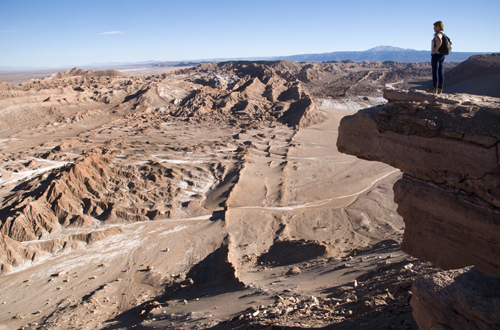
Hitchhiking South and Beyond
There’s a lot more to do in San Pedro de Atacama, but we couldn’t afford it. More salt flats, more hot springs and more geysers. It’s worth a longer visit. Instead, Ania had a plane to catch. After 10 months, our trip together was coming to an end.
With too many stories to tell, we hitchhiked to the paradise port city of Valparaiso, then Santiago, and then all the way over to Buenos Aires where we would slam on the brakes and fly through the windshield. Ania landed in plane seat back to Montreal, which was sad, and I landed in an office chair where I would work for the next five months, which was only slightly less sad.
Without a doubt, we would be reunited again, but not before I finished this long journey and reached the end of the road in Tierra del Fuego.
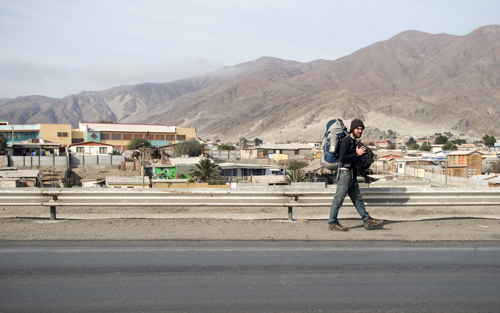
By Diego Cupolo
Coming up next, the final installment of Pan-American Transmissions: La Carretera Austral: On a Gravel Road to the End of the World.
Read all of the other Pan-American Transmissions entries here.

About the Author
 Diego Cupolo is a freelance photojournalist currently on the road to Tierra del Fuego. Most recently he served as Associate Editor for BushwickBK.com, an online newspaper in Brooklyn, and his work has appeared in The New Yorker, The Atlantic, The Star-Ledger, The Australian Times, Discover Magazine and many other publications. View more of his work at DiegoCupolo.com.
Diego Cupolo is a freelance photojournalist currently on the road to Tierra del Fuego. Most recently he served as Associate Editor for BushwickBK.com, an online newspaper in Brooklyn, and his work has appeared in The New Yorker, The Atlantic, The Star-Ledger, The Australian Times, Discover Magazine and many other publications. View more of his work at DiegoCupolo.com.
The post The Driest Place on Earth: From Bolivia’s Salt Flats To Chile’s Atacama Desert appeared first on The Expeditioner Travel Site.
]]>The post 8 Stunning Photos From Lake Atitlan appeared first on The Expeditioner Travel Site.
]]>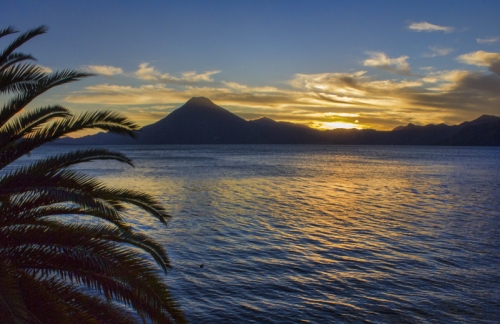
Lake Atitlan in Guatemala — the 1.8-million-year-old 600-meter-deep volcanic lake located a couple hours from Guatemala City — is usually the highlight of anyone’s trip to the country, with its picturesque volcanoes towering over the lake, the small villages clustered along the shorelines and the chocolate shaman who seek spiritual enlightenment in cups of cocoa.
The vagabond Canadian duo behind Hecktic Travels, Dalene and Peter, recently visited Lake Atitlan and put together this photo essay of stunning photos from the lake — including the above picture — complete with sunsets, snowball-shaped clouds and dormant volcanoes. If this doesn’t get you booking a trip there, than nothing will.
For more images of Lake Atitlan, check out my Travel Guide to Guatemala video here.
[Lake Atitlan in Photos via HecktickTravels.com]
The post 8 Stunning Photos From Lake Atitlan appeared first on The Expeditioner Travel Site.
]]>The post How A Radish Festival In Oaxaca Made Me Feel Like A Mexican appeared first on The Expeditioner Travel Site.
]]>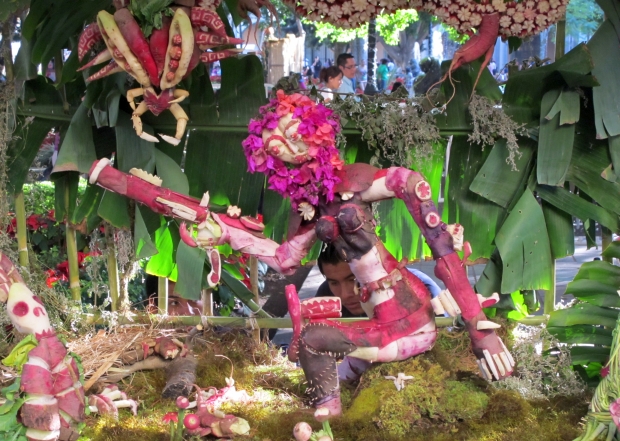
“Oye chica! Tenga aca. Te invitamos!” Someone was calling to me as I walked by a makeshift tent on the side of the street in Oaxaca’s old center. Curious, I joined the speaker, a young Mexican man, as well as a few others, underneath their tent.
They had set up a large folding table which, upon closer examination, I found covered with radishes of all shapes and sizes. “Tomas,” said the man, whom I later learned was named Luciano, as he handed me a razor blade and indicated that I was to choose a radish from the heaping pile. As I carefully selected the perfect radish, the rest of the table contentedly shaved, carved, dismantled and reassembled their own radishes into a variety of different shapes and figures.
If I had come upon this scene a few days before, the request might have seemed a bit odd. However, the previous day on my tour of the sights surrounding Oaxaca, my guide had informed me of my great luck in arriving in Oaxaca just in time for their annual Noche De Los Rábanos (Night of the Radishes) festival. I had never heard of this festival before, but I was one of those kids that made words in my alphabet soup and drew smiles on my pancakes with whipped cream, so naturally I was intrigued by the idea of creating art out of food. I ventured into the Zócalo on December 23 (the date the festival has been celebrated since its inception in 1897) to see exactly what made this festival so famous.
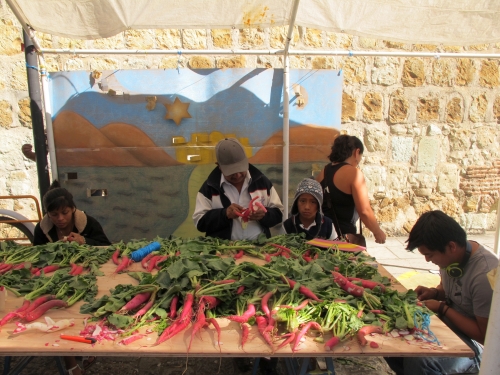
Even in the early afternoon, the main plaza was so full of onlookers that it was difficult to move. The smell of tamales, chile, popcorn and cotton candy lingered in the air and reminded me of the many times I visited the New Mexico State Fair with my family. Vendors called elote and nieve in singsong voices, and children danced to music emanating from the many different portable speaker systems as happy families shared homemade picnics.
While I strategized how to get a better view of the exhibition stalls, an older gentleman motioned for me to take a seat next to his family. “Quieres?” he asked, and offered me a chicken taco.
“No gracias,” I replied.
“Feliz Navidad,” he said with a toothless grin. I then asked him why so many people come to Oaxaca every year specifically for this festival.
“It is important to celebrate our history and our art,” he explained. “It is a time for us to come together and be thankful.” Despite me asking, I never did not get a “historical” explanation about the origins of Noche De Los Rábanos from any person that I asked about the festival; it was obvious that the most important thing to these locals was spending time together and sharing in the appreciation of Mexican creativity. And the joy was tangible.
Noche De Los Rábanos was first celebrated in 1897 in Oaxaca’s “zócalo” (main plaza). Originally, radish farmers, with an overabundance of radishes from the harvest, decided to create art out of the excess crop in order to generate more radish sales.
However, this activity quickly grew in popularity. Since then, annually on the morning of December 23, artisans from all over Oaxaca converge on the zócalo and spend all day constructing intricate scenes made of these large red radishes. These radishes, grown especially for this event, can weigh up to 3 kilograms and grow to lengths up to 50 centimeters. They are left in the ground for months after the normal harvests so that they are able to attain their giant size and strange shapes. The artist whose creation is named best in show gets their picture in the local paper.
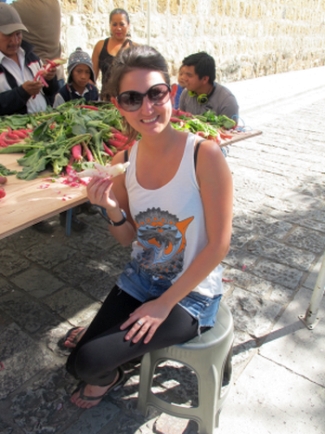
I struggled through the crowd to try and get a better look at the different stands, and as I proceeded I felt hands pushing me forward. My fellow neighbors were moving out of the way to make sure I was able to see. “Veas!” they said, pointing out sights they wanted me to see. Suddenly, I was transformed from a mere visitor in a foreign country into a nominal member of one enormous family.
As I moved from one stand to the next, I found myself casually placing my hand on my neighbor’s shoulder to steady my tip-toed stance. We all smiled in response, and I realized how many times in New York I had stood in close quarters with my fellow New Yorkers, actively trying to avoid physical contact. In Mexico, personal space has another purpose: its breach, rather than an offense, signifies friendship, comradery and acceptance.
I moved along with the wave of people, and each stand was more impressive than the last — an amazing representation of the creativity, beauty and history of Mexico. The artists, I learned, are mostly radish farmers turned professional craftsmen and aficionados. The scenes cover an array of topics from the nativity, to models of saints and famous figures, to fiestas, to the flora and fauna of Mexico. While the main artistic features are made of radishes, these scenes include other materials such as dried flowers and corn husks.
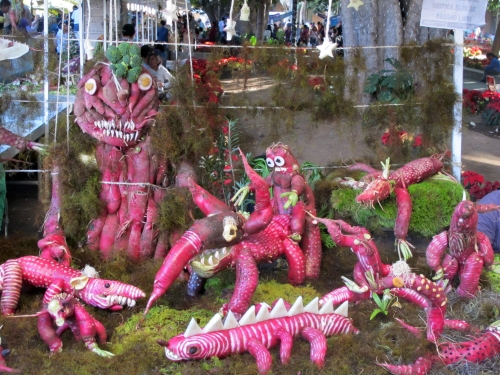
“Ah, un delfin!”, Luciano said to me approvingly, looking over my shoulder as I attached the fins to my radish-turned dolphin. As we spent the next hour admiring each others’ creations, my fellow artists asked me about my experiences in Mexico, how I was enjoying Oaxaca and what it was like to live in New York City.
We conversed like old friends, Luciano poking fun at my dolphin’s lopsided tail, another comparing his hand-like creation to that of a witch. It made no difference that I was a single girl traveling alone, that my Spanish was not perfect, nor that prior to that day I had no idea that Noche De Los Rábanos even existed.
After I visited all of the different Rábanos scenes, I wandered back towards my apartment through Oaxaca’s main thoroughfare. People smiled and exchanged Feliz Navidads, and gasped with excitement when fireworks streaked the sky with radiant blues, pinks and oranges.
As I left the main street behind, I passed by the now deserted tent where we had earlier created our own radish art. Someone has arranged all of our creations into one beautifully chaotic diorama.
Even though our scene had no specific theme (we had created everything from animals to cars to abstract figures), to me it was the most powerful scene of all because it represented the beauty that is created through acceptance and friendship. I smiled, thinking to myself how Noche De Los Rábanos is much more than just an art festival. It is a true expression of the Mexican persona: open, accepting, generous and full of joy.
By Chelsea Perino

About the Author
 Chelsea Perino is an avid traveler and has visited over 60 countries, mostly as a solo female. Chelsea recently graduated with a Master’s Degree in Public and Organizational Relations and is now a freelance Public Relations and Marketing consultant and writer in New York City. She is the Co-Founder of her own online lifestyle magazine DIY-NYC.com.
Chelsea Perino is an avid traveler and has visited over 60 countries, mostly as a solo female. Chelsea recently graduated with a Master’s Degree in Public and Organizational Relations and is now a freelance Public Relations and Marketing consultant and writer in New York City. She is the Co-Founder of her own online lifestyle magazine DIY-NYC.com.
The post How A Radish Festival In Oaxaca Made Me Feel Like A Mexican appeared first on The Expeditioner Travel Site.
]]>The post Explore The Colors Of Puerto Vallarta [Travel Video] appeared first on The Expeditioner Travel Site.
]]>Ever heard of the Blackmagic Cinema Camera? Me either, until I watched the above video from Andrew Julian who did a little test run of his new camera while on a trip to Mismaloya, a small village located just south of Puerto Vallarta. (Fun fact: parts of Predator were filmed nearby.)
Besides setting you back a cool $3,000, the Blackmagic prides itself on providing stunning colors due to its 2.5K image sensor and 13 stops of dynamic range. I wish I knew what that meant exactly, but I don’t. However, the proof is in the images, and these images look nothing less that spectacular.
[Trip to Mexico by Andrew Julian/Vimeo]
The post Explore The Colors Of Puerto Vallarta [Travel Video] appeared first on The Expeditioner Travel Site.
]]>The post My Failed Attempt To Conquer Cotopaxi appeared first on The Expeditioner Travel Site.
]]>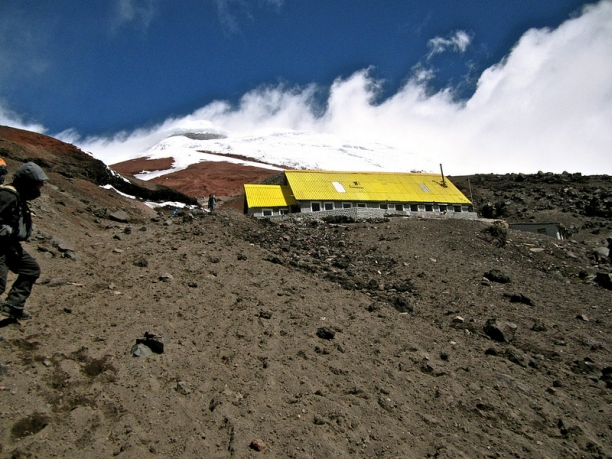
Two grueling hours of climbing through ashy volcanic dirt, each frustrating step taken, I slid backward half a step. We progressed slowly, rhythmically. Sergio, our Ecuadorian guide lead the way, with Stonie and I tagging along, bundled up in bright blue and red, wearing steel-toed boots, equipped with a light daypack and glacial-climbing equipment, our hot faces wanting to break a sweat but unable to do so in the biting cold.
The school-bus yellow roof of the refuge stood out from its ashen surrounds. It hadn’t looked so far from where we started in the parking lot, a short 300-meter climb. However, the incline was 2,000 feet in length, quite a gradient.
We arrived at the Refugio José Ribas (15,780 feet) exhausted. Gusts of wind wrapped themselves around the building almost in contempt of our presence. My skin felt clammy, and my breath deepened in the elevation. We retreated inside for lunch, with the intent of climbing to the summit of Cotopaxi at midnight.
Cotopaxi is one of the three highest active volcanoes in the world at 19,347 feet. It’s not an especially technical climb. However, it can be quite a challenging one for those who make the attempt, certainly for non-mountaineers such as myself.
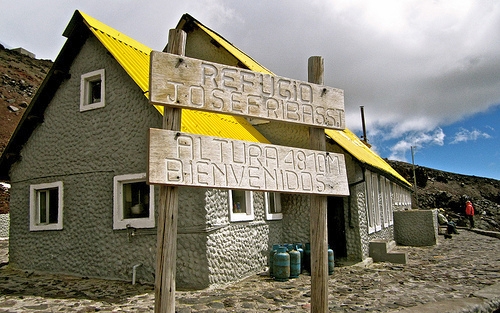
Mountaineering had never interested me, but there was something about Cotopaxi that attracted me. Perhaps it was its perfect conical peak or the idea of hiking a glacier wearing the spiky shoes — crampons, I later learned they’re called. I was drawn to it. I wanted to conquer it before leaving Ecuador. I envisioned peering into the eye of the volcano with arms outstretched in the air, taking in the panoramic view.
I had been training for hours each day the previous six weeks, running and climbing the steps of Cuenca (7,500 feet). I spent three days before the climb hiking in altitudes up to 15,000 feet in the beautiful countryside of Quilatoa Loop. I was prepared physically, and I was prepared mentally. Or so I thought.
We laid out our sleeping bags on one of the 70 odd bunk beds in the refuge, stowed our packs away and ate a meager, tasteless lunch of bread, ham and cheese, along with peppermint tea. It wasn’t much, but enough to restore our energy.
After settling in, we wandered outside to take in the magnificent views of Quito and the surrounding mountains. I was grateful for the blue skies and the sun’s attempt to burn through the bitter cold. I peered up at the summit of the volcano. Whether smoke or a snowdrift, it appeared to be smoking, steady and sophisticated, like a cigar.
After a brief rest, we headed to the glacier for skills training. We hiked another hour in the ashy dirt, our ice picks thrown over our shoulders as miners do after a long day’s work.
My eyes fell upon the glacier up for the first time and I was immediately overwhelmed. It loomed in front of me, bold and challenging me to take it on. My first sense of doubt set in. I surveyed the surreal surrounds, the snow-covered ice, the deep crevasses and small, narrow canyons, the enormous icicles hanging down like crystal stalactites, dripping water and glistening in the afternoon sun.
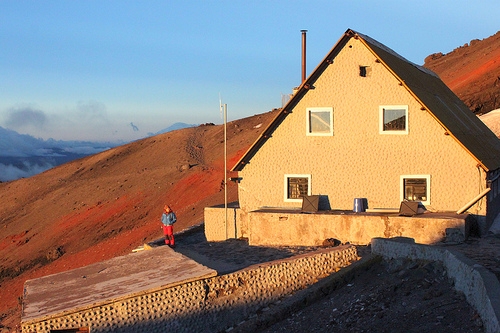
Sergio, unaware of my anxiety, broke my trance, “Right. Put on your crampons! We go on the glacier.”
We tied them on. I scrutinized the sharp metal now attached firmly to my boot like a gladiator sandal weapon. I pushed myself up to stand, the new footwear foreign and awkward. I took a few steps in the dirt the same way a toddler on wobbly legs would.
The three of us stepped up and onto the glacier at Sergio’s command. “Ten point steps,” he demonstrated driving all points of the crampon into the ice with a few steps. “Then, two point steps.” He walked up a steeper gradient using just the front spikes almost on tiptoe, taking long, steady strides. We followed after him, our ankles twisting inside our boots, using muscles that don’t often get much use.
After becoming acquainted with basic walking, we practiced what to do if we fell. Playfully, we rolled down the face of the glacier with distressed cries and plunged our ice picks into the terrain to stop ourselves. We picked ourselves up, brushed ourselves off and dug the lethal footwear back into the ice, ready to begin climbing again.
For our final test, strapped together by our harnesses, we made our way into a crevasse with walls 26 feet high. Sergio rigged up climbing ropes with a piton, and imitating his demonstration, I climbed the wall first with two ice picks, one in each hand. I drove the right one into the ice wall; then the left one, followed by one solid kick of my right foot, securing the two front spikes of the crampon; then the other foot.
I had made it off the ground and I already felt my muscles straining. Sergio held onto the ropes and kept a tight grip, allowing me to focus my strength on progressing upward. I repeated the process again: right hand, left hand, right foot, left foot, pulling myself up with my arms while pushing with my legs, alternating upper body strength with lower body strength. Every inch of progress I made, Sergio tightened the ropes to keep me from falling.
Halfway up, my left arm had lost its strength. I couldn’t propel the pick hard enough to stick into the ice. I drove the right pick into the wall and used my right arm to drive the left pick in as well. Foot by foot, I pulled myself to the top with Sergio doing much of the work to hold me in place. I reached the top, breathing heavily, arms shaking and eager to abseil down, eager to get back into the warm refuge with a cup of tea.
Sergio cackled as I untied the ropes from my harness. “What’s so funny?” I asked, eyeing him suspiciously.
“Don’t worry,” he said, still laughing, reveling in his secret joke. “We don’t have any like that tomorrow — maybe a few feet. But that was just for fun.”
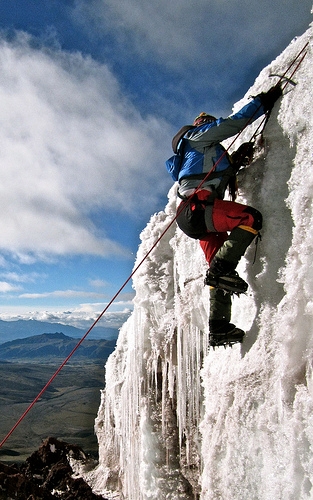
After dinner, beef and rice, Stonie and I crawled into our sleeping bags in an attempt to sleep until midnight. Wrapped up, my feet were freezing in my thick, woolen socks. My body rattled as I tried to coax myself to sleep.
A few hours of broken sleep later and we were awoken at midnight by the movements of other climbers in the refuge readying their gear. The wind rapped against the refuge, the sound of huge ocean waves crashing on the shore, as the windows shook in resistance.
We tied our boots, gathered our layers, harnesses and ice picks and found Sergio downstairs consulting with the other guides. When he saw us, he came over. “We think the weather is too bad, so we eat something and see again at 1 a.m. If it is not better, maybe we go down.”
We were silent. We hadn’t come all this way to go back down at one in the morning. But, what could we say? So we ate our yogurt and muesli, waiting quietly.
Within 30 minutes, some groups prepared to leave, so we followed suit. We dressed ourselves layer upon layer, topping our thermals with fleece, topping our fleece with water-resistant trousers and coats, wrapping a scarf around our necks, a balaclava over our heads, crowned with a beanie, held on with a head lamp. The only parts of our bodies showing were our eyes, like doormen looking out the peephole of a speakeasy.
Sergio nodded. “We hike to the glacier, and then decide if we go more.”
We stepped out into the blizzard and headed for the trail in darkness, defying Mother Nature’s wrath. We climbed extremely slowly. I focused on Sergio’s footsteps in front of mine and matched his pace. Stonie breathed deeply behind me, his footsteps falling in the same steady pattern.
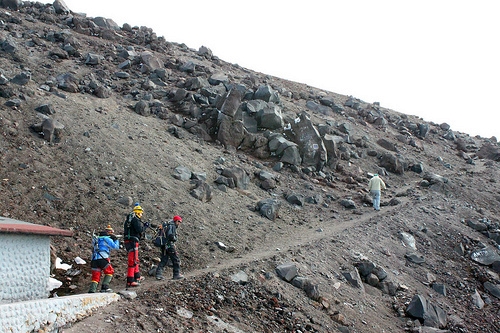
In an hour, we came to the glacier. Without question, we fished our crampons out of our packs, rehydrated and stepped onto the glacier, tied together in our harnesses.
We followed the vague white trail Sergio lead us on in silence and began to switch back, left to right, back and forth, slowly rising. It was then the wind really became difficult to battle. Every turn into the wind, it pounded against my body, making the effort twice as difficult as snow flurries stung my tormented cheeks. Then every turn the opposite direction, walking with the wind, the brutal gusts shoved me, occasionally knocking me completely off balance. I would catch myself with my ice pick. Stonie would help me stabilize, and we would continue.
We climbed for two hours, taking short rests now and again. The skepticism had been playing on my mind, between a therapeutic, silent counting and matching my steps with my inhalations and exhalations. I became certain I couldn’t make it to the top.
“I can’t do this,” I finally confessed to Stonie and Sergio, shouting through the storm. “I’m not going to be able to do this for, how much further?” I asked, turning to Sergio.
“We are about 16,000 feet. I think maybe five more hours.”
“Five hours!” I exclaimed. Impossible, I thought, with the gale wind’s unceasing assaults.
“Let’s just take it a little at a time,” Stonie said, encouragingly. “I know this sucks. I’m miserable, too. But imagine the gratification when we reach the summit.”
“If we actually reach the summit, we won’t be able to see anything! It’ll be a white out once there’s any daylight. Will we see anything, Sergio?”
He looked upward, as if he could see the view of the top. “No, probably not.”
However, we continued climbing for 30 minutes more, then we stopped to hydrate. I picked at the ice matted in the tiny lock of hair that had made its way out of my balaclava.
“I don’t want to do this,” I said, looking to Stonie. He said nothing. “I don’t think there’s any shame in going back. We’ve been climbing for over three hours and, if anything, the conditions have got worse.”
“If you want to go back, we’ll go back,” he said, conceding defeat.
Sergio’s last debriefing words rang continuously in my ears, “The most important thing is you have a good time. This is your holiday and I want you to enjoy.”
“It’s just that, there will be no satisfaction once we’re at the top. We’ll look around, barely able to open our eyes, slightly delirious; we’ll turn around and have to climb down for another five hours. This is not what I had in mind. If we had the eye of the crater to look forward to, yes. Views of Chimborazo, yes. Anything further than a few feet in front of our faces, yes! But, this! This is shit!”
“Okay,” Stonie said, his shoulders collapsed. “Okay.”
“You’re not mad?”
“No, of course not sweetheart.”
“You’re not terribly disappointed?”
“Well, yeah. I am, but not in you. I understand where you’re coming from.”
He took my gloved hand and squeezed reassuringly. “I’m sorry,” I said.
We turned to Sergio who asked, “So, we go down?”
We nodded.
“Well guys, congratulations! You made it to 17,000 feet.”
At that, we made our way back down, our joints disputing every downhill step we took, our crampons securely insuring we wouldn’t slide down the glacier. We walked in silence back to the refuge, feeling disappointment with each stomp, but also feeling immense relief. It took about an hour and a half to make it back down, fighting the snow and the gale winds on our descent.
At 4:30 a.m., we sat in Refugio José Ribas and sipped a satisfying, well-earned cup of peppermint tea, drained and at loss for words.
By Angela Allman

About the Author
 Angela Allman is a writer and full-time traveler who gets her kicks from scuba diving, snowboarding, listening to music and napping. She now spends her time in English pubs, toasting pints to the blank page, which you can find at TravelingAnge.com.
Angela Allman is a writer and full-time traveler who gets her kicks from scuba diving, snowboarding, listening to music and napping. She now spends her time in English pubs, toasting pints to the blank page, which you can find at TravelingAnge.com.
The post My Failed Attempt To Conquer Cotopaxi appeared first on The Expeditioner Travel Site.
]]>The post My Encounter With Keith, The Chocolate Shaman Of Guatemala appeared first on The Expeditioner Travel Site.
]]>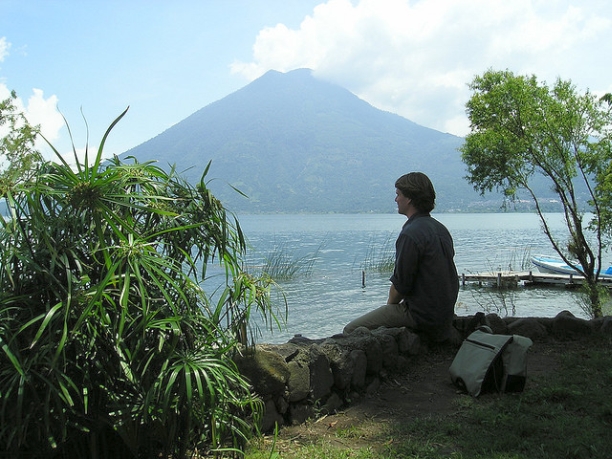
The mist smells of banana leaves and wood smoke, the scent of the Guatemalan highlands when it rains. Mothers carry firewood on their heads and get knocked around by a downpour that’s like bowls of dirty water being thrown from the sky. Village children in hand-woven clothes hide under a tree and squeal as workers get soaked. Clouds shroud the mountains around the lake. As I traipse past a tienda, young Mayan girls twirl floury tortillas and toss them on the hot iron skillet next to the crackers and bottles of Coke. In and out of the shop wander flea-bitten dogs who take over the streets at night, fighting in packs and howling into the grey dawn.
I reach the Chocolate Shaman’s cottage on the village outskirts in the early afternoon. There are a lot of us there — maybe 25. You could take a snapshot of the people sitting on the shabby porch and think it was a postcard from the 1960’s. No Guatemalans, just plenty of folk my age born decades too late; dreadlocks, tie-dye t-shirts and crystals threaded on string around their necks. I recognize most of them — I’ve been taking Spanish lessons in the village for the past week, and most of them work in the cafes and meditation centers by the lake. The tourists left as soon as the rains came at the end of May.
A little American kid with long, tangled hair sits quietly on the tiles under the banana plants. He seems so fragile sitting there. Everyone huddles together on the peeling benches or cross-legged on the floor. A happy buzz floats in the air as the regulars catch up with each other. Having lived around the shores of Lake Atitlan for a month or a year, most everyone knows each other, and most come week after week for the Chocolate Shaman’s group sessions on Wednesdays and Sundays. I am not part of the scene, just listening in on the conversations happening around me.
“I wasn’t going to come today,” says an American woman in her forties with the faded green swirls of tattoos on her forehead and chin, “but the stars were so good, you know, how could I not?”
“I know, right?” says a little sparrow of a Spanish girl, her brown eyes too big for her delicate face. “I swam in the lake today, my hair is getting so healthy out here.”
“It’s the cold water,” says the older woman, “I haven’t washed my hair with shampoo for years, I only wet it once a month when I put in henna.”
“Your hair’s perfect,” says the girl.
“It washes itself, right? I never use soap or moisturizer either. Just cold water. My skin’s never been better.”
Eventually, Keith the Chocolate Shaman comes out of the crusty kitchen and looks behind us to the volcanoes across the lake; they possess all the spiritual energy in the world he says.
With his wispy, white long hair, Keith is an American chocolate wizard. Keith is Dumbledore: ancient, thin and long-limbed. As he folds himself into the cushioned chair by the kitchen door and welcomes us in, I take in his papery white skin and blue eyes so alive behind the glasses. I can’t tell how old he is. Sixty? Ninety? He’s been travelling all his life but there is still a youthfulness traced in his narrow features.
One of Keith’s chocolate helpers is Kurt, the Californian manic who looks like an all-knowing, pierced sewer rat. Last night at the party in the bar I went to, he led San Marco’s souls into a wild percussion dance under the garden’s soaking avocado trees, chanting in time with the tambourines.
Kurt and Keith hand out the 100%-cocoa drink in colorful plastic beakers. There are tubs of brown sugar and chili sauce being passed around for extra kick.
In his warm voice, Keith tells us how the the powerful Mayan Cocoa spirit came to him years ago in a dream. She asked him to wait for a sign from her. A few weeks later, while volunteering on a botany project in Guatemala’s coastal rainforest, he noticed cocoa trees growing everywhere. He learned about the use of cocoa as a drug by searching the web, brought kilos of the stuff back down from the rainforest, and so came the incarnation of Keith the Chocolate Shaman.
“The cocoa is not a hallucinogenic, which has made many overlook its powers, but boy, this stuff, it’ll speed up and open your heart and mind, and what we’re going to see today might just be the most beautiful thing in the world.”
I drop some chili into the acrid brown liquid and swallow back the harsh mix.
“Chocolate brings the door but doesn’t push you through it,” Keith continues. If you really want to stay safe in your rational mind, nothing but a good buzz will happen.”
While we wait for the cocoa to mess with our hearts, Keith tells us some stories. Back in his Woodstock days, Keith made money running workshops that taught hippies how to survive on their travels, including teaching girls how to pee in the woods. He smiles and shows us how, making a lewd gesture with his long, bony fingers. In the early nineties, he worked as a therapist in New York City with gay men who were HIV positive, some of the most creative people he ever met. Then he moved on to work in one of America’s highest-security prisons with men who would die in prison. Now he is solving the problems of navel-gazing backpackers, and I can’t help but think that’s a waste.
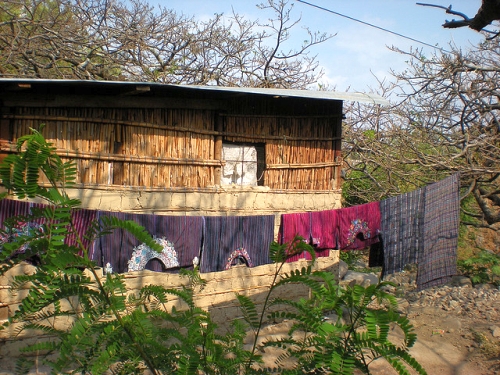
“It’s time, close your eyes,” says Keith in his brown cords and crumpled t-shirt. “Imagine a ball of light. Smile until it becomes real. Oh, the energy here is so beautiful today. Can you feel it?” He has such a kind, slow voice. I listen, I smile.
“Send the rays of light to someone you love, someone you want to help.”
I think of my best friend and her new baby.
“Go to glow. There you are. They can feel the light, it’s working.”
Then Keith the Chocolate Shaman goes on to talk about how there are two things in the world, love and fear. The polar of fear is intimacy, and the polar of love is that “Hey baby, come over here” kind of lust, and I think I understand that much, but then he goes on to talk about pain bodies and empaths and all these cosmic words I’ve never heard before. I open my eyes hoping to find someone else who looks as lost as me, someone who I can smile at and roll my eyes with, but everyone is smiling benignly with their eyes closed and waving their crystals in the air.
Kurt the Sewer Rat is now sitting cross-legged on the floor, letting out funny “whoooots” and laughing as tears run down his weathered face. I’d already heard that as the cocoa opens our hearts, tears become the base of the chocolate ceremony. Crying into his tie-dyed onesie is the young, mohawked guy from yesterday who sang Bob Dylan under a shelter by the lake — badly. A kind-faced woman with grey hair in a schoolgirl bob howls from under her matted, lilac shawl in the corner. The atmosphere is as dank as the wet earth from which the cocoa beans grow and as heavy as the sound of the rain on the canopy.
Keith begins to single out individuals from his high wicker chair. His voice breaks when he talks with the sparrow girl who was chatting about shiny hair before.
“You’ve been misunderstood since before you were even born.”
She nods with her big sad eyes.
“You’ve always had so much love for everyone around you, wanted them to be happy, so you ate all their shit, their negativity, and no one ever noticed how hard it was for you to love so much.”
Her body shakes from tears as he continues. As Sparrow gets up on her tiny legs to cry in the bathroom, Keith sounds like he is about to cry as he goes around the other souls sitting in front of him. An American woman with a lined, humorless face blinks back tears as she tells Keith in the style of teenage girls around the world.
“I met the first guy I’ve loved in so long, but we can’t be together. I don’t know how I can get through this pain, I just, I just can’t, it hurts so much.”
“He’s scared of your power, you’re such a strong woman,” Keith responds.
Everyone nods. As he continues and the crowd’s nods get stronger, I want someone to jump up and say, “You’re too good for him, girlfriend!” Instead, a sexy hippie girl goes to the broken woman in the corner and waves crystals around her aura. Is the chocolate ceremony just glorified group therapy?
Keith moves on and tries to heal more people. The good-looking older woman who doesn’t wash her hair gets extra special attention. Keith circles the top of her breastbone with one long finger and says, “Let it out, let it out.” She closes her eyes and breathes in deeply, I try the same.
Before I even open my eyes, I know it’s him touching my knee as a fuzzy buzz passes through my whole body. I look into his watery blue eyes and he begins to speak to me in his ancient voice.
“You’ve always had to be a good girl, always a good girl, no one ever wanted to see your heart, your creativity. You had to keep it in, didn’t you?”
I nod, feel tears in my eyes, but I cannot cry.
The Chocolate Shaman would say it’s because I fear breaking through to real happiness. I say I’m sick and tired of this strange, moody place. I say I’m envious of the others at the ceremony who seem able to feel so much more than me. Still, I’d rather laugh until I cry than be here right now.
I look back at Keith and say, “I’m leaving. Sorry.”
By Ailsa ross
[Lake Atitlan by archanas/Flickr; San Marcos by John Barrie/Flickr]

About the Author
 Scottish writer Ailsa Ross is sure she would be a wilderness explorer if she wasn’t so scared of the dark. Most of her adventures take place inside her head, and occasionally abroad, which you can read about over on DreamingOfArgentina.com.
Scottish writer Ailsa Ross is sure she would be a wilderness explorer if she wasn’t so scared of the dark. Most of her adventures take place inside her head, and occasionally abroad, which you can read about over on DreamingOfArgentina.com.
The post My Encounter With Keith, The Chocolate Shaman Of Guatemala appeared first on The Expeditioner Travel Site.
]]>The post Michael Palin: The Greatest British Traveler Of Our Age? appeared first on The Expeditioner Travel Site.
]]>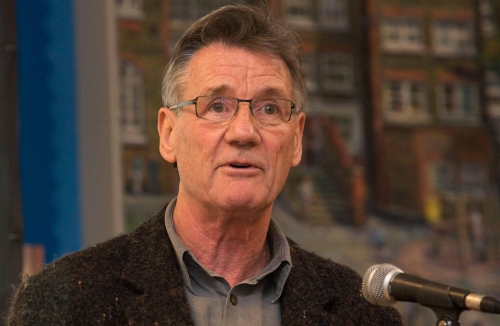
Everyone’s favorite ex-Monty Python member turned traveler turned three-year term as president of the Royal Geographical Society, Michael Palin, is back with a new travel series, Brazil With Michael Palin, which recently began airing on the BBC, and hopefully coming to a local station (or Netflix) soon. Palin, who long ago could have rested on his Python laurels and retired to the Costa Brava like so many of his compatriots, had decided long ago to forge a new career path, that of a traveler, and has improbably turned himself into, as one British newspaper called him, “the great British traveler of our age.”
In a recent interview with the UK Independent, Palin describes how his newest series in Brazil was a change from his normal format in that he focused solely on one country over four episodes, whereas in the past he focused on particular themes to dictate his travels (Around the World in 80 Days, Hemingway, New Europe). “I’ve never done a series in one country before. I’ve often thought that we travel too fast . . . I felt with Brazil there would be a chance to get to know the country because we were going back there four times, filming over a period of a year. Each time we went back, it was like going back to a different country because it was all so different.”
And lest you think someone who achieved fame and wealth so early in life had little to learn about the world come the age of 46 when he filmed his first travel series, think again. Travel, it seems, affects everyone in profound ways, fame or no fame.
It’s a bit like when you’ve bought a car and you suddenly see everyone on the road has the same car as you. You notice things related to where you’ve been. Lots of places in the world mean more to me now than they would if I hadn’t been there. I went to Pakistan just after 9/11 and you thought you’d probably be beaten up on the street — but not at all. They want to know about you, why you’re there; you’re not armed therefore not a threat. You can go to most countries and find that people are operating on the level of human contact — they have families, they have children, they want to get their food from the market, simple things that we all do — and that’s what keeps the world going.
For those of us not in the U.K., rest assured, his entire travel back catalog is available on Netflix.
The post Michael Palin: The Greatest British Traveler Of Our Age? appeared first on The Expeditioner Travel Site.
]]>